
- Date Converter
- Nepali Unicode
- Preeti to Unicode
- Unicode to Preeti
- Digital Marketing
- Entertainment

Essay About Dashain Festival

Dashain festival is one of the greatest festivals in Nepal. It is celebrated with great joy and jubilation. Dashain is celebrated by the Hindu followers all over Nepal. It is the festival that brings happiness and delivers the message of unity among people. This festival signifies unity, the victory of truth, and the inception of happiness.
Dashain generally falls in Nepali Month Aswin( September ) lasts for 10 days. Each day has special rituals and activities to be performed. The festival starts from Ghatasthapana and ends at Vijaya Dashami. On Ghatasthapana, people sow rice and barley seeds on the pious corner of their house to grow seedlings called Jamara.

The first nine days of the festival are popularly called Navaratri. The goddess Durga is worshipped during this period. The 7th day is known as Fulpati and on this day Jamara is brought to the Hanuman Dhoka, Kathmandu from the Gorkha Durbar with the help of the priest. From Fulpati (8th day) until the 9th day, people sacrifice goats, ducks, buffaloes, and other birds & animals to the Goddess Durga. They worship the image of the Goddess Durga, some even visit temples. They do so wishing her blessing for power and prosperity. The main day of the Tika ie. the 10th day is called Vijaya Dashami.
On this day, people receive Tika( red-colored rice seeds ) on their forehead, Jamara on their head along with the blessings of the elder ones. They get blessings for good health, happiness, progress, prosperity, and longevity. People wear new clothes, visit relatives and enjoy delicious food items .
Dashain festival marks the victory of truth over untruth. With regard to this, Hindu scripture defines the two events as the starting of the celebration of the festival. The first one is when the cruel demon, Mahisasur was killed by the Goddess Durga. After this victory, the Dashain festival is believed to be started. Another one is when Ramchandra and Sita returned to Ayodhya after killing the evil Ravan who had kidnapped Sita. The celebration of Dashain has social and religious importance. It is an occasion of peace and goodwill.
📌 Another Essay – Essay on Importance of English Language
It is the festival in which family members gather and enjoy together. They forget their worries and indulge themselves in feasting and joy. Schools, offices, organizations, etc. remain closed during the time and people far away return back home for the festive celebration with their kith and kins. Despite this, Dashain has a dark side too. Numerous birds, animals are killed mercilessly. People engage themselves in taking drinks, different beverages, gambling, and so on. Some people even celebrate in an expensive and pompous style being in prolonged debt. Indeed, celebrating festivals like Dashain gives us complete joy and spreads a true message of brotherhood.
Other Essays
- Essay on Dashain – 800 Words
- Essay on Tihar – 800 Words
- Essay in Importance of Education
Share this:
Read also related posts, privacy overview.
| Cookie | Duration | Description |
|---|---|---|
| cookielawinfo-checkbox-analytics | 11 months | This cookie is set by GDPR Cookie Consent plugin. The cookie is used to store the user consent for the cookies in the category "Analytics". |
| cookielawinfo-checkbox-functional | 11 months | The cookie is set by GDPR cookie consent to record the user consent for the cookies in the category "Functional". |
| cookielawinfo-checkbox-necessary | 11 months | This cookie is set by GDPR Cookie Consent plugin. The cookies is used to store the user consent for the cookies in the category "Necessary". |
| cookielawinfo-checkbox-others | 11 months | This cookie is set by GDPR Cookie Consent plugin. The cookie is used to store the user consent for the cookies in the category "Other. |
| cookielawinfo-checkbox-performance | 11 months | This cookie is set by GDPR Cookie Consent plugin. The cookie is used to store the user consent for the cookies in the category "Performance". |
| viewed_cookie_policy | 11 months | The cookie is set by the GDPR Cookie Consent plugin and is used to store whether or not user has consented to the use of cookies. It does not store any personal data. |
... Search Here ...
Office address.
Kathmandu Nepal
Email Address
[email protected]
Essay on Dashain (दशैं) in English and Nepali Language in 200-300 Words
- April 26, 2023
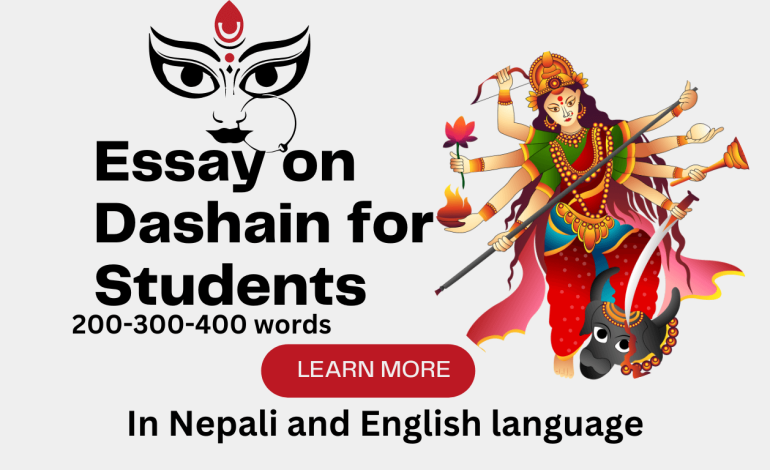
Table of Contents
Essay on Dashain in english language
Dashain, also known as Vijaya Dashami, is the biggest and most important festival celebrated in Nepal. It is a fifteen-day-long festival that falls in the months of September and October, and it is celebrated with great enthusiasm and fervor by people of all age groups and social backgrounds in Nepal.
Dashain is a festival that symbolizes the victory of good over evil. The festival is dedicated to the goddess Durga, who is believed to have defeated the demon Mahishasura. The festival also marks the end of the harvesting season and the beginning of the winter season in Nepal.
The first day of the festival, known as Ghatasthapana , is dedicated to planting a pot of barley seeds. The pot is kept in a sacred room, and it is watered every day until the tenth day of the festival, which is known as Vijaya Dashami . On this day, the barley shoots are about six inches tall, and they are used in various religious ceremonies.
The festival is celebrated with great pomp and show, and people prepare themselves for the occasion weeks in advance. Houses are cleaned and decorated with colorful lights, and people buy new clothes and jewelry for themselves and their loved ones. Special foods and sweets are prepared for the festival, and people exchange gifts and greetings with their friends and family.
One of the most important aspects of the festival is the tika ceremony, which takes place on the tenth day of the festival. It is a ritual where elders put a red vermillion paste on the forehead of their younger relatives as a blessing for their well-being and prosperity. This ceremony is a symbol of love, respect, and gratitude towards one’s elders.
Another important aspect of the festival is the playing of traditional music and dance performances. People gather in large groups to perform various folk dances, and musicians play traditional instruments such as the dhol and madal . These performances are a symbol of the rich cultural heritage of Nepal.
In conclusion, Dashain is a festival that brings people together to celebrate their culture, traditions, and values. It is a time for joy, happiness, and sharing, and it is a symbol of the unity and diversity of Nepal. The festival has great significance in the lives of the Nepalese people, and it is celebrated with great enthusiasm and fervor every year.
Essay on Dashain( दशैं ) In Nepali language( दशैं निबन्ध )
दशैं , जसलाई विजयादशमी पनि भनिन्छ, नेपालको सबैभन्दा ठूलो चाड हो। नेपाली मूलका हिन्दुहरूले विश्वभर मनाउने यो सबैभन्दा ठूलो र लामो चाड हो। यो प्रायः आश्विन महिना (सेप्टेम्बर/अक्टोबर) मा पर्छ। आश्विन सबै नेपालीको मुहारमा खुशी र मुस्कान ल्याउने महिना हो । यस समयमा सबै निजी र सरकारी संस्थाहरू बन्द हुनछन्। दशैं अमावास्यादेखि 10-15 दिनसम्म मनाइन्छ जसलाई घटस्थापना पनि भनिन्छ, पूर्णिमाको दिन कोजाग्रत पूर्णिमा भनिन्छ। यी दिनहरूमा घरबाट टाढा रहेका मानिसहरूले आफ्नो ठाउँ आउन समय पाउँछन्। यो रमाईलो, ठूलो उत्साह, चासो र अत्यधिक खुशीको पर्व हो।
दशैंको समय निकै रमाइलो हुने र मौसम सफा र हल्का हुने भएकाले सडकमा धुलो पनि हुँदैन । कृषकहरूले रोपाइँको थकित मौसमबाट आराम र राहत पाएका हुन्छन्। यस् समयमा दुर्गाले जनतामा भय र आतंक फैलाउने ‘ महिषासुर ’ नामक दुष्ट राक्षससँग लडाइँ हुन् । दशैंमा हामी असत्यमाथी सत्यको र अन्यायमाथि न्यायको विजयको सम्झना गर्छौँ । पहिलो नौ दिनमा शक्ति र विजयकी देवी नवदुर्गाको पूजा आराधना गरीने गरिन्छ । देवी दुर्गालाई समर्पित मन्दिरहरू सधैं भक्तहरूले खचाखच भरिएका हुन्छन्। चण्डी, सत्ययुगमा देवताहरूले भूतहरूमाथि प्राप्त गरेको विजयको कथा, यसको पवित्रता र पवित्रताको लागि पढाइन्छ। दुर्गा माताको पूजा गरेपछि त्रेतायुगमा भगवान रामले विजय प्राप्त गरेको जनविश्वास छ । बिदा पर्वको समयमा विजयादशमी , पर्वको दशौं दिन मुख्य दिन हो। यो एक दिन हो जब मानिसहरूले आफ्ना वरिष्ठहरूबाट आशीर्वाद लिन्छन् र रातो टिका, जमरा र आशीर्वाद लिन्छन्। हिन्दू संस्कृतिमा रातो टिका भाग्य र विजय दुवैको प्रतीक हो। दशैं पारिवारिक जमघट र चाडपर्वको समय पनि हो । यो सिजनमा विदेशमा रहेका मानिसहरु आफ्नो घर वा देश फर्कने गर्छन् ।
मानिसहरू आफ्नो परिवारलाई भेट्न जान्छन् र आफ्नो विवाद र गलतफहमीहरू पछाडि राख्छन्। केटाकेटीहरूले विशेष गरी यो चाडको आनन्द लिन्छन् किनभने यसले उनीहरूलाई लगभग ३० दिनको छुट्टी, उत्कृष्ट खाना, आफ्ना भाइबहिनीहरूलाई भेट्ने मौका र नयाँ लुगाहरू दिन्छ। परिवारका वरिष्ठ सदस्यहरूले सामान्यतया उनीहरूलाई दक्षिणा , एक प्रकारको उपहार र आशीर्वादको रूपमा नगद दिन्छन्। परिवारहरू भेला हुन्छन्, र केही खेलहरूमा भाग लिन्छन्। गाउँमा मनोरञ्जनका लागि बाँसका बलियो झुलाहरू पनि बनाइन्छ। चङ्गा उडाउँदा आकाश चङ्गाले भरिएको हुन्छ र रंगीन हुनछ। मानिसहरू नयाँ लुगा लगाउँछन् र मासु, पिटेको चामल, चकलेट, मसला र सेल रोटी खान्छन्। मालश्री संगीत बजिरहेको हुनछ। नतिजाको रूपमा, यो उत्सवले नेपाली जीवनशैलीलाई बलियो रूपमा प्रतिनिधित्व गर्दछ।
दशैं परोपकारको पर्व पनि हो । रेडियो, टेलिभिजन र पत्रपत्रिका जस्ता सञ्चारमाध्यमहरूद्वारा मनिसहरूको आफ्नै र प्रायोजित स्रोतहरूबाट शुभकामना र अभिवादनहरू प्रसारण वा प्रकाशित गर्छन् । काठमाडौंको टुँडिखेलमा फूलबारीसँगै गोली प्रहार भएको हुन्छ । राष्ट्र प्रमुखबाट टीका ग्रहण गर्ने चलन आम जनतामा छ ।तर दशैंले केही पापहरूलाई बढावा दिन्छ। यो पर्व धेरै मानिसहरुले भव्य रुपमा मनाउने गरेका छन् । उत्सवहरू प्रायः महँगो हुन्छन्। झगडा, झगडा र दुर्घटनाहरू प्रायः अत्यधिक रक्सी र जुवाको कारणले हुन्छन्। दशैंले गरिबलाई खुशी दिँदैन। उनीहरूलाई परम्परागत चाडपर्वहरूको लागि तिर्न निकै चुनौतीपूर्ण लाग्छ। कतिपय मानिसहरूको ज्यादतीले उनीहरूलाई दिवालिया बनाउँछ। देवीले केही उत्कृष्ट बलिहरू प्राप्त गर्नुभएको छ। दुर्घटना, खाद्य विषाक्तता, र अपच सामान्य मानव त्रासदीहरू हुन्। दशैंअघि पकेटिङ, डकैती, चोरीजस्ता कैयौं अपराधहरू हुने गर्छन्। चाडपर्वको अघिल्लो दिन र राति बजारमा भाउ बढ्छ ।
About Author
Roshan a passionate writer and creative thinker who excels in crafting captivating, educational, and inspirational stories with a keen eye for detail and a commitment to providing interesting information.

BLE Result 2079: Check Your District-Wise 8th Grade Exam Result Online
Upcoming toyota cars: a comprehensive guide to the latest models, leave a reply cancel reply.
Your email address will not be published. Required fields are marked *
Save my name, email, and website in this browser for the next time I comment.
Recent Posts
- How to Apply Driving License Form Online | applydl.dotm.gov.np
- Canva Pro Team Invite Link Free 2024: Design and Collaborate with Ease
- Bajaj NS 200 Price In Nepal – Images, Mileage, Colours
- Bajaj Dominar 400 Price in Nepal | Top Speed, Mileage, and Features
- Bajaj Bike Price In Nepal: All 12 Models Price List
Related Posts
Essay about My Country Nepal | 200,300,400 words
Nepal is a country located in South Asia, between India and China. It is a
Grading System of Nepal |SEE Result
SEE stands for the Secondary Education Examination, which is a national level examination conducted in

From Resume Rookie to Pro: How to Build a Professional CV that
When you’re applying for a job, your CV (short for “curriculum vitae,” Latin for “the
- Practice Test
Essay on Dashain
Akancha Chhetri
Content Writer | Updated: June 8, 2024 10:38 NST
Dashain is also called 'Bada Dashain' or ' Vijaya Dashami'. It is generally celebrated by the Hindus in the months of Ashwin or Kartik of Nepali year or October according to the lunar calendar.
Dashain is celebrated as the symbol of victory of virtue or truth over sin or falsity. According to Hindu Mythology, the Dashain festival has been celebrated since Lord Ram and Goddess Durga had gotten the victory over Ravan and demons respectively. Durga is worshipped as the goddess of strength.
Dashain festival is celebrated for fifteen days, but all days are not equally important. The first day is ' Ghatasthapana ' on which people sow the seeds of barley, maize, wheat to use the seeding of these seeds and puts them in the dark corners to grow yellow. The seedlings are called ' Jamara '. The seventh day is ' Phoolpati '. On this day 'Goddess Durga' is worshipped. People bring various fruits and flowers to Durga Temples. The eighth day and ninth day are called " Maha Asthami " and " Maha Nawami " respectively. On this day People offer the sacrifice of different animals such as he-goats, he-buffaloes, etc.
The tenth and the most important day of Dashain is " Vijaya Dashami ". All junior members receive 'Tika' on their foreheads from their elders and ' Jamara ' over their ears. On that day, elders bless them for their good health, prosperity, and long life. The last day to bid farewell Dashain is " Kojagrat Poornima ".
During this festival, all offices, schools remain closed for at least ten days in Nepal . Those who are away from their home return back to celebrate this festival with their family. Everybody looks happy and the weather is pleasant, neither too cold nor too hot. People enjoy different delicious food, new clothes, swings(ping), etc. Especially, children are happiest because they are provided with new clothes and crisp notes when they receive Tika. Everybody in the family gathers together and share their experience. The festival offers us a chance to strengthen brotherhood, mutual co-operation, and good relations.
Dashain festival helps us to enhance our joy, but some people regard it as a competition by borrowing money. We must swallow the bone, according to our throat. It is also not good to sacrifice innocent animals during the festival in the name of goddess Durga. We must understand that goddess will not be satisfied by killing those creatures, but if we kill our evil thoughts and behaviors. Only after that, Dashain can be blissful for everyone.
You may like: Essay on Nepal Essay on Tihar
- +2 Science colleges in Nepal
- +2 Science colleges in Kathmandu
- +2 Science colleges in Bhaktapur
- +2 Science colleges in Lalitpur
- +2 management colleges in Nepal
- +2 management colleges in Kathmandu
- +2 management colleges in Bhaktapur
- +2 management colleges in Lalitpur
- +2 management colleges in Pokhara
- +2 management colleges in Butwal
- +2 management colleges in Chitwan
- +2 Law colleges in Nepal
- +2 Law colleges in Kathmandu
- +2 Law colleges in Bhaktapur
- +2 Law colleges in Lalitpur
- +2 Law colleges in Pokhara
- +2 Law colleges in Butwal
- +2 Law colleges in Chitwan
- A Level Science Colleges in Nepal
- A Level Management Colleges in Nepal
- BSc.CSIT Colleges in Nepal
- BIM Colleges in Kathmandu
- BCA Colleges in Bhaktapur
- BIT Colleges in Lalitpur
- B.E. in Civil Engineering Colleges in Nepal
- B.E. in Electrical Engineering Colleges in Nepal
- B.E. in Computer Engineering Colleges in Nepal
- B.E. in Mechanical Engineering Colleges in Nepal
- B.E. in Electronics and Communication Engineering Colleges in Nepal
- BBA Colleges in Nepal
- BA Colleges in Kathmandu
- BSW Colleges in Bhaktapur
- BBM Colleges in Lalitpur
- BBS Colleges in Pokhara
- BSc Nursing Colleges in Kathmandu
- Class 11 Entrance Exam
- Nepali Driving License
Be the first to know! Join our newsletter for exclusive updates and news delivered straight to your inbox.
- WishesinEnglish
- Birthday Wishes
- Hindi Wishes Shayari
- Nepali Wishes Shayari
- Write for Us
- Raksha Bandhan | Rakhi | Janai Purnima
Essay on Dashain Festival For Kids & Students Of School & College
Essay on dashain 300 words.
In Nepal, the most significant celebration of Hinduism is called Dashain. It has several names, including Vijaya Dashmi, Dashsera, Durga Puja, and Dasain. The celebration begins on the first day of October and continues for more than 15 days, during which time it is celebrated with equal parts devotion and enthusiasm.
When the Dashain Festival is not observed properly, it results in a great deal of difficulty. The people’s erroneous interpretation of the festival, improper planning of the celebration, and the fact that the festival is held in a location that is geographically remote from places of worship are some of the primary contributors to the festival’s erroneous perception.
The festival was not successful as a result of all of these factors. The following is a list of arguments in favor of your attending the festival’s events:
The celebration celebrates the triumph of the goddess Durga and Lord Rama over every evil force that exists in an individual’s life. It also signifies the end of life as we know it. This is referred to as the “Dashain” holiday. A narrative about Lord Rama and the goddess Durga Mata can be found in several Hindu kinds of literature.
People attend temples and adorn their homes in preparation for the celebration. They bring Jamara, garlands, and lotus blossoms along with them. Lotus flowers are used to adorn the garlands, which are then hung on homes, temples, bridges, statues, and idols. People dress in their national costumes, which are meant to represent proper attire. This event is celebrated with a variety of dances and musical performances during its duration.
Most individuals invest a significant amount of financial resources into preparations for the Dashain celebration. At the festival, attendees will be responsible for manufacturing a variety of things, including but not limited to handicrafts, decorations, paper, cloth, etc.
Vijayadashami is a festival that is celebrated with tika and Jamara on the tenth day of the Dashain festival. The younger was fortunate enough to get the elders.
Essay on Dashain Festival For Kids & Students Of School & College
Essay on dashain festival [1200 words]:-.
Advertisement
Dashain is the biggest festival in Nepal, along with Tihar (festival). Dashain is celebrated by Buddhists, Hindus, and Kirats of Nepal, as well as by the Nepalese-speaking Gorkha Indians of Darjeeling Hills, Sikkim, Assam, and other northeastern states of India and other Bhutan Lhotshampa and Burmese Gurkhas of Myanmar.
It is the longest and most auspicious festival on the annual calendar of Bikram Sambat and Nepal Sambat, which is celebrated by Nepalese in the country and around the world.
It is the most anticipated festival in Nepal , Bhutan, Burma, and northern India’s hills. People from all over the world and from different parts of the country, return to celebrate this festival together with their families.
All government agencies, educational institutions, and private companies will be closed during the ten-day festival. Dashain falls in September or October, beginning with the Shukla Paksha (14-day lunar glow) of the month Ashwin and ending in Purnima, the full moon.
Among the fifteen days in which it is celebrated, the most important days are the first, the seventh, the eighth, the ninth, the tenth, and the fifteenth.
In the Neva of the Kathmandu valley in Nepal, Dashain, traditionally known as Mohani (Newar: मोह्मोह), is celebrated as the most important festival of the Nepalese calendar year Sambat.
The Hindu and Newarene are celebrated with slight differences and interpretations, with Navaratri (Nepal Bhasa: नवरानवर्त), which leads to the tenth day called “Dashami” every nine days, which has a special meaning. Hindu Newars especially revere Goddess Durga and her various manifestations in the Shaktipeeths of the Kathmandu Valley.
Various processions of deities called Jātrā (Nepal Bhasa: जात्ता). In the three cities of the Kathmandu valley. Dashain symbolizes the victory of good over evil.
For the followers of Shaktismus, it represents the victory of the goddess Parvati. In Hindu mythology, the demon Mahishasura had created terror in Devaloka (the world where the gods live), but Durga killed the Rakshas (demons).
The first nine days of Dashain symbolize the struggle between the different manifestations of Durga and Mahishasura. The tenth day is the day Durga finally defeated him. For other Hindus, this festival symbolizes Ram’s victory over Ravan, as told in the Ramayana.
Day 1: Ghatasthapana
It means setting up a potash or a pot, which symbolizes the goddess Durga. On this day, the Kalash is filled with holy water and then sewn with barley seeds. Then, the Kalash is placed in the middle of a rectangular sand block.
The priest begins the bid by asking Durga to bless the ship with his presence. This ritual is performed on time, determined by astrologers. It is believed that the goddess is on the boat during Navratri.
The room in which this ritual takes place is known as Dashain Ghar. Traditionally, strangers cannot enter the room. A family member prays the Kalash twice a day, once in the morning and once in the evening.
The Kalash is protected from direct sunlight, and holy water is offered daily. On the tenth day of the festival, the seed grows up to five or six inches long yellow grass. This sacred herb is known as Jamara. These rituals last until the ninth day.
Day 7: Phulpati
Phulpati is a great celebration that takes place on the seventh day of Dashain.
Traditionally, the Brahmins bring the royal Kalash, banana stalks, Jamara, and sugar cane with red Gorkha cloth, a three-day walk, about 169 kilometers from the Kathmandu valley this day. Hundreds of government officials meet with conventional clothing on the Tundikhel grounds to witness the event.
The king watched the ceremony in Tundikhel, while the Phulpati parade led to the royal palace of Hanuman Dhoka. Then there is a majestic spectacle of the Nepalese army and a solemn shooting that lasts ten to fifteen minutes to honor Phulpati.
The Phulpati are taken to the Royal Palace of Hanuman Dhoka when the event ends in Tundikhel, where a parade takes place.
Since 2008, when the royal family was overthrown, the bicentennial tradition has changed to bring the sacred victim of Phulpati to the presidential residence. The president assumed the social and religious roles of the king after the overthrow of the royal government.
Day 8: “Maha Asthami”
The eighth day is called “Maha Asthami.” This is when the most fierce manifestation of the goddess Durga, the bloodthirsty Kali, is relieved by the sacrifice of buffalo, goats, chickens, and ducks in temples throughout the country. Blood, symbolic of their fertility, is offered to goddesses.
Timely, the night of this day is Kal Ratri (Black Night). It is also common for buffalo to sacrifice themselves that day in the yards of all state treasuries in the country. The ancient palace in Basantapur Hanuman Dhoka is active throughout the night in almost all courtyards with prayers and sacrifices.
At midnight of the same day, the Dasain Ghar, a total of 54 buffaloes and 54 goats, are slaughtered in compliance with the rites. After the blood sacrifice, the meat is taken home and cooked as “Prasad” or food blessed by God. This meal is offered on small plates to the house’s gods and then distributed to the family.
The food for this meal is considered cheap. During the presentation of the Puja, large festivals are held in the homes of ordinary people. The Newar community has an event called “Khadga Puja,” where they make their Puja weapons.
Day 9: “Maha Navami”
This is the last day of Navaratri. Ceremonies and rituals climax on this day. On this day, the official rituals of military sacrifice occur in one of Hanuman Dhoka’s royal palaces, the Kot-Hof.
On this occasion, the state offers buffalo sacrifices among the greetings by the greeting. This day is also known as Demon Hunt Day, as members of the defeated demon army try to save themselves by hiding in animals’ and chickens’ bodies.
10 Diwali Sweets Foods Recipes That Will Sure Boost Happiness in Your Family
In Mahanavami, Vishwakarma, the God of creation, is revered because he believed that all things that help us live must remain happy. Craftsmen, artisans, merchants, and mechanics love and offer their tools, equipment, and blood vehicles.
As it is also assumed that worshiping vehicles prevents accidents throughout the year, all vehicles, from bicycles to trucks, will be honored that day.
The doors of the Taleju Temple are open to the general public only on this day of the year. Thousands of devotees go and respect the goddess on this day. The temple is full of devotees all day.
Day 10: Bijaya Dashami
On this day, a mixture of rice, yogurt, and vermilion is prepared. This preparation is known as “Tika.” Often, Dashain Tika’s weather is different every year.
The elderly place this tika and jam planted in Ghatasthapana on younger relatives’ foreheads to bless them abundantly in the coming years. Red also symbolizes the blood that holds the family together. The elders give “Dakshina” or a small amount of money and a blessing to the younger relatives.

This is observed for five days until the full moon. During this time, families and families come to exchange gifts and greetings. This ritual of taking Tika from all older relatives (even from distant relatives) contributes significantly to community relations renewal. This is one of the reasons why the festival is celebrated with such enthusiasm and enthusiasm.
Day 15: Kojagrat Purnima
The last day of the festival, the full moon day is called ‘Kojagrat’ Purnima. The literal meaning of Kojagrat is “who is awake.” On this day, the goddess Laxmi is worshiped, who is considered the goddess of wealth.
She believes that Goddess Laxmi descends to the earth and showers, who is awake all night and has wealth. People enjoy the night playing cards, and much more.
Animal sacrifices are often the norm at this time, as the festival recalls the mythical bloody battles between “divine” and “demonic” powers. Proponents of animal sacrifice interpret this sacrifice as the symbolic sacrifice of our animal qualities.
Still, those who oppose animal sacrifice emphasize that sacrifice is nothing more than an excuse to quench food/meat appetite.
Essay on Dashain [200 words]
Dashain, also known as Bijayama Daśami, is a Hindu festival originating in Nepal. The festival is celebrated with a lot of pomp and joy. The celebrants are expected to wear many colorful clothes and carry colorful ornamental items and put Dashain Tika on the forehead.
The festival is believed to have originated around five thousand years ago. In some areas of India, it is also referred to as Dashera. In Nepal, it is known as Dashami.
In the Hindu religion, it is considered an auspicious occasion. It is observed on the last day of the summer season. The festival is dedicated to the Goddess of wealth and loves Lakshmi.
She is the main deity in the Hindu religion. There is a wide variety of costumes that are worn during this festival. The devotees wear long hair, which is pulled back in a simple bun. They wear bright orange-colored clothes and adorn themselves with flowers and ornamental items.
The Dashami festival is also referred to as Durga Puja. The devotees light a bonfire and pour a lot of garlands, flowers, and other floral designs. They sing and dance and display different kinds of offerings.
The most popular item being used for this occasion is a lotus. The bonfire is lit, and the celebrant throws lotus flower petals into the fire.
Essay on Dashain [50 words]
Dashain festival, also known as Bijayama Daśhami or Dasara is an occasion for celebrating the victory of Ram over Ravan. It originates in Nepal and is celebrated from August to November in Hindu regions. It is celebrated by putting Dasahmi Tika and Jamara to younger elderly people.
Essay on Dashain [100 words]
Dashain Festival, also known as Bijaya Daśamis, is an Indian festival that originated in Nepal. In India, it’s also known as Dasara. In Nepal, it’s also known as Vijayadashami. The Vijayadashami festival is celebrated on the 10th day of the Dashain as marks the beginning of harvest celebrations.
In Nepal it’s also celebrated on a particular day known as Dashami Day, people of Nepal engage with Jamara and Tika. It’s the largest Hindu festival and is observed on Ashoj and Kartik. Many Hindus believe that the entire harvest period has come to an end.
Related terms
- Essay on Dashain For Nursery
- Essay on Dashain For Class 2-3
- Essay on Dashain For Students
- Essay on Dashain 500 words
By Shishir Acharya
Related Posts
Essay on krishna janmashtami for class 5.

38 Dashain Wishes, SMS, Shayari & Messages for Romantic Lovers
Top 174 dashain wishes and dashain sms for dashain 2081 (2024) in nepali.

Happy Navratri Quotes in Hindi for Relatives

5 Poems About Dashain Festival of Nepal For Students

41 Samples Essay on Dashain in 50 Words in English For Kids Students

Recent Posts
- 5 Best GIF Compressors in 2024 (Free and Paid)
- How Do You Learn Guest Blogging?
- Unlimited Love Messages For Girlfriend
- The Emergence of Safe Gambling Programs in South Africa’s Casino Sector
- Do Guest Bloggers Get Paid?

- Privacy Policy
- Write for Us | The Best Nepali Blog For Guest Posts
© 2023 Wishes, Messages, Travel, Lifestyle, Tips in English, Hindi and Nepali Mount Everest. Legal Support by Quotes .
- Travel, Information And Lifestyle Blog For Nepal & Nepalese People
- Agriculture

Related Articles
Transport office : butwal, lumbini provincial hospital : butwal, butwal chauraha : an economic centre of butwal, leave a reply cancel reply.
Save my name, email, and website in this browser for the next time I comment.
Stay Connected
Latest articles, muktinath dham | a cultural & religious place, jitgadhi fort | a historical site.
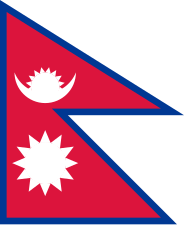
200, 300, 400, & 500 Words Essay on Dashain Festival in English
Table of Contents
Introduction
Diet is an intricate part of Dashain celebrations for Nepalese. Sometimes it occurs in late September, but usually in October. There are many festivals in Nepal, but this is the most significant and longest. In addition, fruits, vegetables, and other foods are abundant during this time of the year. All of the animals receive a healthy diet and are in good health. The Dashain festival is said to celebrate the demons’ victory over the gods.
200 Words Essay on Dashain Festival in English
Dashain is celebrated during this time by Hindus. October is the autumnal month when it falls. A fifteen-day festival is held during this time. Vijaya Dashami and Bada Dashain are also popular names for Dashain. Numerous pujas and offerings are offered to Goddess Durga during Dashain. The celebration brings together people from around the world and from all over the country. Governing bodies and educational institutions are closed.
As the tenth day of Dashain approaches, Vijaya Dashami becomes increasingly meaningful. The elders bless people on this day by giving them tika, Jamara, and blessings for their health and progress. Children wear the latest fashions. Playing swing makes them merry. It appears that people are cheerful and happy. Best wishes and greetings are exchanged.
Ram’s victory over Ravan is commemorated by this festival. Durga, the goddess of goodness, is believed to have blessed Lord Ram with her blessing to enable him to win the battle. The essence of the celebration, however, is the triumph of good over evil. As part of this festival, families, and communities gather to renew ties, as well as to gather together for fun.
300 Words Essay on Dashain Festival in English
Nepal is a secular state, having 125 ethnic groups, subcastes, and religions, and celebrating its Dashain Festival today. Despite its small size, Nepal is quite interesting due to its cultural heritage and tradition.
It is imperative to keep multiple aspects in mind when celebrating Dashain. People gather in Nepal to celebrate Dashain in a festive atmosphere where they can meet and get to know each other.
It is dedicated to the Goddess Durga in Nepal during the Dashain festival. The festival takes place at the end of September or the beginning of October. All things in the world are said to have been created by Brahma. During this festival, people celebrate in hill stations all over Nepal. There are colorful fairs and dances to remember and enjoy during the festival.
In Nepal, Dashain is celebrated by making offerings to the goddess Durga Mata such as Jamara, meat, and red tika. Goddess Durga receives sweetmeats, jamara, and other treats as offerings.
You are supposed to bring delicious and tasty sweets to the Lord of the universe and the Goddess in order to appease them. There is no requirement to offer meat to Goddess Durga’s temple. Everyone is allowed to eat them wherever they want since they are distributed everywhere.
The Dashain festival of Nepal does not only include meat offerings, jamaras, and tikas, but also other traditional rituals. The occasion is celebrated with prayers and songs by family, friends, and elders. The celebrations also include the worship of several deities. Rama and Durga Mata are among the deities worshipped during the Dashain festival.
Nepal’s Dashain festival is celebrated with much enthusiasm and vigor, with a variety of festivities and rituals.
400 Words Essay on Dashain Festival in English
A festival with the same significance as Dashain takes place in Nepal every year. Joy and jubilation accompany the celebration. Nepalese Hindus celebrate Dashain every year. During the festival, people unite in spirit and bring happiness to each other. As a celebration of unity, truth, and happiness, this festival signifies the birth of unity and the triumph of truth.
In Nepal, Dashain takes place during the month of Aswin (September). Rituals and activities are performed every day. Vijaya Dashami follows Ghatasthapana. On Ghatasthapana, people plant rice and barley seeds, known as Jamara, in their pious corner. A popular name for the festival is Navaratri, which lasts for nine days. This period is dedicated to the worship of Durga.
Fulpati is the day on which Jamara is brought from the Gorkha Durbar to the Hanuman Dhoka, Kathmandu, with the priest’s help. A goat, duck, buffalo, and other birds and animals are sacrificed to Goddess Durga between Fulpati (the 8th day) and the 9th day. Some even visit temples to worship Durga’s image. In doing so, they wish her prosperity and power. On the 10th day of the Tika, which is called Vijaya Dashami, there is a festival called Tika.

This day is marked by the blessing of the elders as well as the imposition of Tika (red-colored rice seeds) on the forehead and Jamara on the head. In addition to blessings for health, happiness, progress, wealth, and longevity, they also receive blessings for longevity. In addition to wearing new clothes, visiting relatives and enjoying delicious food, people also wear designer shoes.
Truth triumphs over untruth at Dashain festival. The Hindu scriptures define these two events as the beginning of the festival celebrations. Goddess Durga killed the cruel demon Mahisasur in the first instance.
It is believed that the Dashain festival began after this victory. Similarly, when Ramchandra and Sita returned to Ayodhya after destroying Ravan and rescuing Sita from the evil Ravan. Dashain is an occasion for celebration both socially and religiously. Goodwill and peace are the underlying themes of the occasion.
- 50, 100, 200, & 500 Words Essay on Draupadi Murmu in English
- 300, 400, And 500 Words Essay On Azadi ka Amrit Mahotsav in English
500 Words Essay on Dashain Festival in English
Bada Dashain or Vijaya Dashami are also terms used for Dashain. Hindus generally celebrate it around Ashwin or Kartik, the lunar month of October or the Nepali year.
It is celebrated as a symbol of virtue or truth triumphing over sin or falsehood. As per Hindu mythology, the Dashain festival celebrates the victory over Ravan and demons by Lord Ram and Goddess Durga. Strength is associated with Durga.
Although all fifteen days of the Dashain festival are significant, not every day is equally significant. As part of Ghatasthapana, people sow barley, maize, and wheat seeds in dark corners to grow yellow. ‘Jamara’ is the name given to the seedlings.
Phoolpati is the seventh day of the week. This day is dedicated to the worship of ‘Goddess Durga’. It is common for people to bring owners and fruits. Maha Ashtami and Maha Navami are the eighth and ninth days of the festival, respectively. This day is celebrated by people offering sacrifices of different animals, including goats, he-buffaloes, and others.
On the tenth day of Dashain, known as Vijaya Dashami, there is a great deal of celebration. A ‘Tika’ is placed on the forehead and a ‘Jamara’ is placed over the ear of every junior member by their elders. They receive blessings for their well-being, health, prosperity, and longevity on that day. Dashain is bid farewell on Kojagrat Poornima, the last day of the month.
It is customary for Nepalese schools and offices to remain closed for at least ten days during this festival. This festival is celebrated with family by those who are away from home. People seem to be happy, and the weather does not appear to be too cold or too hot. There is a lot of enjoyment in eating different delicious foods, wearing new clothes, playing swings (ping pong), etc.
The greatest joy Tika brings to children is receiving their first clothes and crisp notes. Family members share their experiences together. Through this festival, we have the opportunity to strengthen brotherhood, mutual cooperation, and goodwill between people.
Some people see the Dashain festival as a competition by borrowing money, but it helps enhance our joy. Depending on the size of our throat, we should swallow the bone. During the festival, innocent animals should not also be sacrificed in the name of goddess Durga. If we kill our evil thoughts and behaviors, goddesses will not be satisfied; rather, they will be satisfied if we kill our evil thoughts and behaviors. It is only after that that everyone can have a blissful Dashain.
Conclusion,
During the Dashain festival, justice triumphs over injustice. In order to rescue Sita, Lord Rama attacked Ravana’s demon. Nepal celebrates Dashain to commemorate this victory.
50, 100, 200, & 500 Words Essay on Swami Vivekananda In English
100, 150, & 300 Words Essay on ‘Nation First, Always First’ Theme in English
Leave a Comment Cancel reply
Save my name, email, and website in this browser for the next time I comment.
- The importance of degree of freedom – Greetinglines
- How to Rewrite Your Essay to Make it Better Than the Original
- Advantages of Digital Marketing For Your Business
- How to Revise and Edit Your Essay Like A Pro
- Best Affordable Memory Foam Mattress By Novilla
Greetinglines
Best Greetings For Loved Ones
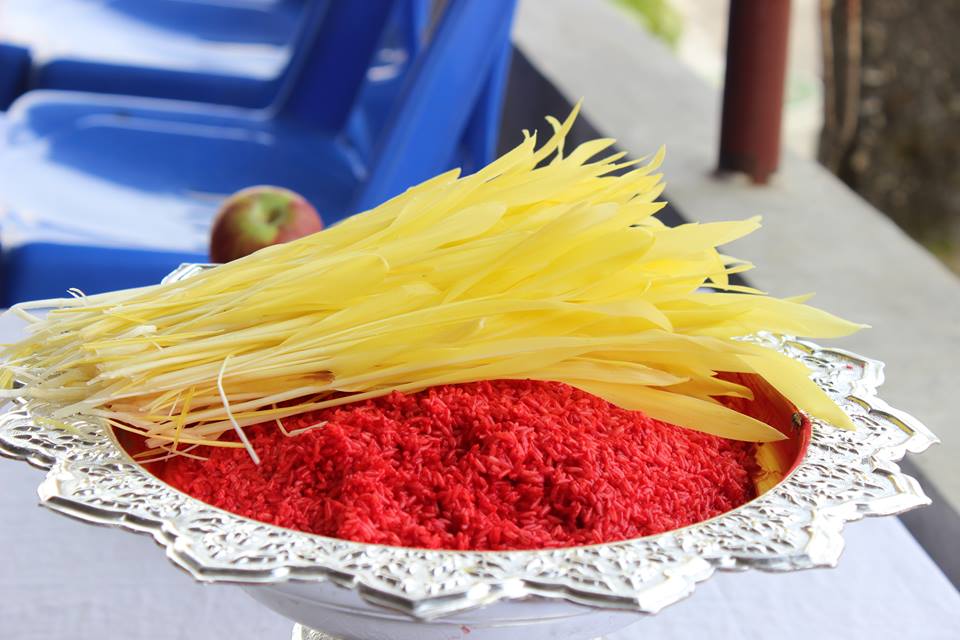
Essay on Dashain Festival – Dashain Festival Paragraph
Essay on dashain festival – 900+ words.
With the variety of cultures and traditions in Nepal, there are also many festivals that come along with it. Nepal especially is a Hindu country with most of its residents being Hindus. And with that, we have a Dashain festival . Dashain is the country’s most widely celebrated festival by all Nepalese. It is not only limited to Hindus but also other people with different cultural backgrounds. Dashain is the longest and most celebrated festival in Nepal. Dashain is also called in different names such as Dasain, Vijaya Dashami, and Dashera (India). Even if the names differ from place to place, people celebrate Dashain with the same zeal and enthusiasm.
In general terms, Dashain is the celebration of the victory of good over evil. This festival symbolizes that the good always prevails over the bad. This festival signifies unity, the victory of truth, and the inception of happiness. It is the most auspicious festival that is celebrated over a fortnight. Nepalese workers working abroad take long leaves and return back to their homes to celebrate the festival. The festival falls in September or October, starting from the Shukla Paksha (bright lunar fortnight) of the month of Ashwin and ending on Purnima, the full moon.
📌 Another Essay – Essay on Pollution
Among the fifteen days on which it is celebrated, the most important days are the first, seventh, eighth, ninth, tenth, and fifteenth. In Hindu Mythology the festival of Dashain represents the victory of the Goddess Durga over the demon named Mahishasura which had created terror in the world where gods lived (Devaloka). The first nine days of the Dashain symbolizes the battle which took place between them while on the tenth day, Goddess Durga finally killed the demon. There is also another mythology where this festival symbolizes the victory of Ram over Ravan which is recorded in Ramayana.
The first day of Dashain is called Ghatasthapana While the last day is also known as Bijaya Dashami. On the first day of Dashain, Ghatasthapana, priests worship and pray to Goddess Durga to bless her presence in a pot (Kalash) which is filled with holy water. The seeds of Barley, wheat, rice are also planted which is later important for the festival. The seventh day of Dashain is known as Phulpati. It is one of the major celebrations occurring In Dashain. In Fulpati, the royal Kalash (bronze pot) filled with holy water, banana stalks, Jamara, and sugar cane tied with red cloth is carried by Brahmans on a decorated palanquin under a gold-tipped and embroidered umbrella.
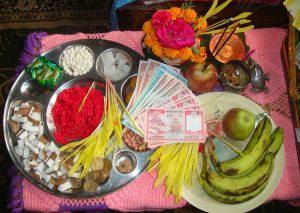
The government officials also join the Fulpati parade. There is also a majestic display of the Nepalese Army along with a celebratory firing of weapons that continues for ten to fifteen minutes honoring Phulpati on the public grounds of Tudikhel. With this, the Dashain feasting starts. The eighth day of Dashain is known as Maha Ashtami. On this day, people start to sacrifice buffaloes, goats, hens, and ducks in temples throughout the nation. This is done to appease the bloodthirsty goddess Kali, who is Goddess Durga’s most fierce manifestation. Animals throughout the nation are sacrificed.
The government also approves of the sacrifice. The amount of sacrifices done is tremendous. After the blood is offered to the Goddess, the meat is taken home and eaten as food blessed by the divinity. The ninth day of Dashain is called Mahanavami. On this day Vishvakarman, the god of creation is worshiped as it believed that all the things which help us in making a living should be kept happy. So on this special day, vehicles and other pieces of equipment are offered fowl blood and prayers are done in hopes of having a safe time wherever. The tenth day of Dashain, Bijaya Dashami is the most awaited day for all.
It is a grand day where People put on new and fine clothes and visit neighbors and relatives (superior) to pay respect and get blessings from elders. The elders put on Tika (a mixture of yogurt, rice, colors) on the forehead of the younger. They are generally red in color as it symbolizes the blood that ties the family together. They bless their younger generation and also hand out sums of money (Dakshina). After putting the Tika on The forehead they also put green plants grown with hybrid seeds of rice, maize, barley, and others. This green plant is Jamara and used as the flower in Dashain. This is a joyous festival where people get together, eat and drink and celebrate to their heart’s content.
They forget their worries and indulge themselves in joy. The schools, offices, workplaces are closed and people come and celebrate the festival with their kiths and kins. The most excited for this festival are also kids. Some get new clothes and eat delicious foods, they get to travel around places to visit their relatives and enjoy the livelihood. This celebration goes on till the 15th day of Dashain where it ends. The great festival of Nepal ends like this, with great enthusiasm and joy people wait for the next year for the Dashain celebration.
Everything has a dark side, and so does Dashain. People believe that Dashain is a festival for the grand, and everything they do must be grand. It is not necessary to buy new clothes or expensive jewelry or receive and give heavy sums of money. We must celebrate festivals with what we have and celebrate them joyously. People also indulge in heavy drinking and gambling activities as well. Even more so, the amount of sacrifices during this festival is sky-high numbers. There are also protest and campaigns where people urge the government to stop the sacrificial ceremony of the animals and offer fruits instead. The festival of Dashain is to be celebrated with great zeal and is not to be hampered by social evils and malpractices.
Other Essays
- Essay on Christmas Day
- Essay on Teej Festival
- Essay on Health is Wealth

You May Also Like

7 Best Paraphrasing Tools For Rewriting Essays

My best friend essay in English | My Best friend Paragraph, Best friends Quotes !

Future Skills You’ll Need In Your Career By 2030
One thought on “ essay on dashain festival – dashain festival paragraph ”.
Leave a Reply Cancel reply
Your email address will not be published. Required fields are marked *
Save my name, email, and website in this browser for the next time I comment.
- Vijayadashami
Essay on Dashain Festival of Nepal For Kids and Students Of Class Nursery to 10
Happy Dashain 2022! Happy Vijayadashami 2079! Happy Navratri 2022! Happy Durga Puja 2079!
Essay on Dashain [ 300 words ]
Dashain Festival of Nepal, being home to 125 distinct ethnic groups, ethnic sub-castes, and several religions, Nepal is considering a secular state to till the date. Not just withstanding its small size but also in cultural tradition and heritage, Nepal is a bit interesting.
To celebrate the Dashain festival, there are various aspects to note and keep in mind. The Dashain festival in Nepal is not just a festival day but also a chance for people to meet and get acquainted with each other in a festive atmosphere.
The Dashain festival of Nepal is dedicated to the Goddess Durga. It is celebrated in the ending September or early October. it is believed that Brahma is the creators of everything in the world. People celebrate this festival on the hill stations around Nepal. The festival has its colorful fairs and dances to be remembered and observed.
The main focus of the Dashain festival of Nepal is the offering of Jamara, meat and Red Tika to the Goddess Durga Mata. People bring their sweetmeats, Jamara, and other treats to offer it to the Goddess Durga.
People believe that to appease the lord of the universe and Goddess, and you have to bring him delicious and tasty sweets. However, the meat are not necessarily offered on Goddess Durga’s temple. Instead, they are distributed all over the place, and everyone can eat as they please.
- Learn More About History of Dashain Festival of Nepal
Apart from offering meat, jamara and Tika, other traditional rituals go along with the Dashain festival of Nepal. There is a gathering of family, friends, and elders who gather together and celebrate the occasion with prayers and songs. Several deities are also worshipped as part of the celebrations. Some of the deities worshiped in the Dashain festival include Lord Rama and Goddess Durga Mata.
The various festivities and rituals are a part of Nepal’s Dashain festival that is celebrated with much vigor and fervor.
Essay on Dashain festival of Nepal [325 words]
Dashain festival of Nepal being predominantly home to several religious castes, cultures, and other religions, Nepal was called as a Hindu country till today. Dashain is an auspicious Hindu festival celebrated with pomp and show at the early of October. It is also called “Vijaya Dashami, “Bada Dashain.” Dashain is also the most awaited festival in Nepal. This is the time of the celebration of Goddess Durga’s blessings from heaven.
Dashain Festival in Nepal is celebrated with ping, kites, meat, Jamara, red Tika and folk dances, and grandeur. People from all the corners of the country flock towards Dashain for its magnificence. In this festival, people from different members of family gather together to celebrate Dashain festival and Goddess blessings. On this occasion, all different kinds of festivities and rituals are performed.

The Dashain festival is very much famous festival of Nepal and is considered a religious festival. People gather together in the open air and pray to Durga Mata, Goddess of power (Goddess of Shakti) for prosperity and success. They also offer prayers for rain and the coming of a bountiful harvest. Many prayers are recited, and lots of meats, Jamara, Pings, Kites, sweets, fruits, garlands, and offerings are made before Goddess Durga. The Goddess Durga is then granted divine protection.
The most famous festival of the Dashain festival of Nepal is the Dussehra in India. This is the biggest festival in Nepal and is celebrated on the September or October. Every year on this day, Dashain is celebrated grandly in different places. This includes Kathmandu, Pokhara, Lumbini, Janakpur, and Dharan.
To celebrate this grand festival of Dashain festival of Nepal, lots of people from every corner of the country come out to home. As a result, Dashain is celebrated with full of of fun and joy. Vijaya Dashami is the major day of Dashain festival. Vijaya Dashami is celebrated with Green Jamara and red Tika. It is faith that these are the blessings of Goddess Durga Mata.
Dashain Essay [400 words]
Dashain is also known as ‘Bada Dashain or ‘Vijaya Dashamin. It is usually celebrated by Hindus in the months Ashwin or Kartik, or October according the lunar calendar in Nepali communities.
Dashain is a symbol of virtue, truth or victory over sin or falsity. The Hindu Mythology says that Dashain is celebrated since Lord Ram and Goddess Durga won over Ravan, demons, respectively. Durga is revered as the goddess of strength.
Dashain festival is celebrated over fifteen days. However, not all days are equally important.
The first day is called Ghatasthapana . This is where people sow the seeds for wheat, barley, and maize. They then place them in the dark corners to turn yellow. The seedlings are known as Jamara .
The seventh day is Phoolpati ‘. This day, ‘Goddess Durga’ is worshipped. Many people bring flowers and fruits to Durga Temples.
The “Maha Asthami” and “Maha Nawami” are the eighth and ninth days, respectively. This day is when people offer sacrifices to different animals, such as he goats, he-buffaloes and others.
The tenth day and most important of Dashain’s calendar is ” Vijaya Dashami .” All junior members are given ‘Tika’ on the foreheads of their elders, and’Jamara’ on their ears.
Elders bless them on that day for their long lives of good health and prosperity. Last day to say goodbye to Dashain is ” Kojagrat Poornima “.
All offices and schools in Nepal will remain closed during this festival. People who have been away from home celebrate the festival with their families. Everyone is happy, the weather is not too cold or too hot, and everyone looks happy.
People love to eat different foods, new clothes, swings (ping), and so on. Children are especially happy when they get Tika, which is new clothes and crisp notes.
Everyone in the family comes together to share their experiences. This festival gives us the opportunity to strengthen brotherhood, cooperation, and good relationships.
Dashain festival is a way to increase our joy. However, some people view it as a game of borrowing money. According to what our throats say, we must swallow the bone. It is also against the law to sacrifice innocent animals for Durga’s festival.
It is important to understand that the goddess does not want to be satisfied by killing these creatures. She wants us to stop thinking and acting evil. Only then, Dashain will be happy for all.
Leave a Reply Cancel reply
Your email address will not be published. Required fields are marked *
Save my name, email, and website in this browser for the next time I comment.

100 Words Essay on Dashain in English
Dashain is a Hindu festival. It is also known as Bada’dashain or Bijaya Dashami in Sanskrit. It to commemorate the day the goddess Durga killed demons known as Mahishasura – who were killing the world of the gods, the devaloka. People celebrate this festival for 7 days. The people celebrates this festival by rejoicing among relatives, flying kites, playing swings, and cards, and shopping. Apart from these activities, they offer the goat sacrifice in the name of goddess Durga too and they pay their visit to various Durga temples. This is one of the biggest festival in Nepal. Another fact to keep in mind regarding this very event is that Ginger, garlic, cardamom, cinnamon, cumin, nutmeg, coriander, bay leaf, fenugreek and pepper among others are consumed more during Dashain.
Related Posts:

Dashain | Essay | Nepal’s Biggest festival

About Dashain
Dashain , also known as “Bada Dashain” or “Bijaya Dashami”, is a major Hindu religious festival in Nepal. It is celebrated by Nepali Hindus around the world. The festival is also known as Nauratha, which is derived from the Sanskrit term Navaratri which signifies Nine Nights. Hindus in India also commemorate a version of this festival, called Navaratri, Dussehra, or Dashera, with distinct customs and traditions.
When is Dashain celebrated?
Dashain is usually celebrated in Nepal during the month of Ashwin, which usually falls between September and October according to the Gregorian calendar. The festival begins on the bright lunar night (shukla paksha) of the month of Ashwin and ends on Purnima, the full moon, after 15 days of celebration. During the celebration, all government offices, educational institutions, and other offices remain closed. The exact dates of Dashain vary each year based on the lunar calendar.
Dashain 2023 date:
| Nepali Date | English Date | Festival Day Name |
|---|---|---|
| 2080-6-28 | 2023-8-15 | Ghatasthapana |
| 2080-7-4 | 2023-8-21 | Phulpati |
| 2080-7-5 | 2023-8-22 | Maha Ashtami |
| 2080-7-6 | 2023-8-23 | Maha Navami |
| 2080-7-7 | 2023-8-24 | Vijaya Dashami |
Important Days
Although, the festival spans 15 days, the most important days are the first, seventh, eighth, ninth, tenth, and fifteenth. All the important days are explained below:
Day 1: Ghatasthapana
The first day of the Dashain festival is known as Ghatasthapana. It is considered one of the most important days of the festival. The day of Ghatasthapana is the day when the Kalash or pot is filled with holy water and then sown with maize or barley seeds. This day is also the day when the Dashain Ghar is set up.
The Dashain Ghar is a room where the Kalash is placed. The goddess Durga is believed to reside in the Kalash during the Navaratri. The Kalash is kept away from direct sunlight, and holy water is offered to it every day. The Kalash is worshipped twice every day, once in the morning and then in the evening. These rituals continue until the seventh day of the festival. During this time, the barley or maize seeds grow to become five or six inches long yellow grass known as Jamara.
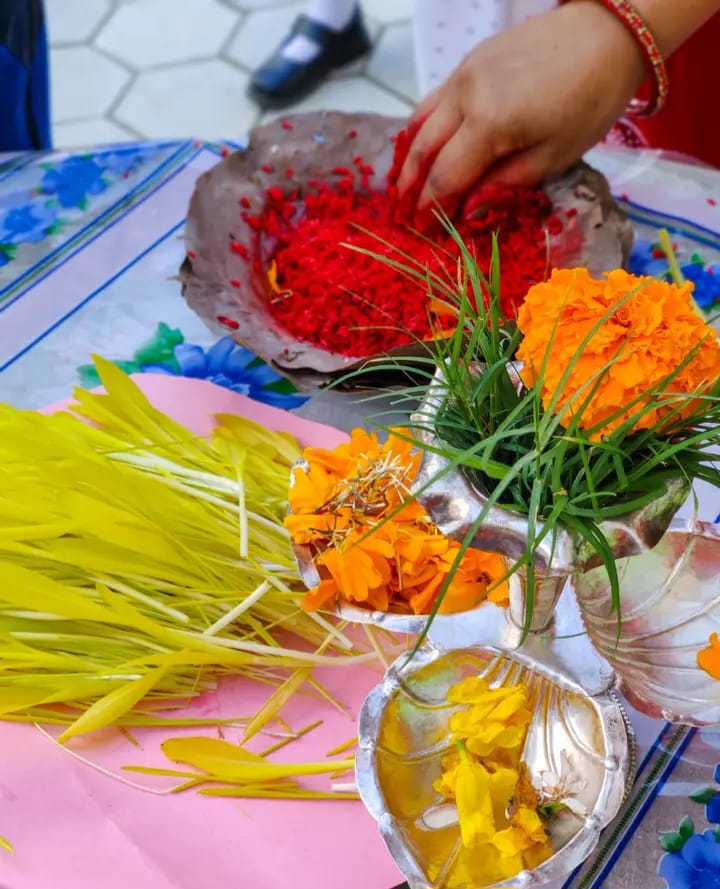
Jamara is considered sacred and received on the tenth day of the festival. The grass is grown in a dark room for nine days, and on the tenth day, it is offered to the goddess Durga.
Day 7: Phulpati
The seventh day of Dashain, Phulpati, is a significant celebration in Nepal. The word “Phulpati” is derived from two words, “Phul” meaning flower, and “Pati” meaning leaf. Traditionally, the royal Kalash, banana stalks, jamara, and sugar cane tied with red cloth are brought by Magars from Gorkha, which is about a three-day walk from Kathmandu. The Phulpati parade is headed towards the Hanuman Dhoka royal palace, where the king used to observe the ceremony in Tundikhel. The Nepalese Army presents a majestic display along with a celebratory firing of weapons that continues for ten to fifteen minutes in honor of Phulpati. The Phulpati is then taken to the Hanuman Dhoka Royal Palace, where a parade is held.
After the overthrow of the royal family in 2008, the tradition was changed, and the holy offering of Phulpati is now taken to the residence of the President. The President has taken over the King’s social and religious roles after the end of the monarchy. The procession of Phulpati is also observed in various other cities and towns across Nepal and in India, where there is a significant Nepali population.
The day of Phulpati is celebrated with traditional Naumati instruments , which add to the festive atmosphere. The Nepalese people participate in the procession with great enthusiasm, and the day is marked with joy and happiness.
Day 8: Maha Asthami
The eighth day of Dashain is known as Maha Asthami. On this day, the fierce form of Goddess Durga, Kali, is worshipped and appeased through the sacrifice of animals like buffaloes, goats, hens, and ducks in temples across the Country. This day is also referred to as Kal Ratri or Black Night after the form of Durga worshipped on this day.
Along with the puja, great feasts are held in the homes of common people on this day. The Newar people, a prominent ethnic group in Nepal, celebrate this day by performing Khadga Puja, where they worship their weapons and seek blessings from their elders.
Day 9: Maha Navami
The ninth day of Dashain, referred to as Maha Navami, is considered the pinnacle of the Navaratri celebrations. It is known as “the great ninth day” and marks the end of Navaratri. Various ceremonies and rituals are performed on this day. One of the most significant events that take place on Maha Navami is the official ritual sacrifices of the Nepal Armed Forces at one of the Hanuman Dhoka royal palaces, the Kot courtyard. Buffaloes are offered as sacrifices, and a 21-gun salute is fired in the presence of the Army Staff. This day is also known as the demon-hunting day as it is believed that defeated demons try to save themselves by hiding in the bodies of animals and fowls.
The Taleju Temple gates are opened to the general public only on Maha Navami. Thousands of devotees flock to pay their respects to the goddess. The temple is filled with devotees all day long, seeking blessings from the goddess. Artisans, craftsmen, traders, and mechanics offer animal and fowl blood to their tools, equipment, and vehicles, in the hope of warding off accidents throughout the year. Therefore, all vehicles from bikes to cars and trucks are worshipped on this day.
Day 10: Bijaya Dashami
On the tenth day of the Dashain festival, known as Bijaya Dashami, a special mixture called “tika” is prepared using rice, yogurt, and vermilion. The tika along with Jamara symbolizes the blessings of abundance for the upcoming year and is applied by elders to the foreheads of their younger relatives. This ritual is an important part of the festival and helps to strengthen family and community ties.
In addition to the tika, elders also give a small amount of money, called “Dakshina”, to their younger relatives as a symbol of their blessings. This tradition continues for five days until the full moon, during which families and relatives exchange gifts and greetings. By taking tika from all of their elder relatives, even distant ones, people renew their community ties and strengthen their bonds with one another.
Day 15: Kojagrat Purnima
Kojagrat Purnima is the final day of the Dashain festival and falls on the full moon day. It is also known as Sharad Purnima, and the term Kojagrat translates to ‘who is awake.’ On this day, people worship Goddess Laxmi, the goddess of wealth, as it is believed that she blesses those who remain awake all night with prosperity and good fortune. It is a common belief that Goddess Laxmi descends to the earth on this day.
People often celebrate this day by staying up all night and participating in various activities such as playing cards and other games.
Music: The Soulful Echo of Malshree Dhoon
Malshree Dhoon: Dashain has its very own harmonious heartbeat – the Malshree Dhoon. This melodious tune serves as a herald for Dashain’s arrival, resonating deeply with the festival’s essence. Originating in the 17th century as a part of the Newa art form, this devotional melody has transcended boundaries to become an integral part of Nepal’s national culture. It now serenades the nation during Dashain, uniting hearts in celebration.
Mantras: Blessings in Sacred Sanskrit
Dashain isn’t just a time for jubilant gatherings; it’s a moment for sacred blessings. As elders apply the auspicious tika (a blend of yogurt, rice, and vermilion) on the foreheads of younger family members, they recite ancient Sanskrit mantras, invoking blessings of good fortune, resilience, and prosperity.
Mantra for Men and Boys
In Devanagari:
आयु द्रोणसुते श्रेयं दशरथे शत्रुक्षेयं राघवे। ऐश्वर्यं नहुषे गतिश्च पवने मानं च दुर्योधने।। दानं सूर्यसुते बलं हलधरे सत्यं च कुन्ती सुते। विज्ञानं विदुरे भवन्तु भवतां कीर्तिश्च नारायणे।।
Mantra for Women and Girls
जयन्ति मङ्गला काली भद्रकाली कपालिनी । दुर्गा क्षमा शिवा धात्री स्वाहा स्वधा नमोकस्तुते ।।
These mantras aren’t just words; they are whispers of blessings that carry the weight of tradition, culture, and spirituality.
Games: Unveiling the Playful Side of Dashain
Kite Flying: As Dashain approaches, the skies of Nepal transform into a canvas of colorful kites. Kite flying isn’t just a pastime; it’s a tradition rooted in the belief that it reminds the heavens not to send rain. People of all ages ascend to their rooftops, shouting ‘changā chet’ as they cut each other’s kite strings.
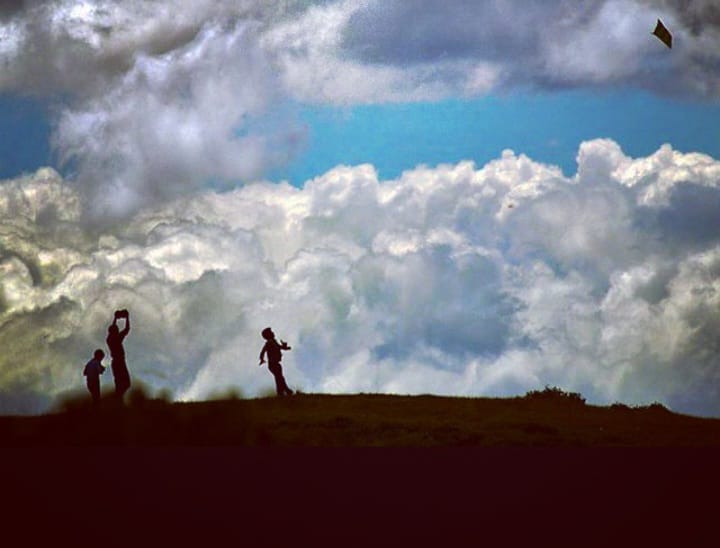
Playing Cards: While children soar with kites, the older generation engages in friendly card games, merging money and merriment. It’s a time for bonding and relishing the festival spirit.
Swings (Ping): Bamboo swings, lovingly known as ‘ping’ in Nepali, emerge across Nepal, embodying local culture and camaraderie. Constructed using traditional methods, these swings are crafted with tough grass ropes, bamboo sticks, and wood. They stand tall as a symbol of unity, joy, and community spirit.
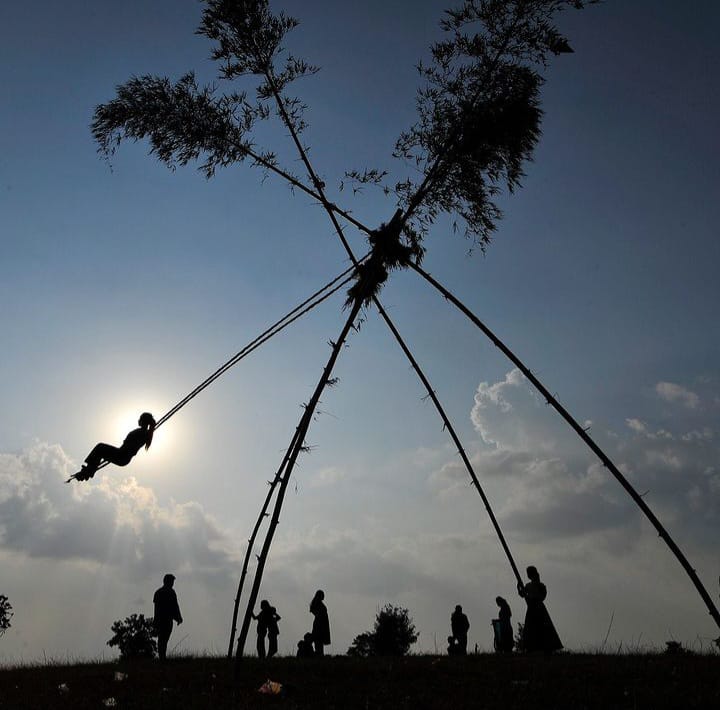
Fairs and Celebrations: Villages come alive with small fairs, featuring Ferris wheels for the young ones and a plethora of entertainment for adults. In the urban landscape, commercial fairs and celebrations paint the town with a festive palette, infusing life and vibrancy into the atmosphere.
The act of buying and wearing new clothes takes on profound significance during Dashain. For many in rural Nepal, it’s a rare opportunity to don fresh attire. Shops offer enticing festival discounts, making shopping an integral part of the celebration. Clothing sales reach their zenith during Dashain.
Dashain feasts are a testament to culinary opulence. Thousands of animals, including buffalo, ducks, and rams, are ritually sacrificed as offerings to appease the goddesses. This age-old ritual is deeply ingrained in Dashain traditions, believed to invoke divine blessings. The demand for meat escalates significantly during Dashain, owing to the plethora of feasts and gatherings.
While Dashain traditions brim with cultural significance, they have not been immune to controversy, especially concerning animal sacrifices. Advocates for animal welfare have called for alternatives, like using pumpkins and coconuts, to minimize harm to animals.
Conclusion: The Essence of Dashain
In conclusion, Dashain is much more than a religious festival. It’s a celebration of unity, family, and tradition. Dashain 2023, with its anticipation and festivity, is a testament to the resilience of Nepali culture and the enduring spirit of its people.
1. What is the significance of Dashain?
Dashain holds great religious and cultural significance in Nepal. It celebrates the victory of good over evil and promotes unity among the people.
2. When does Dashain 2023 begin?
Dashain 2023 begins on the 15th of October and lasts for fifteen days, with Vijaya Dashami falling on the 31st of October.
3. What are the essential rituals of Dashain?
The essential rituals of Dashain include worshipping goddess Durga, receiving tika and jamara from elders, and performing animal sacrifices as offerings.
4. How do people prepare for Dashain?
People prepare for Dashain by cleaning their homes, buying new clothes, and shopping for gifts and offerings.
5. How does Dashain impact Nepali society?
Dashain has a significant impact on Nepali society, boosting the economy, fostering social cohesion, and strengthening community bonds.
Tihar Festival: A Celebration of Lights and Joy
Share this:
Related posts.
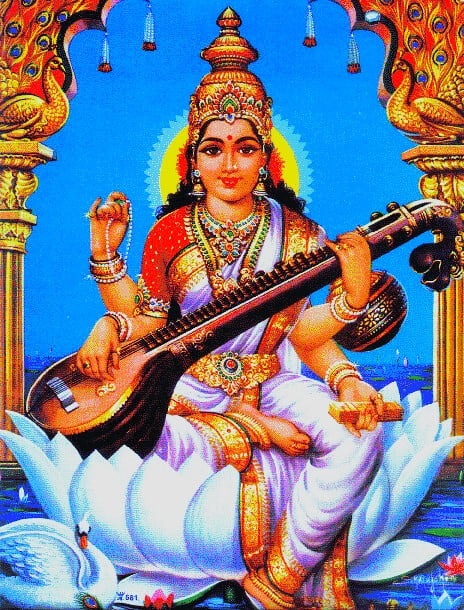
Saraswati Puja 2024 in Nepal: Festival for Goddess of Wisdom

Losar: New Year Of Different Communities
Leave a reply cancel reply.

Nepal Travel Vibes
Be The Adventure
Dashain: A Guide to Nepal’s Most Celebrated Festival

Welcome to Nepal’s most anticipated and cherished festival – Dashain! As the country gears up for this grand celebration, join us on a journey filled with vibrant colors, captivating rituals, and a sense of deep cultural significance. Dashain, also known as Vijaya Dashami , is a 15-day-long festival with immense religious and social importance in Nepal. It symbolizes the victory of good over evil and is a time for Nepalese communities to come together, rejoice, and pay homage to the goddess Durga and other deities.
During this auspicious period, streets are adorned with beautifully crafted swings, vibrant kites fill the sky, and homes are decorated with marigold garlands and auspicious symbols. Families gather to offer prayers, receive tika (a mark on the forehead), and exchange blessings and gifts.
Join us as we delve into Dashain’s various rituals and customs, including the magnificent display of the sacred Jamara, the exhilarating kite flying competition, and the mouthwatering delicacies that dominate the festive feasts. Get ready to immerse yourself in the rich cultural heritage and festive spirit of Dashain, as we guide you through Nepal’s most celebrated and cherished festival.
Table of Contents
Significance of Dashain in Nepalese Culture
Dashain, celebrated with unparalleled enthusiasm, holds a special place in the hearts of Nepalese people. It is not merely a religious festival but a cultural extravaganza that unites the diverse ethnic groups and communities in Nepal. This festival typically falls in September or October, marking the victory of Goddess Durga over the demon Mahishasura, symbolizing the triumph of good over evil.
The central theme of Dashain is the worship of Goddess Durga, who is considered the divine protector of the country. The festival lasts for 15 days, with the last day, Vijaya Dashami, being the most crucial. On this day, elders give Tika and Jamara (barley grass) to their younger family members, blessing them with good fortune, health, and happiness.
The Mythological and Historical Background of Dashain
Dashain Festival, deeply ingrained in Hindu mythology, carries a profound blend of mythological and historical significance. It is a celebration that narrates the eternal triumph of good over evil through a rich tapestry of stories and legends. The primary mythological stories associated with Dashain are as follows:
Goddess Durga and Mahishasura:
In the realm of Hindu mythology, a formidable demon named Mahishasura unleashed chaos and misery upon the Earth. The gods, powerless to confront this malevolent force individually, united their divine energies to forge the warrior goddess Durga. Adorned with celestial armaments, Durga engaged in a relentless nine-day and nine-night battle with Mahishasura. On the tenth day, she emerged victorious, vanquishing the demon and restoring harmony and order to the world. Dashain reveres this victory, with the initial nine days dedicated to the veneration of Durga in her various manifestations. The culminating day, known as Vijaya Dashami, serves as an exultant celebration of her conquest over malevolence.
Lord Rama and Ravana:
Another prominent narrative intertwined with Dashain is the tale of Lord Rama and the demon king, Ravana. Ravana, driven by sinister motives, had abducted Rama’s beloved wife, Sita, and detained her in his dominion of Lanka. Empowered by an army of primates and the divine intervention of Goddess Durga, Rama embarked on an arduous campaign against Ravana. After an intense clash, Rama vanquished Ravana, rescued Sita, and symbolized the ascendancy of virtue over malevolence. The victory of Lord Rama over Ravana is also celebrated on the tenth day of Dashain, Vijaya Dashami.
These timeless narratives have resounding relevance in contemporary Dashain festivities. Throughout the 15 days of the festival, people engage in rituals, invocations, and merriments that pay homage to these sagas. They revere Goddess Durga and implore her blessings while commemorating the ultimate conquest of good over evil. These mythological narratives serve as enduring reminders of the enduring significance of morality, determination, and the omnipotent force of righteousness in surmounting adversity. Dashain, in essence, becomes a living testament to these eternal stories and their resonance in Nepalese culture.
The 15 Days of Dashain: Rituals and Traditions
Dashain, Nepal’s most celebrated festival, is a 15-day extravaganza steeped in rituals, traditions, and observances, each carrying its own unique significance and symbolism. Let’s embark on a journey through these 15 days, exploring the main days and their associated customs:
- Ghatasthapana (Day 1): Dashain begins with Ghatasthapana , the planting of seeds. People create a small altar made of sand and soil, sowing barley, wheat, or corn seeds. This act symbolizes the promise of prosperity, which will be nurtured throughout the festival.
- Days 2-6: Over these days, the worship of Goddess Durga continues. People offer prayers and maintain the altar where the seeds were planted, fostering a sense of spiritual connection throughout the festival.
- Fulpati (Day 7): Fulpati signifies abundance and prosperity. On this day, a procession carries offerings, including flowers, fruits, and leaves, from the ancestral royal palace in Gorkha to the Hanuman Dhoka palace in Kathmandu. Many households also conduct their own Fulpati rituals.
- Maha Asthami (Day 8): This day is dedicated to Goddess Kali, the fierce form of Durga. Maha Asthami involves special prayers, offerings, and the significant but controversial practice of animal sacrifices, both in temples and households, seeking Kali’s blessings and protection.
- Maha Navami (Day 9): The ninth day is dedicated to Goddess Durga and her myriad forms. Offerings and animal sacrifices continue, this time to appease the goddess, as well as to honor the vehicles of various gods and goddesses, such as the elephant, tiger, and bull.
- Vijaya Dashami (Day 10): The pinnacle of Dashain, Vijaya Dashami celebrates the victory of good over evil. On this day, families congregate, and a touching tradition unfolds: younger members receive Tika (a mixture of rice, yogurt, and vermilion) and blessings from their elders. The red, white, and black Tika symbolize power, purity, and knowledge. Many also believe this day to be auspicious for commencing new ventures, hoping for success in their undertakings.
- Days 11-14: The celebratory spirit continues over these days, as families visit one another, exchange Tika, offer blessings, and revel in shared feasts, fostering a sense of unity and togetherness.
- Kojagrata Purnima (Day 15): The fifteenth and final day of Dashain is known as Kojagrata Purnima, or “the night of awakening.” On this day, people worship Laxmi, the goddess of wealth, praying for prosperity and good fortune.
The 15 days of Dashain bring together various cultural elements and practices that not only honor Nepal’s rich history but also strengthen the bonds between family and community members. These rituals and traditions serve as a testament to the enduring significance of the festival, which celebrates the victory of good over evil and the enduring values of unity, spirituality, and prosperity.
Ghatasthapana: The Commencement of Festivities
Ghatasthapana, the first day of the Dashain Festival, initiates the 15-day celebration with significant rituals and customs that are deeply ingrained in Nepalese culture.
Preparation of the Altar: The central act of Ghatasthapana involves the creation of a sacred sand and soil altar, typically placed in a prayer room or a clean, secluded corner of the house. This layered structure symbolizes the various realms of existence as per Hindu cosmology. In the heart of this altar sits the “Kalash,” a small clay or metal pot filled with holy water and covered with cow dung. The Kalash represents a vessel of abundance and prosperity.
Sowing Seeds: Once the altar is prepared, seeds of barley, wheat, or corn are sown on the surface. These seeds, known as “Jamara,” require meticulous care throughout the 15 days of the festival. They are watered daily and kept in a warm, dark place to facilitate their growth, symbolizing life, fertility, and prosperity.
Invocation of Goddess Durga: Central to Ghatasthapana is the invocation of Goddess Durga. As the divine embodiment of power, strength, and protection, Durga is worshipped fervently during Dashain. The rituals on this day encompass offering prayers, lighting lamps or incense, and reciting mantras dedicated to the goddess.
Astrological Considerations: Ghatasthapana is meticulously timed based on astrological calculations. It is believed that commencing the ritual during this specific auspicious window ensures the continued blessings and protection of the goddess throughout the festival.
Ghatasthapana marks the inception of the Dashain Festival, which holds a profound religious and cultural significance. The rituals and customs performed on this day set the stage for the subsequent festivities while invoking the blessings of Goddess Durga for a prosperous and joyous Dashain.
Fulpati: A Celebration of Prosperity and Abundance
Fulpati, the seventh day of the Dashain Festival, serves as a vibrant celebration of prosperity and abundance. This auspicious day features a colorful procession, both at the community level and within households, as well as numerous customs and traditions.
Fulpati Procession: Historically, the royal family would lead the Fulpati procession, carrying offerings from their ancestral palace in Gorkha to the Hanuman Dhoka palace in Kathmandu. This grand procession included offerings like flowers, leaves, fruits, sugarcane, and other elements symbolizing prosperity and abundance. While the monarchy no longer exists in Nepal, the tradition endures, with government officials partaking in the procession.
Household Rituals: Many families throughout Nepal conduct their own Fulpati rituals at home. They assemble a Fulpati assortment, featuring flowers, leaves, and fruits, which is placed on their prayer altars. Prayers and offerings are made to various gods and goddesses, seeking blessings for a bountiful harvest and an abundant year.
Preparations for Maha Asthami and Maha Navami: As Fulpati commences the more intense phase of celebrations, preparations for the eighth and ninth days of Dashain, Maha Asthami and Maha Navami, are set in motion. People diligently clean their homes, collect ingredients for traditional feasts, and make arrangements for the impending animal sacrifices and offerings.
Fulpati is a pivotal day in the Dashain Festival, signifying prosperity and abundance. The rituals, processions, and cultural performances that accompany Fulpati bolster community bonds, showcase Nepal’s vibrant culture, and invoke blessings for a fruitful and prosperous year ahead.
Maha Asthami: A Day Dedicated to Goddess Kali
Maha Asthami, the eighth day of the Dashain Festival, is a day dedicated to Goddess Kali, one of Durga’s fierce and powerful forms. This day is marked by special prayers, offerings, and the practice of animal sacrifices in temples and households across Nepal. The customs and traditions associated with Maha Asthami include:
Worship of Goddess Kali: On Maha Asthami, devotees engage in the worship of Goddess Kali, believed to embody the destructive power of time and the force that annihilates evil. The rituals include offering prayers, lighting lamps or incense, and making offerings to the goddess to seek her blessings and protection.
Animal Sacrifices: A prominent ritual on Maha Asthami is the offering of animal sacrifices, notably goats, buffaloes, and chickens. These sacrifices are made in temples and household altars, symbolizing the surrender of ego and negative qualities. The meat from these sacrifices is cooked and consumed as “Prasad,” or blessed food, by the worshippers.
Kalaratri or “Black Night” Observance: The night of Maha Asthami is known as Kalaratri, which translates to “Black Night.” It is believed that on this night, Goddess Kali descends to earth in her most fierce form to eradicate evil and darkness. To honor this belief, people light lamps, torches, and bonfires and participate in various religious and cultural activities throughout the night.
Worship of Weapons: As Goddess Kali embodies power and the destruction of evil, the weapons used in the battle against malevolence are also worshipped on Maha Asthami. This ritual, known as “Astra Puja” or “Ayudha Puja,” involves the reverence of weapons, tools, and equipment used in various professions, seeking blessings for their effective and safe use.
Maha Asthami is a significant day in the Dashain Festival, dedicated to the worship of Goddess Kali and the celebration of her power to eliminate evil. The rituals, prayers, and offerings of this day serve as a reminder of the eternal struggle between good and evil, emphasizing the importance of seeking divine protection and guidance in overcoming life’s challenges.
Maha Navami: Honoring the Many Forms of Goddess Durga
Maha Navami, the ninth day of the Dashain Festival, is dedicated to Goddess Durga and her myriad manifestations. This day is marked by special prayers, offerings, and animal sacrifices in temples and households across Nepal. The customs and traditions associated with Maha Navami include:
Worship of Goddess Durga: On Maha Navami, devotees worship Goddess Durga in her various forms, offering prayers, lighting lamps or incense, and making offerings to seek her blessings and protection. This day holds particular significance for the worship of Durga, who believed in granting boons and fulfilling the wishes of her devotees.
Animal Sacrifices: Animal sacrifices are a vital part of the Maha Navami rituals. Goats, buffaloes, and chickens are offered as sacrifices in temples and household altars, symbolizing the surrender of ego and negative qualities. The meat from these sacrifices is cooked and consumed as “Prasad,” the blessed food.
Vahan (Vehicle) Puja/Bishwokarma Puja: Maha Navami is also associated with the worship of the vehicles of various gods and goddesses. Devotees perform rituals to honor and seek blessings from the divine carriers, including the elephant (Ganesha’s vehicle), the tiger (Durga’s vehicle), and the bull (Shiva’s vehicle). This practice is believed to ensure safety and protection during travel.
Worship of Tools and Instruments: Like the worship of weapons on Maha Asthami, Maha Navami also includes the worship of tools, instruments, and equipment used in various professions. This ritual, known as “Vishwakarma Puja,” is performed to seek blessings for the effective and safe use of these instruments in daily life.
Maha Navami holds significant importance in the Dashain Festival, dedicated to the worship of Goddess Durga and the celebration of her power to protect and guide her devotees. The rituals, prayers, and offerings of this day serve as a reminder of the need to seek divine guidance and protection in overcoming life’s challenges and achieving success in various aspects of life.
Vijaya Dashami: The Grand Celebration of Victory
Vijaya Dashami, the tenth day of the Dashain Festival, is the grand celebration that commemorates the victory of good over evil. It symbolizes the triumph of Goddess Durga over the demon Mahishasura and Lord Rama’s vanquishing of the demon king Ravana. This day is filled with various rituals, traditions, and festivities that hold great significance in Nepalese culture.
Receiving Tika and Blessings from Elders: Vijaya Dashami is a day when family members come together, and younger members receive Tika from their elders. Tika is a mixture of rice, yogurt, and vermilion, which is applied to the forehead as a blessing. Along with the Tika, the elders give blessings known as “Jamara,” which are the sprouted barley, wheat, or corn seeds that were sown on Ghatasthapana. The Tika and blessings symbolize the transfer of power, strength, wisdom, and good fortune from the elders to the younger generation.
Family Reunions and Gatherings: Vijaya Dashami is a time for family reunions, with people traveling back to their hometowns and ancestral homes to be with their loved ones. Family gatherings are an integral part of the celebration, with people exchanging greetings, blessings, and indulging in festive feasts. Traditional dishes, such as goat meat, known as “Khasi Ko Masu,” are prepared and shared among family members.
Kite Flying and Cultural Programs: In addition to the family-oriented celebrations, Vijaya Dashami is marked by various outdoor activities, such as kite flying. Kite flying symbolizes the victory of good over evil and is a source of great joy. Additionally, cultural programs, dance performances, and music events are organized in communities and cities throughout Nepal, showcasing the rich and vibrant culture of the country.
Auspicious Beginnings: Many people believe that Vijaya Dashami is an auspicious day to start new ventures, businesses, or projects. It is common for individuals to initiate important tasks, make significant purchases, or lay the foundation for new constructions on this day, hoping for success and prosperity.
Vijaya Dashami is the highlight of the Dashain Festival, celebrated with tremendous enthusiasm and joy. It is a time for family, blessings, and the sharing of happiness, symbolizing the victory of good over evil and the significance of unity and togetherness in Nepalese culture.
Kojagrata Purnima: The Final Day of Dashain
Kojagrata Purnima, the fifteenth and final day of the Dashain Festival, is also known as “Laxmi Puja” or “Sharad Purnima.” This day is dedicated to Goddess Laxmi, the deity of wealth, prosperity, and good fortune. The customs and traditions associated with Kojagrata Purnima include:
Worship of Goddess Laxmi: On Kojagrata Purnima, devotees worship Goddess Laxmi by offering prayers, lighting lamps or incense, and making offerings such as flowers, fruits, and sweets. The goddess is believed to visit and bless those who keep their homes and hearts open for her arrival, bestowing wealth, prosperity, and good fortune upon them.
Kojagrata or “Staying Awake”: The term “Kojagrata” means staying awake, and on this night, devotees remain awake and engage in various religious, cultural, and social activities. People sing, dance, play games, and share stories, celebrating the blessings of Goddess Laxmi and the completion of the Dashain Festival.
Special Food and Drinks: Kojagrata Purnima is also a time for enjoying special food and drinks. Traditional sweets, such as “Sel Roti” (deep-fried rice flour rings) and “Anarsa” (sweet rice flour fritters), are prepared and shared among family members and friends. A special milk-based pudding called “Kheer” is also prepared and consumed on this night, symbolizing the sweetness and abundance of life.
Kojagrata Purnima marks the end of the Dashain Festival, dedicated to celebrating wealth, prosperity, and good fortune. The rituals, prayers, and offerings of this day serve as a reminder of the importance of seeking divine blessings for a prosperous and fulfilling life and expressing gratitude for the blessings already received.
Dashain Food and Feasting
No Nepali festival is complete without an array of delicious dishes. Dashain is no exception, and the festival’s cuisine plays a significant role in the celebrations. Traditional Nepali dishes like “sel roti” (a ring-shaped rice bread), “khasi ko masu” (goat meat curry), “aloo tama” (potato and bamboo shoot curry), and “ sukuti ” (dried meat) are prepared in abundance during this time. The feast is a time to indulge in culinary delights and strengthen the bonds between family members.
Dashain Games and Activities
Dashain brings a host of entertaining games and activities. Among them, kite flying is perhaps the most beloved. The clear skies, colorful kites, and the thrill of cutting an opponent’s string make it an exhilarating pastime. Card games, particularly “marriage,” are also a common way to pass the time with family and friends.
In addition to these, there is a strong tradition of playing “Deusi” and “Bhailo,” which are traditional songs and dances performed during Dashain. Groups of young people visit various homes and perform these cultural dances, receiving blessings and sometimes money or treats in return.
Dashain Decorations and Symbols
The festival is marked by the display of “Jamara,” which is barley grass grown in a clay pot. This Jamara symbolizes good fortune and prosperity and is often distributed by elders to younger family members. Another significant symbol of Dashain is the “Tika,” a mixture of yogurt, rice, and vermillion, which is applied to the foreheads of family members as a blessing.
Houses are also decorated with “rangoli” (colorful patterns) at their entrances, and marigold garlands are hung as decorations to welcome the Goddess Durga into the home.
Dashain Shopping and Preparations
The lead-up to Dashain is a bustling time in Nepal. People engage in extensive shopping to buy new clothes and gifts for their loved ones. Markets are filled with vibrant clothes, jewelry, and various items needed for the festival. Homes are cleaned and renovated, and the entire atmosphere is charged with anticipation.
Families start planning their feasts, and the purchase of animals for sacrifice begins well in advance. The Dashain season is a time for both spiritual and material preparations, creating a sense of excitement and community.
Dashain Celebrations Across Nepal
The celebrations of Dashain vary across different regions of Nepal due to the country’s rich ethnic diversity. In the Terai region, for example, people celebrate Dashain with great fervor, often hosting large animal sacrifices and elaborate feasts. In the hilly and mountainous regions, the celebrations tend to be more traditional and family-oriented.
Kathmandu, Nepal’s capital, experiences a unique fusion of tradition and modernity during Dashain. The city is adorned with colorful kites and decorations, and the temples are packed with worshippers seeking the blessings of the Goddess.
Dashain Celebrations Beyond Nepal
Dashain, the most celebrated festival in Nepal, is not confined to the borders of this picturesque Himalayan nation. Its cultural significance and the Nepalese diaspora have allowed Dashain to transcend geographic boundaries and extend its influence to neighboring countries and regions with Nepalese communities worldwide. Let’s explore how Dashain is celebrated beyond Nepal:
India: In India, especially in states with substantial Nepalese populations like Sikkim, West Bengal, and Assam, Dashain is celebrated with immense enthusiasm. People in these regions follow similar customs and rituals observed in Nepal. Family gatherings, grand celebrations, and the exchange of blessings and Tika are common practices. In other parts of India, the festival of Dussehra is celebrated concurrently with fervor.
Bhutan: The Nepalese community residing in Bhutan also observes Dashain, although the celebrations might not be as grand as in Nepal. The festival includes rituals like receiving Tika from elders, offering prayers, and preparing special meals, which help maintain cultural ties for the Nepalese diaspora in Bhutan.
Myanmar and Tibet: Nepalese communities in Myanmar and Tibet continue to celebrate Dashain, keeping their cultural heritage alive even while living away from their homeland. The festival serves as a strong link to their Nepalese roots and traditions.
Nepalese Diaspora: Nepalese communities in countries like the United States, the United Kingdom, Australia, and Canada organize Dashain celebrations to foster a sense of unity and cultural connection. These events typically feature cultural programs, traditional music and dance performances, and community gatherings. The rituals of Tika and blessings are observed, and traditional Nepalese dishes are prepared and shared among participants.
Cross-Cultural Influence: In some instances, Dashain celebrations might overlap or blend with local festivals and customs in the host country, leading to a unique cultural fusion. For example, the Hindu festivals of Navaratri and Dashera, celebrated in India, share some similarities with Dashain. Both festivals honor Goddess Durga and her triumph over evil, which reflects a common cultural thread among these neighboring regions.
By celebrating Dashain beyond Nepal, Nepalese communities worldwide play a vital role in preserving and promoting their cultural heritage. These celebrations serve as a bridge to connect people with their Nepalese roots, enable the sharing of traditions with a broader audience, and help maintain a sense of identity and belonging, even when residing far from their homeland. Dashain’s influence is a testament to the enduring power of culture and the resilience of community bonds.
Dashain Festivals and Events
While Dashain is the grandest festival in Nepal , it is not the only one. Other notable festivals during the year include Tihar (the festival of lights), Holi (the festival of colors), and Indra Jatra, which is celebrated in Kathmandu to honor Lord Indra, the god of rain. Each of these festivals brings its own unique customs, traditions, and celebrations, showcasing Nepal’s rich cultural tapestry.
Experiencing Dashain as a Visitor to Nepal
Nepal’s Dashain Festival is a vibrant and culturally significant celebration that offers visitors a unique opportunity to immerse themselves in the rich tapestry of Nepalese culture. Here are some tips and suggestions for experiencing Dashain as a visitor to Nepal:

Plan Your Trip:
- Check the dates: Dashain typically falls in September or October, depending on the lunar calendar. Be sure to confirm the exact dates for the year of your visit, as they may vary.
- Adjust your itinerary: Understand that some businesses and tourist attractions may be closed during Dashain, so plan your travel and activities accordingly.
Engage with Locals:
- Connect with Nepalese friends: If you have Nepalese friends or acquaintances, consider joining them for Dashain celebrations. Many families welcome visitors and are eager to share their customs and traditions.
- Cultural exchange: Engaging with locals provides a deeper understanding of Dashain’s cultural significance. Ask questions, participate in activities, and learn about the festival from those who celebrate it.
Attend Community Events:
- Explore local festivities: Dashain brings various community events to life, including cultural programs, traditional music and dance performances, and sports competitions. Attending these events will allow you to experience the festive atmosphere and witness traditional Nepalese celebrations.
Visit Temples and Religious Sites:
- Observe rituals: Dashain is a religious festival, and many people visit temples and shrines to offer prayers and worship deities. As a visitor, you can respectfully observe the rituals and ceremonies taking place at these sites.
- Dress appropriately: When visiting religious places, ensure you dress modestly and adhere to local customs.
Taste Traditional Cuisine:
- Savor Nepalese dishes: Dashain is a time for feasting, and trying traditional Nepalese cuisine is a must. Sample festive foods such as sel roti (a traditional rice-based doughnut), masu (meat dishes), and various vegetable curries. You can find these dishes in local restaurants or by attending community events where food is served.
Observe and Participate in Customs:
- Learn about traditions: Familiarize yourself with the different customs and rituals associated with Dashain, including Tika (the blessing mark on the forehead), receiving blessings from elders, kite flying, and the preparation of traditional meals. Understanding and respecting these traditions will enhance your experience.
- Join in when invited: If you are invited to participate in any of the customs or rituals, do so with respect and enthusiasm. This is a great way to connect with locals and be part of the celebrations.
Learn About Dashain’s Significance:
- Explore the stories and legends: Understand the myths and legends associated with Dashain, such as the victory of Goddess Durga over the demon Mahishasura. Learning about the festival’s cultural and religious significance will deepen your appreciation of the celebrations.
Be Respectful:
- Respect local customs: As a visitor, it’s essential to be respectful of local customs, traditions, and religious beliefs during Dashain. Dress modestly, follow local etiquette, and always ask for permission before taking photographs of people or ceremonies.
Experiencing Dashain as a visitor to Nepal is an opportunity to engage with a vibrant and culturally significant festival. By participating in local celebrations, attending community events, and respecting customs and traditions, tourists can immerse themselves in the festive atmosphere and create lasting memories of their time in Nepal.
Conclusion and Personal Experiences with Dashain
In conclusion, Dashain is a festival that embodies the heart and soul of Nepal. It represents the unity, devotion, and cultural richness of the Nepalese people. The festival’s rituals, traditions, food, games, decorations, and shopping all come together to create an atmosphere of joy and togetherness.
As someone who has had the privilege of experiencing Dashain in Nepal, I can attest to the deep sense of community and tradition that the festival imparts. The kite-flying competitions, the mouth-watering feasts, and the warmth of family gatherings make it a time of unforgettable memories.
Whether you are a native of Nepal or a visitor to this enchanting land, Dashain is an experience that will leave an indelible mark on your heart. The festival is a testament to the enduring spirit of Nepal, where traditions and culture continue to thrive amidst the challenges of modernity. Dashain truly is a celebration of life, family, and the unbreakable bonds that tie us all together.
Discover more from Nepal Travel Vibes
Subscribe to get the latest posts sent to your email.
Type your email…
We try our best to assist you throughout the narrow roads of the city or frosting cold in the Himalayas. Sharing has always been a great way to take care of our visitors.
Similar Posts

Indra Jatra: A Magical Celebration of Culture and Spirituality

Nepal’s Thrilling Spectacle: A Look at Biska Jatra

Maha Shivaratri: A Night of Transformation
Latest posts from nepal travel vibes.

Cultural and Natural Highlights of Nepal

Ang Rita Sherpa: The Legendary Snow Leopard

Mount Everest Sleeping Beauty: Francys Arsentiev
Leave a reply cancel reply.
Your email address will not be published. Required fields are marked *
Save my name, email, and website in this browser for the next time I comment.
Notify me of new posts by email.
AD Blocker Detected
Ads can be a pain, but they are our only way to maintain the server. Please deactive Ads blocker to read the content. Your co-operation is highly appreciated and we hope our service can be worth it.
Subscribe now to keep reading and get access to the full archive.
Continue reading
Home — Essay Samples — Arts & Culture — Carnival — Dashain: One of the Most Important Holidays in Nepal
Dashain: One of The Most Important Holidays in Nepal
- Categories: Carnival Festival
About this sample

Words: 398 |
Published: Aug 30, 2022
Words: 398 | Page: 1 | 2 min read

Cite this Essay
Let us write you an essay from scratch
- 450+ experts on 30 subjects ready to help
- Custom essay delivered in as few as 3 hours
Get high-quality help

Prof Ernest (PhD)
Verified writer
- Expert in: Arts & Culture

+ 120 experts online
By clicking “Check Writers’ Offers”, you agree to our terms of service and privacy policy . We’ll occasionally send you promo and account related email
No need to pay just yet!
Related Essays
4 pages / 1778 words
2 pages / 944 words
2 pages / 727 words
2 pages / 814 words
Remember! This is just a sample.
You can get your custom paper by one of our expert writers.
121 writers online
Still can’t find what you need?
Browse our vast selection of original essay samples, each expertly formatted and styled
Related Essays on Carnival
Happy Holi 2019 is near about us it is Festival Of Joy & Festival Of happiness. Festival of Excitement or Festival of colors. No its more than it especially when we talk about India and then more about UP And Bihar.We [...]
After the Panorama festival entered the New York City music festival scene, Founders Entertainment, the independent promoters that produce the Governors Ball entered into negotiations with Live Nation for the large concert [...]
The History of Mardi GrasIn French Mardi Gras means “fat Tuesday.†It is celebrated 41 days before Easter Sunday, which is determined by the Catholic Church from the lunar calendar. It can fall anywhere from February 3 to [...]
Body modification Body modification includes everything from piercings and tattoos all the way to surgical augmentations such as implants and injections and things that alter your body. Today thousands of people are getting [...]
Cronulla, the “place of the pink seashells," is a beachside suburb, about 30 kilometers south of the Sydney central business district in the Sutherland Shire, an area serving as the backdrop for the classic 1981 coming of age [...]
The Mardi Gras Indian culture was created by slaves who fused aspects of different cultures that inspired them. This concept of combining influences is what continues to cause all types of cultures to evolve. The Mardi Gras [...]
Related Topics
By clicking “Send”, you agree to our Terms of service and Privacy statement . We will occasionally send you account related emails.
Where do you want us to send this sample?
By clicking “Continue”, you agree to our terms of service and privacy policy.
Be careful. This essay is not unique
This essay was donated by a student and is likely to have been used and submitted before
Download this Sample
Free samples may contain mistakes and not unique parts
Sorry, we could not paraphrase this essay. Our professional writers can rewrite it and get you a unique paper.
Please check your inbox.
We can write you a custom essay that will follow your exact instructions and meet the deadlines. Let's fix your grades together!
Get Your Personalized Essay in 3 Hours or Less!
We use cookies to personalyze your web-site experience. By continuing we’ll assume you board with our cookie policy .
- Instructions Followed To The Letter
- Deadlines Met At Every Stage
- Unique And Plagiarism Free
Travel Guides
Nepal Trekking Routes
Dashain festival in nepal: the story of the dashain celebration.
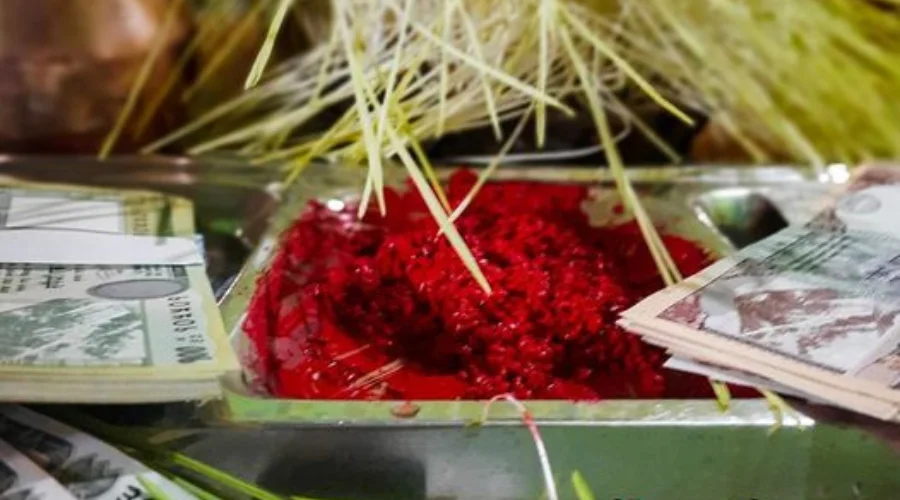
Table of Contents
Dashain in Nepal is the largest and most culturally significant among all the Nepali festivals. Dashain festival symbolizes the victory of good over evil in the triumph of Durga over Mahishasur. This article discusses the Dashain in Nepal, which is celebrated in Nepal . Goddess Durga is a symbol of the trumped and true. It usually falls in September or October .
Dashain in Nepal is one of the significant festivals for Nepalese, and it often features a gathering of family members, smiling faces, prayer, and a call for prosperity and richness. The Nepalese quote says that a folk season is the only time when people have to go to their ancestors’ houses. The environment of the festive season will be very joyful and festive. Dashain, considered one of the best festivals of Nepalese society, is a national festival of Nepal that reflects the culture and traditions of the Nepalese people.
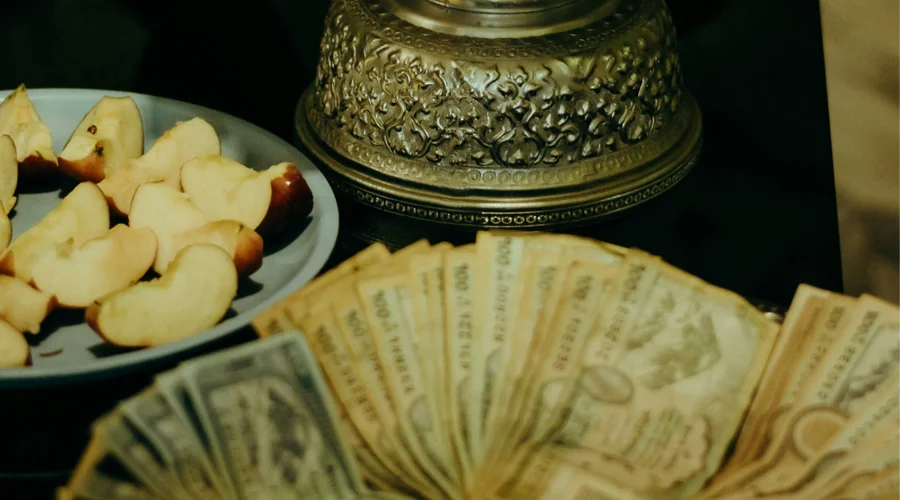
Homes are swept and decorated, tables and chairs are laid, and unique dishes are prepared to eat. ‘Tika’ and ‘Jamara’ are symbols of our identity, belief, and culture that can be applied by our elders or as a blessing on our heads. It’s a mix of several, like yogurt and rice. The members of the young generation seek their blessing and receive gifts from the older people more often.
Why is it celebrated? What is the importance of the Dashain festival in Nepal?
Nepalese people see Dashain as the triumph of the virtuous deity over the evil forces. The other case of the Hindu mythology that describes the same story in a varying way is also one of the factors. The festival of Dashain also comes in under the regular holidays as a symbolic triumph of the goddess Durga over Mahishasura, the demon. The Hindus narrate legends that Mahishasura was so swoonful of the other celestial divinities that he could not be defeated except by their joint efforts.
After that, the gods were asked to create the goddess Durga, who could combat him. Devi completed Mahishasura’s nine days of war, thereby freeing the universe from an unending war. This legend is a case of opposing evils with truth and the idea that even the good can achieve the impossible because even in the most difficult times, divinity can prevail.
On the other hand, the Dashain festival of Nepal is known more to be the time of year when families reunite and people meet each other. Everybody finds a way to get in, no matter how vibrant they might be, and regardless of their culture, they coexist in an ordinary life. Moreover, the families built an atmosphere where they shared gifts, feasts, and beverages hand in hand, which made them feel like they were staying with their relatives.
People to buy new clothes, gifts, and other stuff during that period. Creating another source of income for the business. Accordingly, the economic situation improves. Nepal’s Dashain festival has been continued throughout its past history as an old. It is alive celebration that bears the country’s spiritual, social, and economic vine. Nepalese Dashain suggests that the Nepalese carry a thread of rich hereditary and cultural heritage.
List of Significant days during the Dashain in Nepal Festival
During the 15-day Dashain festival in Nepal, each day holds significance and is celebrated with specific rituals and traditions. Here is a list of the main days of Dashain, along with their significance and customary practices:
1. Ghatasthapana (Day 1) : This marks the beginning of Dashain. On this day, a sacred pot (kalash) is filled with holy water and sown with barley seeds. These are then covered with cow dung and kept in a dark room. This signifies the start of the festival and the worship of the goddess Durga.
2. Saptami (Day 7): On this day, the Kalash is opened, and the sprouted barley known as Jamara is removed. The Nepal Army performs a parade on this day, which is mainly held in all army camps in Nepal.
3. Asthami (Day 8): This day is also known as Maha Asthami. It is considered one of the most important days of Dashain. Animal sacrifices, particularly of buffaloes, are performed in temples to honour the goddess Durga and seek her blessings.
4. Navami (Day 9): On this day, devotees visit temples dedicated to the goddess Durga and offer prayers and sacrifices. Homes are decorated, and families gather for feasting and cultural activities.
Bijaya Dashami
5. Bijaya Dashami (Day 10): Also known as Bijaya Dashami, this is the last day of Dashain and the most promising. On this day, elders apply Tika (a mixture of yogurt and rice) to the foreheads of younger relatives`. They bless them with prosperity and success. The elders also give the younger ones Dakshina (money or gifts) as a token of love and blessings. This day is also significant for the exchange of blessings among friends, relatives, and well-wishers.
6. Kojagrat Purnima (Day 15): This day marks the end of Dashain, also known as the full moon day. On this day, people stay up all night and participate in various cultural activities. Like singing, dancing, and playing games to mark the end of the festival.
Each day of the Dashain festival in Nepal has its significance and rituals. All of these combine to make Dashain one of Nepal’s most vibrant and important festivals.
How is Dashain celebrated in Nepal?
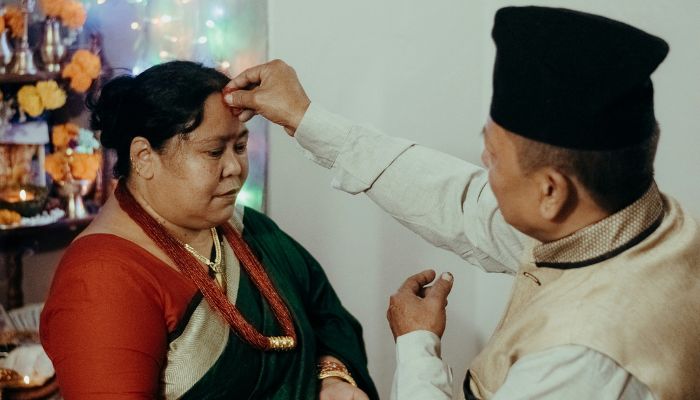
Nepal’s most important festival, Dashain, is celebrated with everyone’s enthusiasm, sacrifice, and devotion. It is a festivity that spans fifteen days. In which families become bonded, and it is also a way of praying for wealth and success. The Dashain festival preparations started weeks before the actual Dashain festival in Nepal. The homes being cleaned and decorated with wall hangings, beautiful flowers, and traditional symbols. Sending away the house and Durga ahead depicts that Durga’s graces are called during the celebration.
A substantial part of the community is interested in getting involved in the wide range of rituals and traditions during Dashian. Among the vital rituals, the preparation and presentation of tikka and jamara could be conceived as one. The older family members sprinkle a mixture of rice, yogurt, and vermilion paste called tika on the forehead of the younger members as a blessing. They also offer the recently sprouted barley (Jamara) in the holy pot, symbolizing abundance and prosperity. The ritual epitomizes the essence of love and joy of the ancestors. Through which people who are distant from each other become closer.
Dashain festival of Nepal is not only a cultural festival but also presents a great chance of entertainment. Some traditional cultural activities, such as dances, music, and drama, mainly go over the festival. The tradition brings together everyone, and people also get an opportunity to be part of the grand celebration of life. Additionally, the Dashain festival of Nepal is a feast and a time for ethnic individuals to taste delectable meals and strange delicacies. Delicacies such as goat meat, rice pudding, and desserts are prepared and shared with people with happy lives.
Which community celebrates Dashain and where?

The Hindu community in Nepal, which comprises the overwhelming majority of the people, celebrates the main festival of Dashain. Nevertheless, it is no longer confined to Nepal; it is celebrated in India, Bhutan, and other parts of Southeast Asia, with widespread Nepalese participation by Hindus worldwide. The Dashain festival in Nepal 2081 is on Asoj 26, 2081 BS.
Nepal’s festival, Dashain, is celebrated in all parts of Nepal by people from different tribes and is considered the country’s national festival. Festivals that are most conspicuously celebrated in cities like Kathmandu and Pokhara are also observed with similar enthusiasm in towns and villages nationwide. Whether a family lives in a village settlement or an urban apartment, the Nepal festival Dashain is when family members reunite to celebrate their cultural identity and seek blessings of prosperity and joy.
Where and how can tourist celebrate Dashain?
Tourists visiting Nepal during the Dashain festival can enjoy the richness of the unique culture of this country. Several cities and towns in Nepal, such as Kathmandu and Pokhara , particularly turn on to colorful decorations, lively markets, and vibrant ambience during the festival of Dashain. This festival brings happiness to every corner of the cities. Guests can be part of this celebration by engaging in several cultural activities like street parades, traditional music and dances and kite flying competitions. Certain attraction of the Dashain for foreign visitors is the opportunity to be blessed by local people taking “Tika” and “Jamara.” Foreigners can visit local houses or temples in order to receive Tika and Jamara from Nepalese families who warmly receive them into their celebration as the honorable guests.
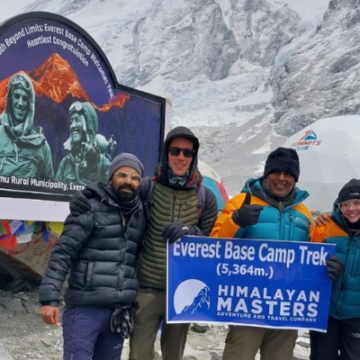
Everest Base Camp Trek
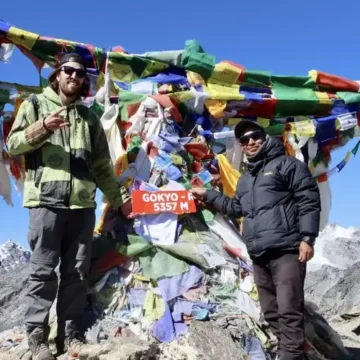
Everest Three Pass Trek
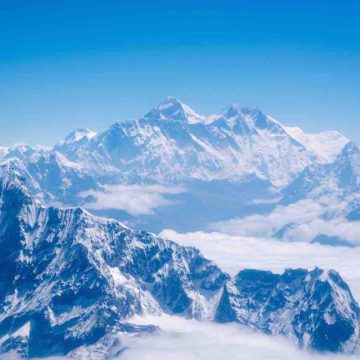
Everest View Trek
Related post.
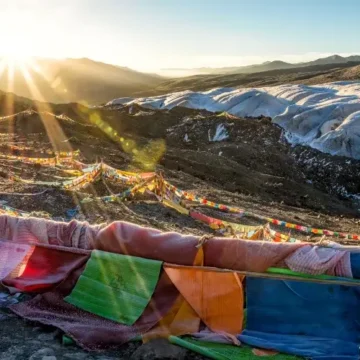
Trekking in Nepal in October, weather, and best places
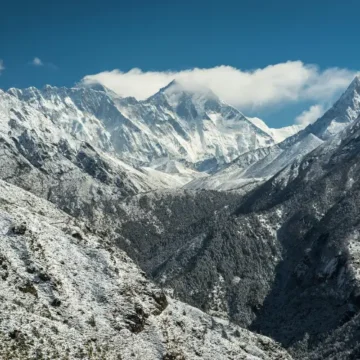
Everest Base Camp Trash

Manaslu Circuit Trek VS Annapurna Circuit trek
Want to know more?
Speak to an Expert
Sandip Dhungana
Whatsapp: +977-9823636377
Leave Your Comment
Swostika is a content writer at Himalayan Masters as well as a travel enthusiast. She loves to travel and learn about different cultures and people. With a love for writing, traveling, and embracing diverse cultures, she is on a journey to explore and inspire through words.
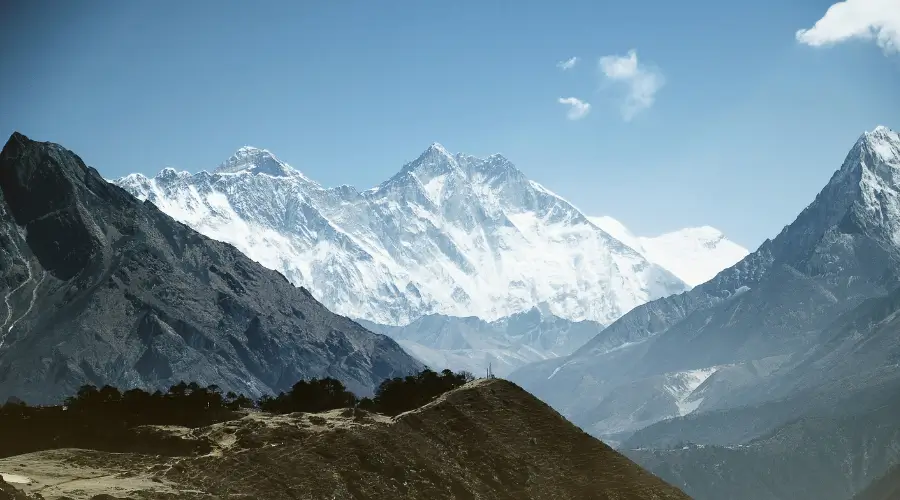
Rainbow Valley Everest/ Sleeping Beauty Facts
Mt everest base camp trip .
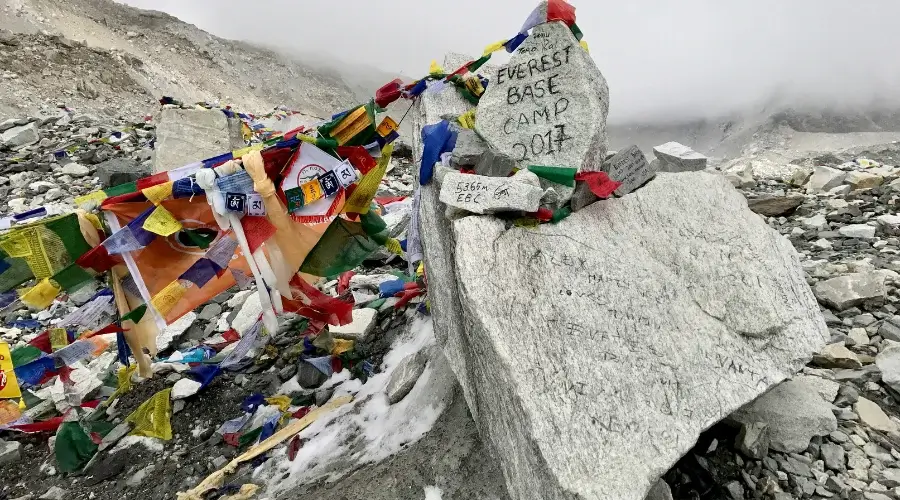
Everest Base Camp Trek After A Covid-19 Pandemic
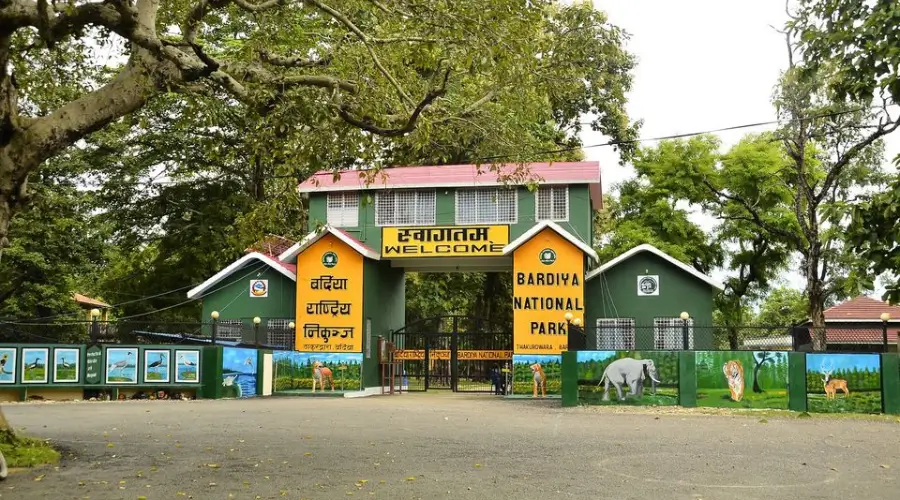
Visit Bardiya National Park, A Lifetime Experience

How Far Is Everest Base Camp from Kathmandu?
In the Press

Voice of Sustainability

Recommended by

UNSURE WHERE TO GO? WE CAN HELP

LATEST BLOG POST

Manaslu Circuit Trek Guide
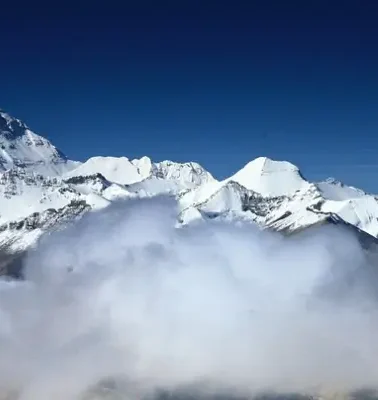
Mount Everest Death Zone: Facts, Challenges, and Survival Tips
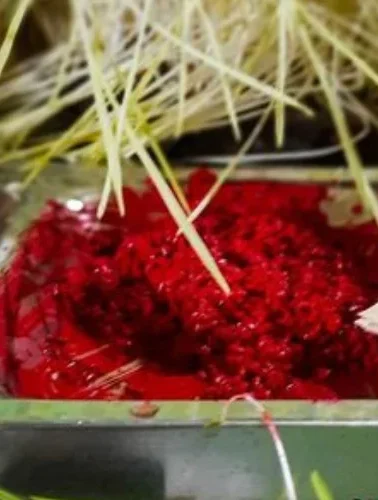

Culture and Festivals
Dashain festival – greatest hindu festival in nepal.
All the Nepalese people celebrate this festival with a greater plethora of entertainment than others. Dashain is a very ancient festival, but the exact beginning of this festival is unknown.
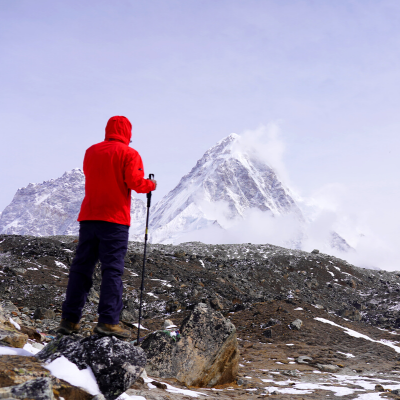
Dashain Festival, also known as Bada Dashain or Vijaya Dashami, is the largest and most significant festival in Nepal , celebrated by Nepalese people of all castes of Hindu communities. The festival usually falls in September or October, depending on the lunar calendar, and lasts for 15 days. Dashain commemorates the victory of good over evil, symbolized by the Hindu gods and goddesses triumphing over demons in various mythological stories.
At its core, Dashain is a time for family reunions, gatherings, and blessings. The festival brings people together as they return to their hometowns and villages to celebrate with their loved ones. The main highlight of Dashain is the tenth day, Vijaya Dashami, when younger family members receive Tika (a mixture of rice, yogurt, and vermilion) and blessings from their elders, symbolizing the transfer of power, strength, and wisdom.
Dashain is also a time for feasting, relaxation, and indulgence, as people prepare various traditional dishes, perform rituals, and engage in festivities. The festival plays a significant role in preserving and promoting Nepalese culture and tradition, both within the country and among the Nepalese diaspora worldwide. For visitors to Nepal during Dashain, it's an excellent opportunity to immerse themselves in the country's rich cultural heritage and witness the vibrant celebrations firsthand.
| Festival Name | Bijaya Dashami (Dashain) |
| Observed by | Hindus |
| Festival Type | Religious/Cultural |
| Theme | Victory of Good over Evil |
| Date | Ashwin or Kartik Month in BS calendar |
Table Of Content
Significance of dashain in nepalese culture.
Dashain holds immense significance in Nepalese culture, playing a crucial role in the social, cultural, and religious aspects of life in Nepal. Some of the key ways in which Dashain is significant in Nepalese culture include:
Spiritual and Religious Importance:
Dashain is deeply rooted in Hindu mythology and beliefs. It commemorates the victory of the gods and goddesses over demons, symbolizing the triumph of good over evil. The festival honors Goddess Durga, who defeated the demon Mahishasura, as well as Lord Rama, who vanquished the demon king Ravana. Dashain is a time for prayer, worship, and ritual observances, reinforcing the spiritual and religious aspects of Nepalese culture.
Family and Community Bonds:
Dashain is a time for family reunions and gatherings, bringing people together from different corners of the country and even abroad. The festival strengthens family bonds and fosters a sense of community, as people come together to celebrate, share meals, and exchange blessings. This emphasis on togetherness and unity is a cornerstone of Nepalese culture.
Preservation and Promotion of Tradition:
Dashain plays a significant role in preserving and promoting traditional practices and customs in Nepal. The festival involves numerous rituals, ceremonies, and practices passed down through generations, ensuring that these cultural elements remain alive and relevant in modern times.
Celebration of Life and Prosperity:
Dashain is a time for relaxation, feasting, and indulgence. People take time off from work, clean and decorate their homes, and prepare special meals to celebrate. The festival marks the end of the monsoon season and the beginning of the harvest season, symbolizing abundance and prosperity. Dashain serves as a reminder to appreciate life, family, and the blessings one has received.
Cultural Identity:
For the Nepalese diaspora living abroad, Dashain plays a vital role in maintaining a connection to their cultural roots. Celebrating the festival in foreign countries helps Nepalese people maintain their unique cultural identity and pass on their traditions to future generations.
Dashain is a multifaceted festival that holds immense significance in Nepalese culture. It serves as a reminder of the triumph of good over evil, reinforces spiritual and religious beliefs, strengthens family and community bonds, preserves and promotes traditional practices, and fosters a sense of cultural identity.
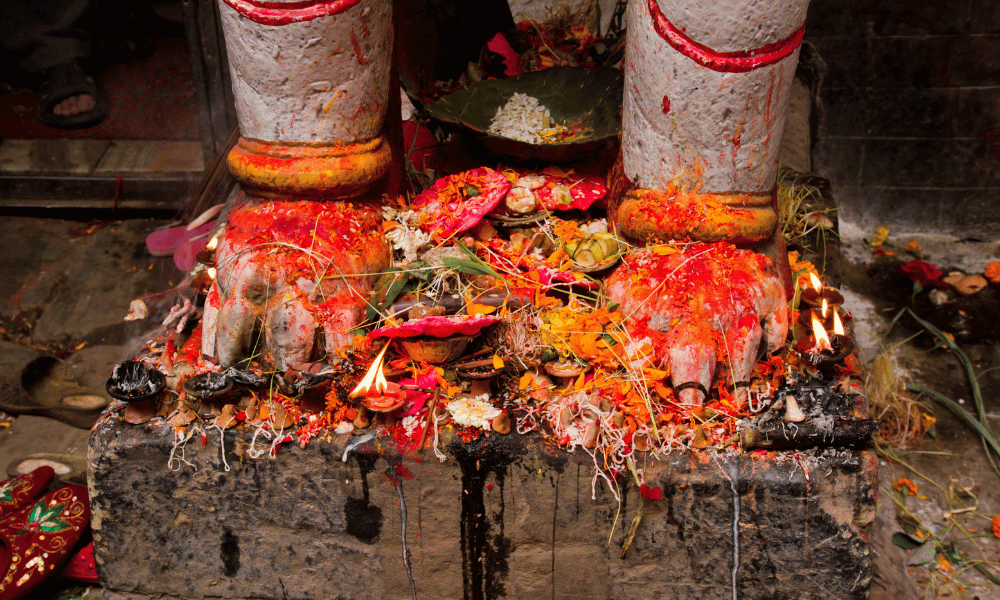
Timeframe (usually falls in September or October)
Dashain Festival, based on the lunar calendar, usually falls between late September and mid-October. The exact dates vary each year, as they depend on the position of the moon. The festival lasts for 15 days, with each day having its own significance, rituals, and celebrations.
The main highlight of the festival, Vijaya Dashami, occurs on the tenth day when families come together to exchange blessings and apply Tika (a mixture of rice, yogurt, and vermilion) on each other's foreheads. This period of late September to mid-October is marked by pleasant weather in Nepal, as the monsoon season comes to an end and the winter season has not yet begun. This makes it an ideal time for the festivities and for visitors to experience the vibrant Dashain celebrations in the country.
The Mythological and Historical Background of Dashain
Dashain Festival is rooted in Hindu mythology and carries both mythological and historical significance. The festival celebrates the victory of good over evil through various stories and legends. The main mythological stories associated with Dashain are:
Goddess Durga and Mahishasura:
According to Hindu mythology, a powerful demon named Mahishasura wreaked havoc on earth, causing great suffering and chaos. Unable to defeat him, the gods combined their powers to create the warrior goddess Durga. Armed with divine weapons, Durga engaged in a fierce battle with Mahishasura that lasted nine days and nights. On the tenth day, she emerged victorious, slaying the demon and restoring peace and order on earth. Dashain commemorates this victory, with the first nine days dedicated to worshipping Durga in her various forms and the tenth day, Vijaya Dashami, celebrating her triumph over evil.
Lord Rama and Ravana:
Another prominent legend associated with Dashain is the story of Lord Rama and the demon king Ravana. Ravana had kidnapped Rama's wife, Sita, and held her captive in his kingdom of Lanka. With the help of an army of monkeys and the divine intervention of Goddess Durga, Rama waged a war against Ravana. After a fierce battle, Rama killed Ravana and rescued Sita, symbolizing the triumph of good over evil. The victory of Lord Rama over Ravana is also celebrated on the tenth day of Dashain, Vijaya Dashami.
The relevance of these stories in modern-day Dashain celebrations is evident in the rituals, prayers, and festivities that take place throughout the 15 days of the festival. People worship Goddess Durga and seek her blessings, while also celebrating the victory of good over evil. These mythological stories serve as a reminder of the importance of righteousness, perseverance, and the power of good in overcoming adversity.
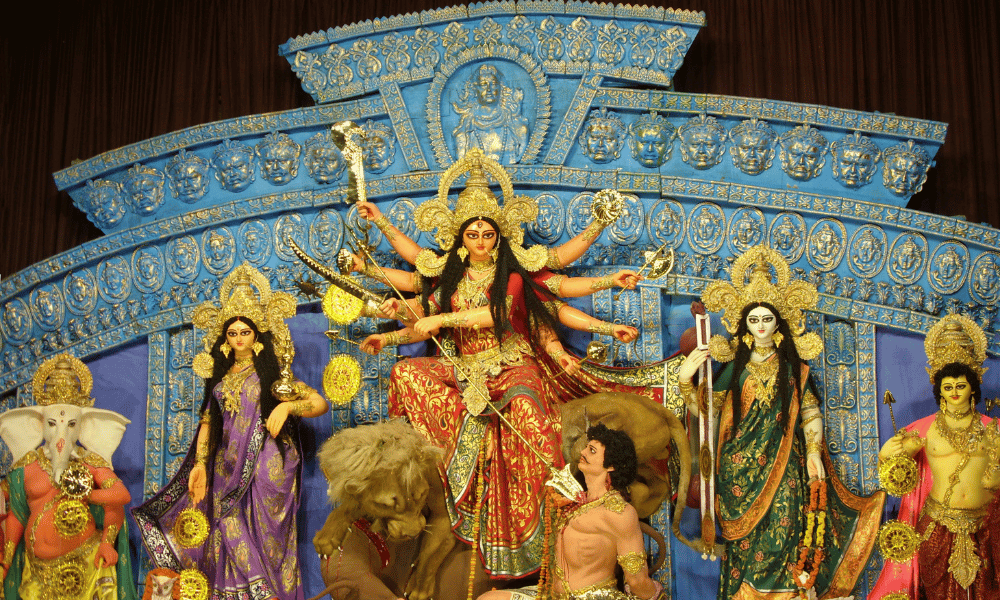
The 15 Days of Dashain: Rituals, Traditions, and Observances
The 15 days of Dashain are filled with various rituals, traditions, and observances, each with its own significance and symbolism. The main days and their associated customs include:
Ghatasthapana (Day 1) : The first day of Dashain marks the beginning of the festival. On this day, people perform Ghatasthapana, a ritual in which they set up a small sand and soil altar and sow seeds of barley, wheat, or corn. This sacred planting represents prosperity and is nurtured throughout the festival.
Days 2-6: During these days, people continue to worship Goddess Durga in her various forms, offering prayers, and maintaining the altar where the seeds were sown.
Fulpati (Day 7): Fulpati is the seventh day of Dashain, symbolizing prosperity and abundance. A procession of offerings, including flowers, fruits, and leaves, is brought from the ancestral royal palace in Gorkha to the Hanuman Dhoka palace in Kathmandu. Many households also observe their own Fulpati rituals.
Maha Asthami (Day 8): This day is dedicated to Goddess Kali, a fierce form of Durga. Maha Asthami involves special prayers, offerings, and animal sacrifices in temples and households, seeking Kali's blessings and protection.
Maha Navami (Day 9): The ninth day is dedicated to Goddess Durga and her various manifestations. More offerings and animal sacrifices are made to appease the goddess, as well as to honor the vehicles of various gods and goddesses, such as the elephant, tiger, and bull.
Vijaya Dashami (Day 10): The main celebration day of Dashain, Vijaya Dashami, commemorates the victory of good over evil. On this day, family members gather, and younger ones receive Tika and blessings from their elders. Red, white, and black Tika symbolizes power, purity, and knowledge. This is also the day when many people start new ventures, believing it to be an auspicious time for success.
Days 11-14: During these days, families continue to visit one another, put tika and exchange blessings, and enjoy feasts together.
Kojagrata Purnima (Day 15): The fifteenth and final day of Dashain is called Kojagrata Purnima, which means "the night of awakening." On this day, people worship the goddess of wealth, Laxmi, and pray for prosperity.
Each of the 15 days of Dashain holds unique cultural significance, with various rituals, traditions, and observances that strengthen the bonds between family and community members while celebrating the triumph of good over evil.
Ghatasthapana: The first day and the start of the festivities
Ghatasthapana, which marks the first day of Dashain, initiates the 15-day festival. It is an important day that involves setting up a sacred sand and soil altar, sowing seeds, and invoking the blessings of Goddess Durga. The rituals and customs associated with Ghatasthapana hold great significance in Nepalese culture.
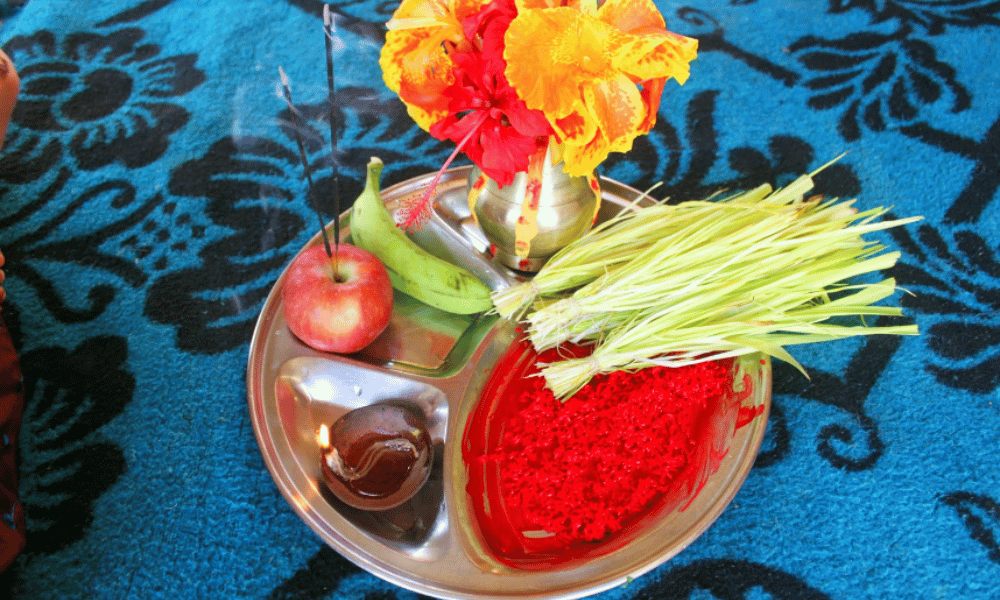
Preparation of the altar: The altar is prepared by placing layers of sand and soil in a designated area of the house, typically in a prayer room or a clean, secluded corner. This layered structure represents the different realms of existence, according to Hindu cosmology. A small clay or metal pot, called a "Kalash," is placed in the center of the altar, filled with holy water, and covered with cow dung. The Kalash symbolizes the vessel of abundance and prosperity.
Sowing seeds: After the altar has been prepared, seeds of barley, wheat, or corn are sown on the surface. These seeds, known as "Jamara," are carefully nurtured throughout the 15 days of the festival. They are sprinkled with water daily and kept in a dark, warm place to facilitate growth. The sprouts that emerge from these seeds represent life, fertility, and prosperity.
Invocation of Goddess Durga: A crucial aspect of Ghatasthapana is invoking the blessings of Goddess Durga. As the divine embodiment of power, strength, and protection, Durga is worshipped throughout the Dashain Festival. The rituals performed during Ghatasthapana include offering prayers, lighting lamps or incense, and reciting mantras dedicated to the goddess.
Astrological considerations: Ghatasthapana is performed at an auspicious time determined by astrological calculations. It is believed that initiating the ritual during this specific time frame ensures the blessings and protection of the goddess throughout the festival.
Ghatasthapana is the starting point of the Dashain Festival and holds great cultural and religious significance. The rituals and customs performed on this day symbolize the beginning of the celebrations, setting the stage for the subsequent festivities, and invoking the blessings of Goddess Durga for a prosperous and joyful Dashain.
Fulpati: The seventh day, representing prosperity and abundance
Fulpati, the seventh day of the Dashain Festival, is a celebration of prosperity and abundance. This auspicious day is marked by a vibrant procession and various rituals, both at the community level and within households. The customs and traditions associated with Fulpati include:
Fulpati Procession: In the past, the royal family would observe Fulpati by bringing offerings from their ancestral palace in Gorkha to the Hanuman Dhoka palace in Kathmandu. The offerings, collectively known as "Fulpati," include flowers, leaves, fruits, sugarcane, and other elements that symbolize prosperity and abundance. Although the monarchy no longer exists in Nepal, the tradition is still maintained, with government officials participating in the procession.
Household Rituals: Many families across Nepal observe their own Fulpati rituals at home. They prepare a Fulpati assortment consisting of flowers, leaves, and fruits, which they place on their prayer altars. Prayers and offerings are made to the gods and goddesses, seeking blessings for prosperity, abundance, and a successful harvest.
Preparations for Maha Asthami and Maha Navami: As Fulpati marks the beginning of the more intense celebrations that follow, preparations for the eighth and ninth days of Dashain, Maha Asthami, and Maha Navami, commence. People clean their homes, gather ingredients for traditional feasts, and make arrangements for the animal sacrifices and offerings to be made on these auspicious days.
Fulpati is a significant day in the Dashain Festival that represents prosperity and abundance. The rituals, processions, and cultural performances associated with Fulpati serve to strengthen community bonds, showcase the vibrant culture of Nepal, and invoke the blessings of the gods and goddesses for a fruitful and prosperous year ahead.
Maha Asthami: The eighth day, dedicated to Goddess Kali
Maha Asthami, the eighth day of the Dashain Festival, is dedicated to Goddess Kali, a fierce and powerful form of Durga. This day is marked by special prayers, offerings, and animal sacrifices in temples and households across Nepal. The customs and traditions associated with Maha Asthami include:
Worship of Goddess Kali: On Maha Asthami, people worship Goddess Kali, who is believed to embody the destructive power of time and the force that annihilates evil. Devotees offer prayers, light lamps, or incense, and make offerings to the goddess to seek her blessings and protection.
Animal Sacrifices: One of the main rituals performed on Maha Asthami is the offering of animal sacrifices, particularly goats, buffaloes, and chickens. These sacrifices are made in temples and household altars, symbolizing the appeasement of the goddess and the surrender of ego and negative qualities. The sacrificed meat is then cooked and consumed as "Prasad," the blessed food.
Kalaratri or "Black Night" Observance: The night of Maha Asthami is known as Kalaratri, or "Black Night." It is believed that on this night, the goddess Kali descends to earth in her most fierce form to eradicate evil and darkness. To honor this belief, people light lamps, torches, and bonfires, and engage in various religious and cultural activities throughout the night.
Worship of Weapons: As Goddess Kali is the embodiment of power and the destroyer of evil, the weapons used in the battle against evil are also worshipped on Maha Asthami. This ritual, known as "Astra Puja" or "Ayudha Puja," involves the worship of weapons, tools, and equipment used in various professions, seeking blessings for their effective and safe use.
Maha Asthami is an important day in the Dashain Festival, dedicated to the worship of Goddess Kali and the celebration of her power to annihilate evil. The rituals, prayers, and offerings performed on this day serve as a reminder of the constant struggle between good and evil, and the need to seek divine protection and guidance in overcoming life's challenges.
Maha Navami: The ninth day, dedicated to Goddess Durga
Maha Navami, the ninth day of the Dashain Festival, is dedicated to Goddess Durga and her various manifestations. This day is marked by special prayers, offerings, and animal sacrifices in temples and households across Nepal. The customs and traditions associated with Maha Navami include:
Worship of Goddess Durga: On Maha Navami, devotees worship Goddess Durga in her various forms, offering prayers, lighting lamps or incense, and making offerings to seek her blessings and protection. This day is considered particularly auspicious for the worship of Durga, as it is believed that she grants boons and fulfills the wishes of her devotees.
Animal Sacrifices: Similar to Maha Asthami, animal sacrifices are an important part of the Maha Navami rituals. Goats, buffaloes, and chickens are offered as sacrifices in temples and household altars, symbolizing the surrender of ego and negative qualities. The sacrificed meat is then cooked and consumed as "Prasad," the blessed food.
Vahan (Vehicle) Puja/Bishwokarma Puja: Maha Navami is also associated with the worship of the vehicles of various gods and goddesses. People perform rituals to honor and seek blessings from the divine carriers, such as the elephant (Ganesha's vehicle), the tiger (Durga's vehicle), and the bull (Shiva's vehicle). This practice is believed to ensure safety and protection during travel.
Worship of Tools and Instruments: Similar to the worship of weapons on Maha Asthami, Maha Navami also involves the worship of tools, instruments, and equipment used in various professions. This ritual, known as "Vishwakarma Puja," is performed to seek blessings for the effective and safe use of these instruments in daily life.
Maha Navami is a significant day in the Dashain Festival, dedicated to the worship of Goddess Durga and the celebration of her power to protect and guide her devotees. The rituals, prayers, and offerings performed on this day serve as a reminder of the importance of seeking divine guidance and protection in overcoming challenges and achieving success in various aspects of life.
Vijaya Dashami: The tenth day, the main celebration day
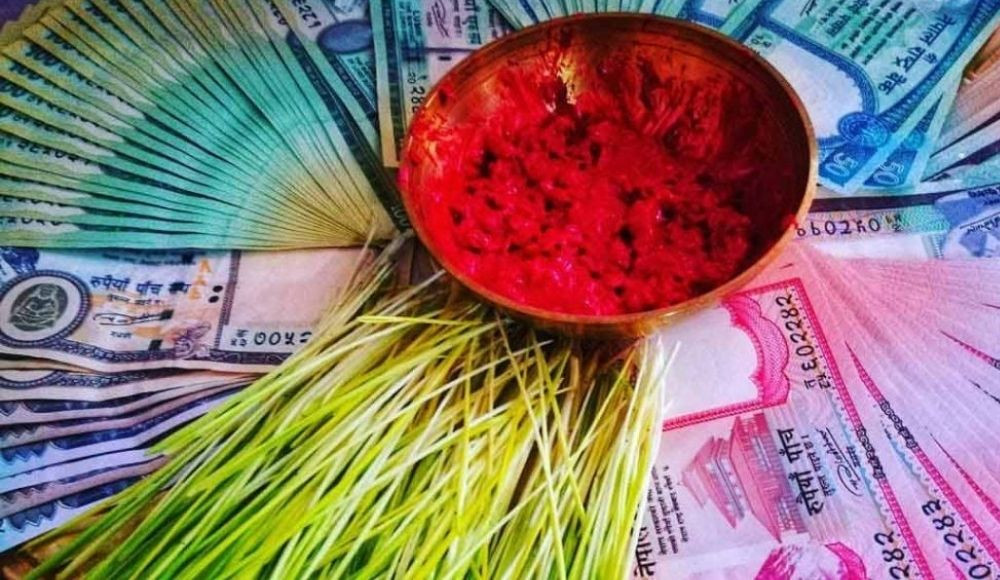
Vijaya Dashami is the tenth day of the Dashain Festival and marks the main day of celebration. It commemorates the victory of good over evil, symbolized by Goddess Durga defeating the demon Mahishasura and Lord Rama vanquishing the demon king Ravana. The day is filled with various rituals, traditions, and festivities that hold great significance in Nepalese culture.
Receiving Tika and blessings from elders: On Vijaya Dashami, family members gather together, and younger members receive Tika from their elders. Tika is a mixture of rice, yogurt, and vermilion, which is applied to the forehead as a blessing. Along with the Tika, the elders give blessings called "Jamara," which are the sprouted barley, wheat, or corn seeds that were sown on Ghatasthapana. The Tika and blessings symbolize the transfer of power, strength, wisdom, and good fortune from the elders to the younger generation.
Family reunions and gatherings: Vijaya Dashami is a time for family reunions, as people travel back to their hometowns and ancestral homes to be with their loved ones. Family gatherings are an essential part of the celebration, with people exchanging greetings, blessings, and indulging in festive feasts. Traditional dishes, such as goat meat, known as "Khasi Ko Masu," are prepared and shared among family members.
Kite flying and cultural programs: In addition to the family-oriented celebrations, Vijaya Dashami is marked by various outdoor activities, such as kite flying, which symbolizes the victory of good over evil. Cultural programs, dance performances, and music events are also organized in communities and cities throughout Nepal, showcasing the rich and vibrant culture of the country.
Auspicious beginnings: Many people believe that Vijaya Dashami is an auspicious day to start new ventures, businesses, or projects. People often initiate important tasks, make significant purchases, or lay the foundation for new constructions on this day, hoping for success and prosperity.
Overall, Vijaya Dashami is the highlight of the Dashain Festival and is celebrated with great enthusiasm and joy. It is a time for family, blessings, and sharing happiness, symbolizing the victory of good over evil and the importance of unity and togetherness in Nepalese culture.
Kojagrata Purnima: The fifteenth and final day of Dashain
Kojagrata Purnima, the fifteenth and final day of the Dashain Festival, is also known as "Laxmi Puja" or "Sharad Purnima." This day is dedicated to Goddess Laxmi, the deity of wealth, prosperity, and good fortune. The customs and traditions associated with Kojagrata Purnima include:
Worship of Goddess Laxmi: On Kojagrata Purnima, devotees worship Goddess Laxmi by offering prayers, lighting lamps or incense, and making offerings such as flowers, fruits, and sweets. The goddess is believed to visit and bless those who keep their homes and hearts open for her arrival, bestowing wealth, prosperity, and good fortune upon them.
Kojagrata or "Staying Awake": The term "Kojagrata" means staying awake, and on this night, devotees remain awake and engage in various religious, cultural, and social activities. People sing, dance, play games, and share stories, celebrating the blessings of Goddess Laxmi and the completion of the Dashain Festival.
Special Food and Drinks: Kojagrata Purnima is also a time for enjoying special food and drinks. Traditional sweets, such as "Sel Roti" (deep-fried rice flour rings) and "Anarsa" (sweet rice flour fritters), are prepared and shared among family members and friends. A special milk-based pudding called "Kheer" is also prepared and consumed on this night, symbolizing the sweetness and abundance of life.
Kojagrata Purnima marks the end of the Dashain Festival and is a day dedicated to celebrating wealth, prosperity, and good fortune. The rituals, prayers, and offerings performed on this day serve as a reminder of the importance of seeking divine blessings for a prosperous and fulfilling life, as well as expressing gratitude for the blessings already received.
Other important days and events during the festival
In addition to the main days of the Dashain Festival that have already been discussed, there are other important days and events that hold cultural and religious significance. Some of these days and events include:
Durga Puja and Navaratri: During the entire 15-day Dashain Festival, special attention is given to the worship of Goddess Durga. In particular, the first nine days are dedicated to the goddess, who is believed to embody power, strength, and protection. Devotees visit Durga temples, perform rituals, and make offerings to seek her blessings.
Phoolpati Badhai: Phoolpati Badhai is a traditional practice during the Dashain Festival, where people exchange Phoolpati (flowers, leaves, and fruits) with their neighbors, friends, and relatives. This custom strengthens social bonds and promotes unity and togetherness in the community.
Swinging (Ping): During the Dashain Festival, swings made of bamboo or wood, known as "Ping" or "Linge Ping," are set up in various communities and villages across Nepal. People of all ages, especially children, enjoy swinging on these temporary structures, which symbolize joy, freedom, and the carefree spirit of the festival.
Ramlila: In some parts of Nepal, Ramlila, the dramatic re-enactment of the life of Lord Rama, is performed during the Dashain Festival. This theatrical performance depicts the victory of good over evil, as Lord Rama defeats the demon king Ravana, and is often performed in open grounds or community spaces.
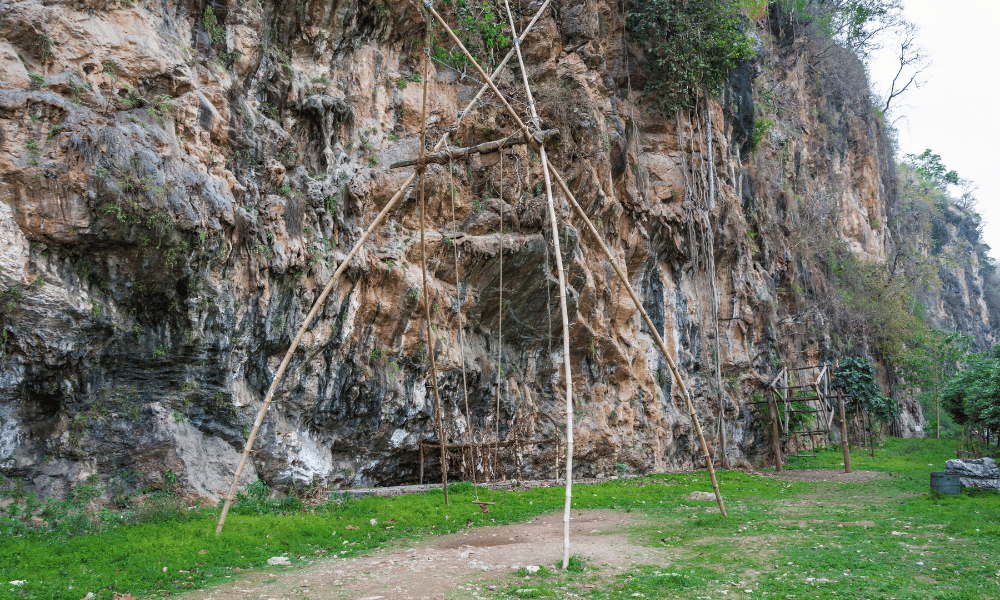
These events and customs, along with the main days of the Dashain Festival, highlight the rich cultural heritage of Nepal and the importance of family, community, and the triumph of good over evil.
The Cultural and Social Significance of Dashain
Dashain, also known as Vijaya Dashami, is the most significant and widely celebrated festival in Nepal. It holds immense cultural and social importance for the Nepalese people. The festival usually falls in September or October and lasts for 15 days. Dashain is celebrated to honor the victory of good over evil and the blessings of the Hindu goddess Durga, who is considered the embodiment of power and protection.
Cultural Significance:
Religious beliefs: Dashain is deeply rooted in Hindu mythology and celebrates the victory of Goddess Durga over the demon Mahishasura. It also marks the victory of Lord Ram over Ravana, symbolizing the triumph of good over evil. These stories hold significant cultural importance and impart moral values to the Nepalese people.
Rituals and customs: Various rituals and customs are observed during Dashain, such as Ghatasthapana (sowing seeds for Jamara), Kalaratri (animal sacrifices), and Tika (receiving blessings from elders). These practices connect people with their cultural heritage and help preserve their traditions.
Temples and shrines: During Dashain, people visit temples and shrines dedicated to Goddess Durga and other deities to offer prayers and seek blessings. These visits are an integral part of the religious and cultural experience of the festival.
Social Significance:
Family reunion: Dashain serves as an occasion for families to come together, reconnect, and celebrate. People living away from their families often return to their hometowns to spend time with their loved ones. This strengthens family bonds and fosters a sense of belonging.
Generational respect: The practice of receiving Tika and blessings from elders during Dashain is a symbol of respect for the older generation. This tradition helps maintain social harmony and teaches younger generations the value of respecting their elders.
Sharing and generosity: Dashain is a time when people share their happiness and prosperity with others. Gifts, clothes, and food are often exchanged among friends, neighbors, and relatives. This fosters a sense of community, generosity, and social cohesion.
Renewal and rejuvenation: Dashain is considered an auspicious time for starting new ventures and cleansing one's mind, body, and soul. People clean their homes, wear new clothes, and participate in various religious and cultural activities, symbolizing renewal and rejuvenation.
Overall, the Dashain festival in Nepal is a celebration of victory over evil, a time for family reunions, and a reminder of the importance of cultural traditions and social harmony. The festival reinforces values such as respect, generosity, and unity, contributing to the preservation of Nepalese culture and fostering a strong sense of community.
The role of Dashain in preserving and promoting Nepalese culture
Dashain plays a vital role in preserving and promoting Nepalese culture, as it is the most significant and widely celebrated festival in the country. The various customs, traditions, and rituals associated with Dashain contribute to the continuation and appreciation of Nepal's rich cultural heritage. Here are some ways in which Dashain helps preserve and promote Nepalese culture:
Reinforcing cultural values: Dashain reinforces the core cultural values of respect, unity, and the importance of family. The festival promotes these values by encouraging people to come together, spend time with their families, and show respect for their elders.
Rituals and customs: Dashain is marked by a variety of rituals and customs that are an integral part of Nepalese culture. These practices, such as Ghatasthapana, Kalaratri, and Tika, help preserve the traditional ways of celebrating the festival and ensure that cultural knowledge is passed down to future generations.
Storytelling and mythology: The legends and stories associated with Dashain, such as the victory of Goddess Durga over the demon Mahishasura, are important aspects of Hindu mythology. By celebrating Dashain, Nepalese people keep these stories alive and continue to share the cultural significance behind them.
Music and dance: Traditional music and dance are often performed during Dashain celebrations, showcasing the rich cultural heritage of Nepal. The preservation and promotion of these art forms contribute to the continuation and appreciation of Nepalese culture.
Traditional cuisine: Dashain is a time when families prepare and share traditional Nepalese dishes, such as sel roti, masu (meat dishes), and various vegetable curries. The preparation and enjoyment of these traditional foods help maintain culinary traditions and promote Nepalese cuisine.
Arts and crafts: The festival also encourages the creation and appreciation of traditional Nepalese arts and crafts, such as kite-making and thangka painting. These activities contribute to the preservation of traditional skills and knowledge and promote the unique artistic heritage of Nepal.
Tourism and cultural exchange: Dashain attracts many tourists and visitors to Nepal, who are eager to experience the country's rich cultural heritage during the festival. This cultural exchange allows for a broader understanding and appreciation of Nepalese culture and helps promote it internationally.
In conclusion, Dashain plays a crucial role in preserving and promoting Nepalese culture by fostering the continuation of traditions, customs, and rituals, as well as supporting the arts, cuisine, and cultural exchange. The festival serves as a reminder of the importance of cultural heritage and helps maintain the rich tapestry of Nepalese culture for future generations.
Dashain as a Time for Relaxation, Feasting, and Indulgence
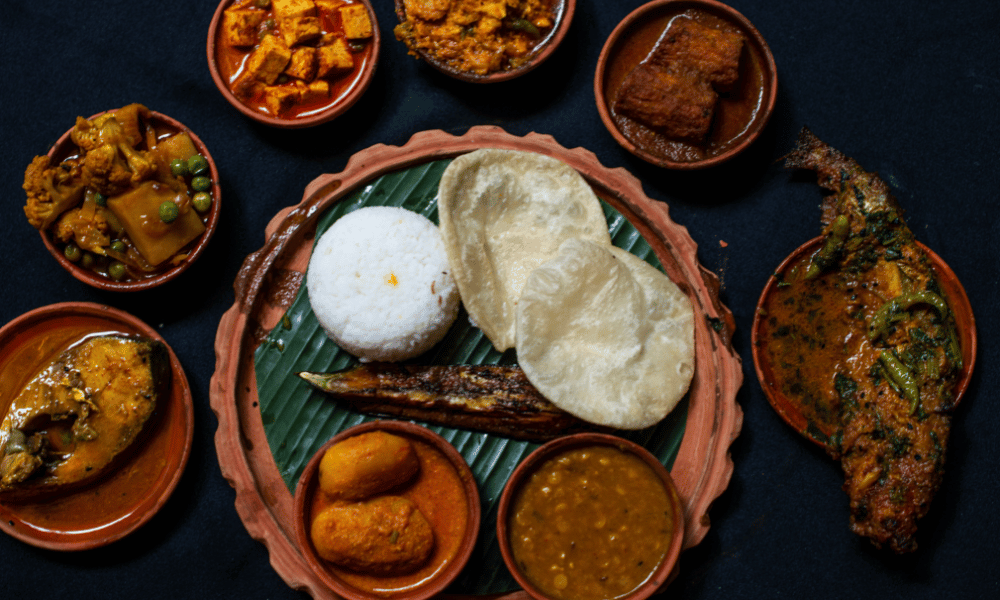
Dashain is a time for relaxation, feasting, and indulgence for the people of Nepal. The festival provides a much-needed break from daily routines, allowing individuals to unwind, celebrate, and enjoy themselves with their families and communities. Here's how Dashain serves as a time for relaxation, feasting, and indulgence:
Time off work: During Dashain, many people take time off work, businesses and schools close for holidays, and the overall pace of life slows down. This break allows individuals to relax, rejuvenate, and spend quality time with their loved ones, away from the stresses of everyday life.
Feasting: Food plays a central role in Dashain celebrations. Families prepare a variety of traditional Nepalese dishes, including meat dishes like mutton, chicken, and buffalo, as well as rice, vegetable curries, and homemade sweets. Feasting is an integral part of the festival and serves as a way for people to indulge in delicious food and enjoy the company of their family and friends.
Sharing and generosity: Dashain encourages people to share their prosperity and happiness with others. Families exchange gifts and invite friends, neighbors, and relatives to share meals and celebrate together. This spirit of generosity and sharing contributes to the festive atmosphere and promotes social cohesion.
Traditional games and entertainment: During Dashain, people engage in traditional games, sports, and other forms of entertainment, such as flying kites, playing cards, or participating in community events. These leisure activities provide an opportunity for people to relax, have fun, and connect with their cultural heritage.
New clothes and adornments: Dashain is a time when people often buy new clothes and accessories for themselves and their family members. Wearing new clothes symbolizes renewal, and it adds to the festive spirit by allowing people to indulge in personal grooming and self-expression.
Spiritual rejuvenation: Many people use Dashain as an opportunity for spiritual reflection and growth. Visiting temples, participating in religious rituals, and offering prayers to deities can provide a sense of inner peace and relaxation during the festival.
Dashain serves as a time for relaxation, feasting, and indulgence for the Nepalese people. The festival offers a break from daily routines, encouraging individuals to enjoy themselves, connect with their loved ones, and celebrate their cultural heritage. The spirit of sharing and generosity, combined with feasting, leisure activities, and spiritual reflection, contributes to the festive and joyful atmosphere that characterizes Dashain.
Dashain Celebrations Beyond Nepal
Dashain is primarily celebrated in Nepal, but its influence extends to neighboring countries and regions with Nepalese diaspora communities around the world. People of Nepalese origin living in countries such as India, Bhutan, Myanmar, and Tibet, as well as those in Europe, North America, and Australia, also celebrate Dashain, keeping their cultural ties alive. Here are some ways Dashain is celebrated beyond Nepal:
India: In India, particularly in states with a significant Nepalese population, such as Sikkim, West Bengal, and Assam, Dashain is celebrated with enthusiasm. In other states, Dashera is celebrated on the same days with just big of an enthusiasm. The festival's customs and rituals are similar to those observed in Nepal, including family gatherings, huge celebrations, and more.
Bhutan: Dashain is celebrated by the Nepalese community living in Bhutan. Although it may not be as grand as in Nepal, people follow traditions such as receiving Tika from elders and preparing special meals during the festival.
Myanmar and Tibet: Nepalese communities in these regions also celebrate Dashain, keeping their traditions alive while living away from their homeland.
Nepalese diaspora: In countries like the United States, the United Kingdom, Australia, and Canada, Nepalese communities often organize Dashain celebrations. These events typically include cultural programs, traditional music and dance performances, and community gatherings. People also follow the rituals of Tika and blessings, as well as preparing and sharing traditional Nepalese dishes.
Cross-cultural influence: In some cases, Dashain celebrations may overlap or blend with local festivals and customs in the host country, creating a unique cultural fusion. For example, the Hindu festival of Navaratri and Dashera, celebrated in India, shares some similarities with Dashain, as both honor Goddess Durga and her victory over evil.
By celebrating Dashain beyond Nepal, Nepalese communities around the world help preserve and promote their cultural heritage. These celebrations provide an opportunity for people to stay connected to their roots, share their traditions with others, and foster a sense of identity and belonging, even while living away from their homeland.
The Nepalese diaspora and Dashain celebrations around the world
The Nepalese diaspora, comprising people of Nepalese origin living outside of Nepal, has led to the celebration of Dashain in various countries around the world. These celebrations help preserve and promote Nepalese culture, maintain connections to their homeland, and foster a sense of community among diaspora members. Here are some ways the Nepalese diaspora celebrates Dashain around the world:
Community gatherings: Nepalese diaspora communities often organize events to celebrate Dashain together. These gatherings typically take place in community centers, parks, or private homes, where people can come together to participate in rituals, share meals, and enjoy cultural programs.
Cultural programs: Dashain celebrations in the diaspora often include cultural programs featuring traditional music, dance, and performances that showcase Nepalese culture. These events not only entertain but also educate younger generations and non-Nepalese attendees about Nepalese traditions and heritage.
Rituals and customs: Diaspora communities continue to observe Dashain rituals and customs, such as receiving Tika and blessings from elders, performing prayers, and making offerings to deities. These practices help maintain a connection to their cultural roots and pass on traditions to future generations.
Traditional cuisine: Preparing and sharing traditional Nepalese dishes is an essential aspect of Dashain celebrations among the diaspora. Families and friends gather to enjoy festive meals featuring dishes like sel roti, masu (meat dishes), and various vegetable curries.
Connecting with family in Nepal: Dashain celebrations in the diaspora often involve connecting with family members in Nepal through phone calls or video chats. This helps maintain bonds with loved ones and share the joy of the festival despite being geographically distant.
Inclusion of non-Nepalese friends and neighbors: Dashain celebrations in the diaspora often include non-Nepalese friends, neighbors, and colleagues, providing an opportunity to share Nepalese culture and traditions with a wider audience.
Online celebrations: With the growth of social media and online communication, many diaspora communities have turned to online platforms to organize and participate in Dashain celebrations. Virtual gatherings, live-streamed cultural programs, and online Tika ceremonies have become increasingly popular, especially during times when in-person gatherings may not be feasible.
The Nepalese diaspora plays a crucial role in keeping Dashain traditions alive and promoting Nepalese culture worldwide. Through community gatherings, cultural programs, and adherence to rituals and customs, Nepalese people living abroad maintain a strong connection to their homeland, foster a sense of community and belonging, and share their unique heritage with others.
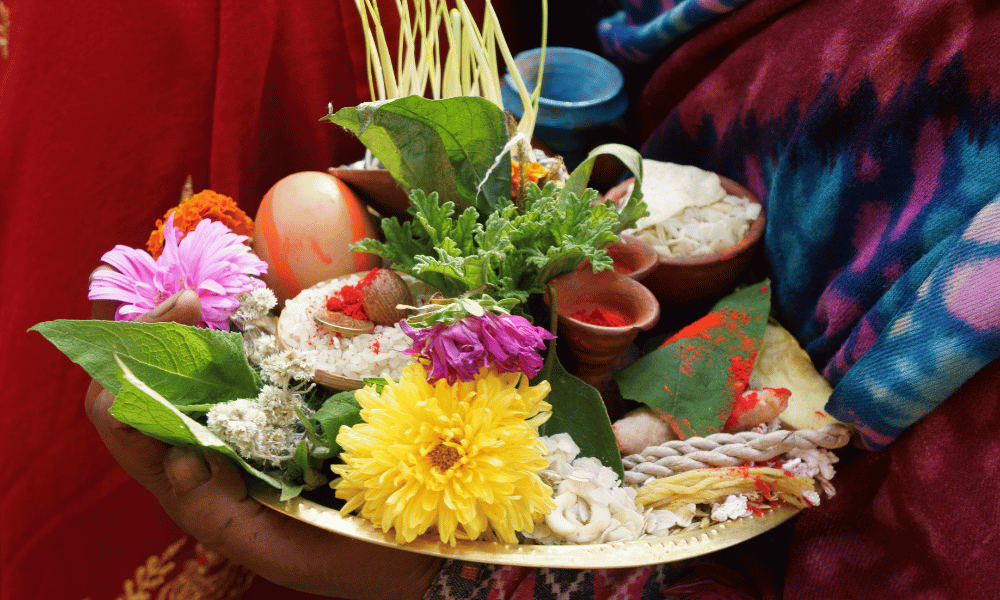
Adapting Dashain traditions to life outside of Nepal
Adapting Dashain traditions to life outside Nepal can be challenging, but it is essential for preserving and maintaining cultural connections among the Nepalese diaspora. Here are some ways to adapt Dashain traditions to life in different countries:
Flexibility with dates and timings: Due to work and school schedules, it may not always be possible for the diaspora to take time off during the entire Dashain festival. In such cases, families and communities can be flexible with the dates and timings, choosing weekends or convenient times to celebrate and perform rituals together.
Simplified rituals: Some Dashain rituals may be difficult to perform in their entirety, particularly those involving animal sacrifices or specific religious items. Adapting these rituals to a simpler form or finding alternative ways to carry out the ceremony can help preserve the essence of the tradition while respecting local laws and customs.
Local ingredients and substitutes: Preparing traditional Nepalese dishes may require ingredients that are not easily available outside Nepal. In such cases, using locally available ingredients or finding substitutes can help maintain the festive spirit while adapting to local resources.
Virtual celebrations: Connecting with family and friends in Nepal or other countries can be done through phone calls, video chats, or social media. Virtual Dashain celebrations can include online Tika ceremonies, sharing photos of celebrations, or even live-streaming cultural events.
Collaborating with local organizations: Partnering with local organizations, cultural centers, or educational institutions can help organize and promote Dashain events. This collaboration can provide resources and support for cultural programs, workshops, or exhibitions, making it easier to celebrate and share Nepalese culture with a wider audience.
Involving non-Nepalese friends and neighbors: Inviting non-Nepalese friends, neighbors, and colleagues to Dashain celebrations can help share Nepalese culture and traditions with others. This exchange fosters cultural understanding and appreciation, promoting a sense of community and inclusivity.
Educating younger generations: Teaching Nepalese children and youth about Dashain, its significance, and the associated rituals and customs is essential for preserving cultural heritage. Parents can share stories, teach traditional songs and dances, and involve children in the preparation of festive meals to pass on their cultural knowledge.
Adapting Dashain traditions to life outside Nepal requires flexibility, creativity, and collaboration. By modifying customs and practices to suit local contexts and resources, the Nepalese diaspora can maintain a strong connection to their cultural roots, foster a sense of community, and share their unique heritage with others.
Dashain as a foodie festival
Food plays a central role in the Dashain festival, as families gather to prepare and share special dishes. The festival's feasting is an integral part of the celebrations and highlights the importance of family, community, and tradition in Nepalese culture. Here are some popular foods associated with the Dashain festival:
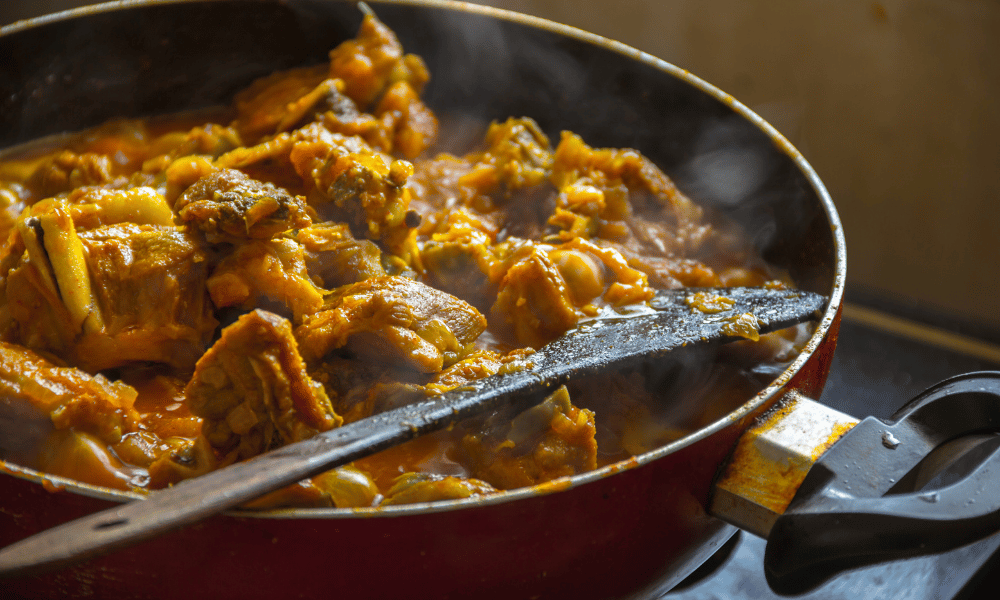
Masu: Meat dishes, particularly goat and chicken, are an essential part of Dashain feasts. Animals are often sacrificed during the festival as an offering to the goddess Durga. The meat is then used to prepare various dishes, including curries, fried meat, and grilled or barbecued items.
Sel Roti: Sel roti is a traditional Nepalese sweet bread made from rice flour. The dough is deep-fried in a ring shape until it becomes crispy and golden. Sel roti is typically served with yogurt, vegetable curry, or meat dishes during Dashain.
Newari Bhoye: The Newari people of Kathmandu Valley prepare a traditional feast called "Bhoye" during Dashain. This elaborate meal consists of various dishes such as beaten rice (chiura), curries, pickles (achaar), leafy greens (saag), lentils, and sweets.
Aloo Tama: Aloo Tama is a delicious Nepalese curry made with potatoes, bamboo shoots, and black-eyed peas. This dish is often prepared during Dashain and other festivals and is served with steamed rice or roti.
Samay Baji: Samay Baji is a traditional Newari platter that includes a variety of food items like beaten rice (chiura), roasted soybeans, spiced meat, boiled eggs, and pickles. It is a popular dish during Dashain and other Newari celebrations.
Kheer: Kheer is a creamy rice pudding made with rice, milk, sugar, and flavored with cardamom, saffron, and nuts. This sweet dish is often prepared during Dashain and other festive occasions.
Fulaura and Bara: Fulaura and Bara are traditional Newari deep-fried lentil cakes made from soaked and ground lentils. Fulaura is made from black lentils, while Bara is made from a mixture of different lentils. These savory snacks are enjoyed during Dashain and other special occasions.
Achaar: A variety of pickles, made from fruits, vegetables, or even meat, are an essential part of Dashain feasts. Achaar adds flavor and spice to the meal and is often homemade using traditional recipes.
During Dashain, families gather to enjoy these delicious dishes together, strengthening their bonds and sharing their cultural heritage. The preparation and consumption of festive foods are an integral part of Dashain celebrations, reflecting the importance of family, community, and tradition in Nepalese culture.
Experiencing Dashain as a Visitor to Nepal
Experiencing Dashain as a visitor to Nepal can be an enriching and memorable experience. The festival offers a unique opportunity to witness Nepalese culture, customs, and traditions firsthand. Here are some tips and suggestions for experiencing Dashain as a visitor to Nepal:
Plan your trip: Dashain usually takes place in September or October, depending on the lunar calendar. Check the dates before you plan your trip to ensure you are in Nepal during the festival. Keep in mind that some businesses and attractions may be closed during this time, so plan your itinerary accordingly.
Engage with locals: The best way to experience Dashain is by interacting with local people. If you have Nepalese friends or acquaintances, consider joining them for Dashain celebrations. Many families would be happy to include visitors in their festivities and share their customs and traditions.
Attend community events: During Dashain, various community events take place, such as cultural programs, traditional music and dance performances, and sports competitions. Attend these events to experience the festive atmosphere and learn more about Nepalese culture.
Visit temples and religious sites: Dashain is a religious festival, and many people visit temples and shrines to offer prayers and worship deities. As a visitor, you can visit these sites to observe rituals and ceremonies. Remember to dress modestly and respect local customs when visiting religious places.
Taste traditional cuisine: Dashain is a time for feasting, and trying traditional Nepalese dishes is a must. Sample festive foods such as sel roti, masu (meat dishes), and various vegetable curries. You can find these dishes in local restaurants or by attending community events where food is served.
Observe and participate in customs: Learn about the different customs and rituals associated with Dashain, such as Tika, blessings from elders, kite flying, and the preparation of traditional meals. If you are invited to participate in any of these activities, be respectful and follow local etiquette.
Learn about Dashain's significance: Familiarize yourself with the stories, myths, and legends associated with Dashain, such as the victory of Goddess Durga over the demon Mahishasura. Understanding the festival's cultural and religious significance will enhance your appreciation of the celebrations.
Be respectful: As a visitor, it's essential to be respectful of local customs, traditions, and religious beliefs during Dashain. Dress modestly, follow local etiquette, and ask for permission before taking photographs of people or ceremonies.
Experiencing Dashain as a visitor to Nepal can provide a unique insight into the country's rich cultural heritage. Remember, as a tourist, it's essential to be respectful of local customs, traditions, and religious beliefs during Dashain. By engaging with the local culture, attending community events, and participating in customs and rituals, tourists can immerse themselves in the festive atmosphere and create lasting memories of their time in Nepal.
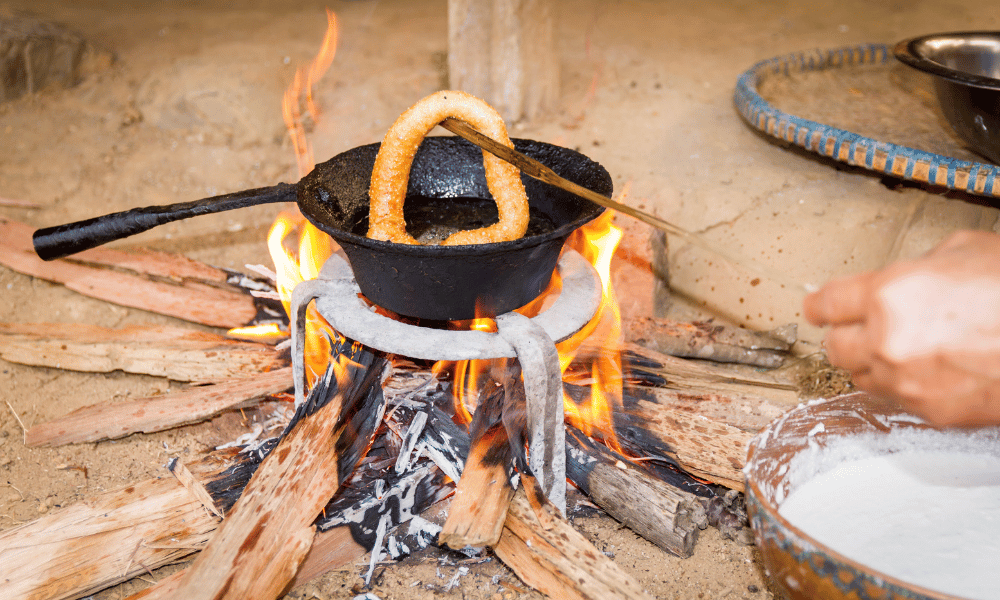
Popular tourist destinations and activities during Dashain
During Dashain, some popular tourist destinations and activities may be less crowded due to the festive atmosphere and locals spending time with their families. However, this can also be a great opportunity to explore Nepal and experience its rich cultural heritage. Here are some popular tourist destinations and activities to consider during Dashain:
Kathmandu Valley: Explore the UNESCO World Heritage sites in the Kathmandu Valley, including Pashupatinath Temple, Boudhanath Stupa, Swayambhunath Stupa, and the ancient Durbar Squares of Kathmandu, Bhaktapur, and Patan. These sites are rich in history and showcase traditional Nepalese architecture.
Pokhara: Don’t miss Pokhara on your trip, a picturesque city located by the Phewa Lake, which offers stunning views of the Annapurna mountain range. You can participate in activities such as boating on the lake, paragliding, visiting the World Peace Pagoda, or exploring the Mahendra and Bat Caves.
Chitwan National Park: Enjoy a safari experience in Chitwan National Park, where you can spot various wildlife, including Bengal tigers, one-horned rhinoceroses, and different species of deer. You can also take part in other activities such as bird watching, canoeing, and visiting the local Tharu villages.
Lumbini: Visit Lumbini, the birthplace of Lord Buddha, and explore the numerous monasteries, temples, and the sacred garden surrounding the Mayadevi Temple.
Bandipur: Discover the charming hilltop town of Bandipur, known for its traditional Newari architecture, and enjoy panoramic views of the surrounding mountains and valleys.
Nagarkot: Take a short trip to Nagarkot, a popular hill station close to Kathmandu, which offers breathtaking views of the Himalayas, including Mount Everest, and beautiful sunrise and sunset panoramas.
Trekking: Although the Dashain festival falls during the start of the trekking season, some popular trekking routes may be less crowded. Consider short treks, such as the Ghorepani Poon Hill Trek, the Langtang Valley Trek, or the Tamang Heritage Trail, which showcase the natural beauty of Nepal and offer stunning mountain views.
Cultural experiences: Attend Dashain community events, including cultural programs, traditional music, and dance performances. Also, explore local markets to shop for handicrafts and traditional clothing.
Mountain flights : If you're short on time or unable to trek, you can take a mountain flight to enjoy an up-close view of the Himalayas, including Mount Everest.
Adventure sports: For thrill-seekers, there are various adventure sports available, such as bungee jumping, zip-lining, paragliding, and white-water rafting.
Keep in mind that some businesses and attractions may be closed or operate for limited hours during Dashain. It is essential to plan your itinerary accordingly and be flexible with your travel plans.
Dashain is the longest and most significant Hindu festival in Nepal, symbolizing the victory of good over evil. The festival holds immense importance in Nepalese society, as it celebrates religious and cultural traditions, strengthens family and community bonds, and provides a time for relaxation and indulgence.
The 15-day celebration is marked by colorful rituals, music, dance, and feasting, making it a vibrant and memorable experience for both locals and visitors. Dashain not only preserves and promotes the rich cultural heritage of Nepal but also brings together people from diverse backgrounds to share and cherish their customs and values.
Experiencing Dashain, either in Nepal or through local Nepalese communities worldwide, is a unique opportunity to immerse oneself in a different culture and create unforgettable memories. By participating in Dashain celebrations, one can gain valuable insights, build connections, and develop a deeper appreciation for the beauty and richness of Nepalese culture.
Frequently Asked Questions
Dashain is celebrated in September or October, depending on the lunar calendar. The festival lasts for 15 days, with the most significant events occurring on the 10th day, known as Vijaya Dashami.
Dashain commemorates the victory of the goddess Durga over the demon Mahishasura, symbolizing the triumph of good over evil. The festival is deeply rooted in religious and cultural traditions and promotes family and community bonding, relaxation, and indulgence.
Dashain is celebrated with various rituals, prayers, and offerings to the gods and goddesses, particularly Durga. Families reunite, exchange blessings and gifts, and share feasts. The festival also includes music, dance, and cultural performances, with people often wearing new clothes to mark the occasion.
Traditional foods during Dashain include masu (meat dishes), sel roti (sweet rice bread), Newari bhoye (traditional Newari feast), bada (black lentil pancake), aloo tama (potato and bamboo shoot curry), samay baji (Newari platter), kheer (rice pudding), fulaura and bara (deep-fried lentil cakes), and various achaar (pickles).
Jamara is known as barley grass in english. The barley seeds are sowed on the first day of Dashain festival. Ghatasthapana is the first day of Dashain.
Yes, tourists are welcome to participate in Dashain celebrations. Many locals are happy to share their traditions and festivities with visitors. Tourists can attend cultural events, visit temples, and enjoy festive foods to experience the festival firsthand.
Tourists should be respectful of local customs, beliefs, and practices during Dashain. Modest clothing is recommended when visiting temples, and it is essential to ask for permission before taking photographs of religious ceremonies or people. Additionally, transportation and accommodations may be busier during the festival, so it's advisable to make arrangements in advance.
BLOGS & TRAVEL STORIES
our first-hand Himalayan travel experience

Travel Guides & Tips
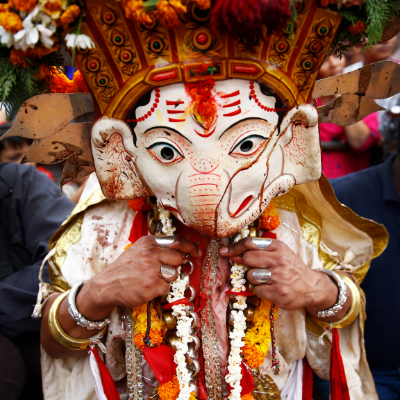
Travel Stories
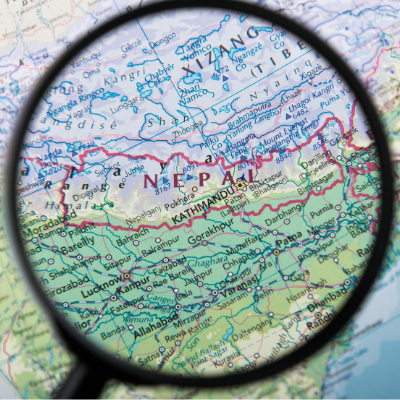
Latest Travel News
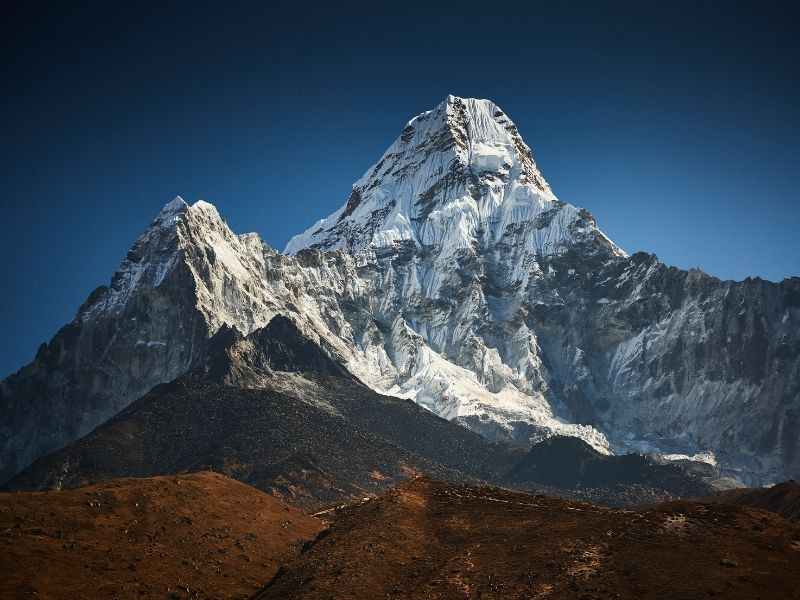
Mount Everest Region

World Heritage Sites
Cookies & privacy policy.
This website uses cookies to improve your experience. Learn More
Ace the Himalaya
Trekking in Nepal, Peak Climbing, Mt Biking and Tours in Nepal, Bhutan and Tibet
- Everest Base Camp Trek - 14 Days
- EBC Trek with Helicopter Return - 12 Days
- Everest Base Camp Luxury Trek - 14 Days
- Everest Base Camp with Island Peak - 19 Days
- Everest Three Passes Trek - 20 Days
- Annapurna Base Camp Trek - 13 Days
- Annapurna Circuit Trek - 19 Days
- Ghorepani Poon Hill Trek - 9 Days
- Manaslu Circuit Trek - 15 Days
- Gokyo to Everest Base Camp Trek - 17 Days

Dashain and Tihar (Greatest Festivals of Nepalese)
Nepal is a country rich in culture and traditions. The varieties of festivals and occasions we celebrate carry their own significance. The main festivals of Nepalese are the Dashain and the Tihar which they choose to celebrate with their close friends, relatives and family.
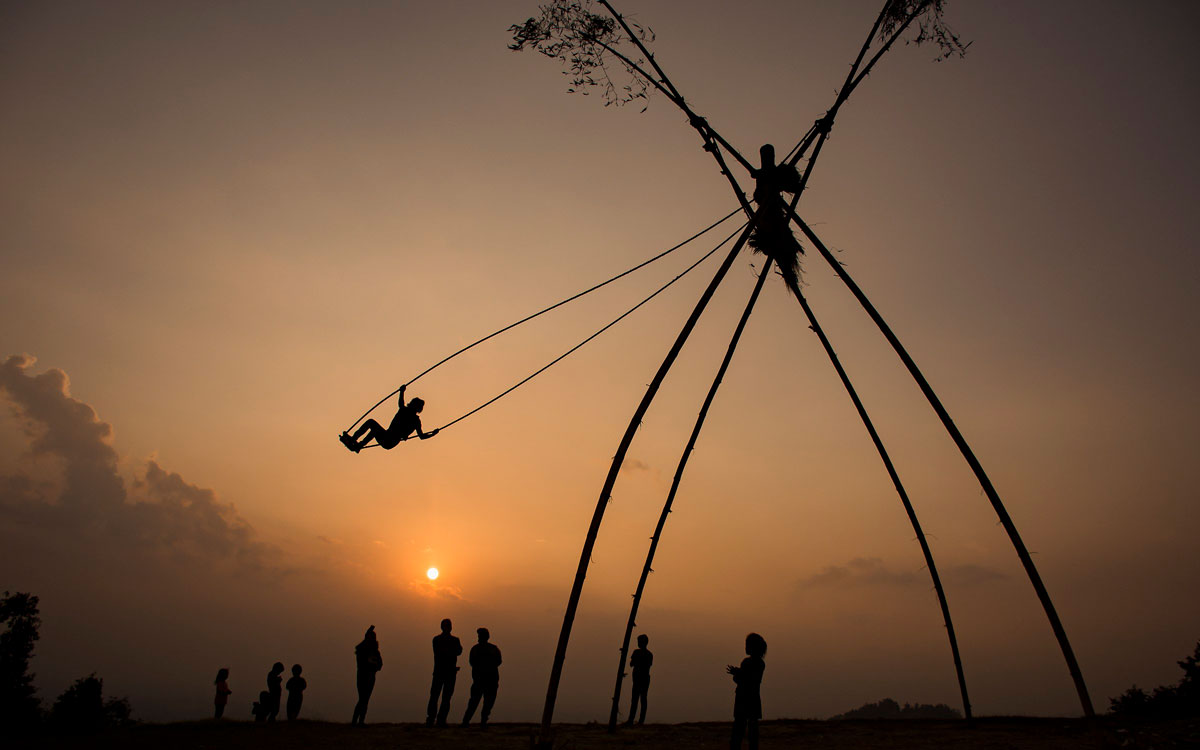
Dashain “The Greatest Festival of Nepalese”
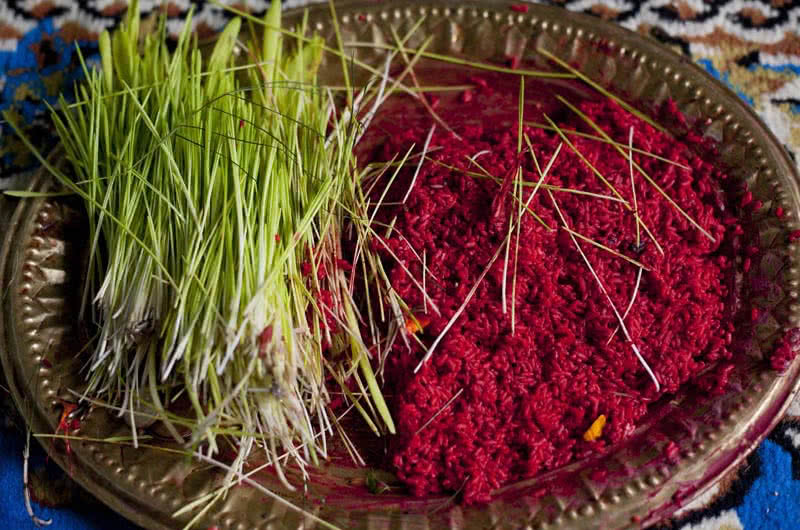
Among the festivals we celebrate, Dashain being the greatest one for Nepalese is always celebrated with the zeal and in joyful ways. It is celebrated almost for 15 days in the month of October; 1st, 7th, 8th, 9th and 10th days are the most important.
The 1st day is welcomed following the rituals of ‘Ghatsthapana’ by worshiping Goddess Durga for 9 consecutive days. The main day is called ‘Dashami’ which is also known as ‘Vijaya Dashami’, the day when Goddess Durga got victory over the demons. On this day the seniors of the family put ‘Tika’ and ‘Jamara’ giving blessings to their younger ones.
The special money given to the younger ones is received as ‘Dakchhina’. This day is like a family reunion where everyone enjoys with the varieties of food, playing cards, flying kites, etc. Dashain not only reunites the families and friends but it also gives the working people time to relax and enjoy with family.
Day 1 – Ghatasthapana: Invocation of Goddess Shailaputri:
Ghatasthapana marks the initiation of Dashain with the establishment of the sacred kalash (water-filled vessel). Goddess Shailaputri, the first manifestation of Goddess Durga, is worshipped on this day. She represents new beginnings and embodies the power of nature. Devotees seek her blessings for a prosperous and fruitful festival.
Day 2 – Dwitiya: Adoration of Goddess Brahmacharini:
On Dwitiya, Goddess Brahmacharini is revered. She symbolizes dedication, purity, and self-discipline. Worshipping her encourages devotees to embrace righteous paths and attain spiritual enlightenment.
Day 3 – Tritiya: Devotion to Goddess Chandraghanta:
Goddess Chandraghanta, worshipped on Tritiya, showcases her bravery and grace. Her half-moon-adorned forehead inspires courage. By honoring her, individuals seek protection from negativities and inner strength to overcome challenges.
Day 4 – Chaturthi: Reverence for Goddess Kushmanda:
Chaturthi is dedicated to Goddess Kushmanda, the creator of the universe. She radiates cosmic energy and blesses devotees with vitality and well-being. Her worship signifies the importance of energy and life force.
Day 5 – Panchami: Praise of Goddess Skandamata:
Goddess Skandamata, worshipped on Panchami, is the mother of Lord Skanda (Kartikeya). She represents motherly love and protection. Devotees seek her blessings for nurturing relationships and safeguarding their loved ones.
Day 6 – Shashthi: Reverence for Goddess Katyayani:
Goddess Katyayani, revered on Shashthi, epitomizes strength and courage. She is the warrior goddess who defeats evil forces. Worshipping her instills determination and the will to overcome adversities.
Day 7 – Saptami: Adoration of Goddess Kalaratri:
Goddess Kalaratri, worshipped on Saptami, embodies the fierce and destructive form of Durga. She annihilates darkness and negativity, paving the way for light and positivity in life. Her worship symbolizes the victory of good over evil.
Day 8 – Ashtami: Worship of Goddess Mahagauri:
On Ashtami, Goddess Mahagauri is venerated. She radiates purity and grace, signifying the triumph of righteousness. Her worship purifies the mind and soul, granting inner peace and spiritual growth.
Day 9 – Navami: Devotion to Goddess Siddhidatri:
Goddess Siddhidatri, worshipped on Navami, grants divine knowledge and spiritual enlightenment. She blesses devotees with achievements and accomplishments, both material and spiritual. Her worship symbolizes the culmination of the Navadurga manifestations.
Day 10 – Dashami (Vijaya Dashami): Celebration of Goddess Durga’s Victory:
Vijaya Dashami is the pinnacle of Dashain, honoring Goddess Durga’s victory over the demon Mahishasura. She represents the ultimate power of femininity and the vanquisher of evil forces. On this day, families come together to seek her blessings through the Tika and Jamara ceremony, symbolizing the triumph of good over evil.
Tihar “The Festival of Lights”
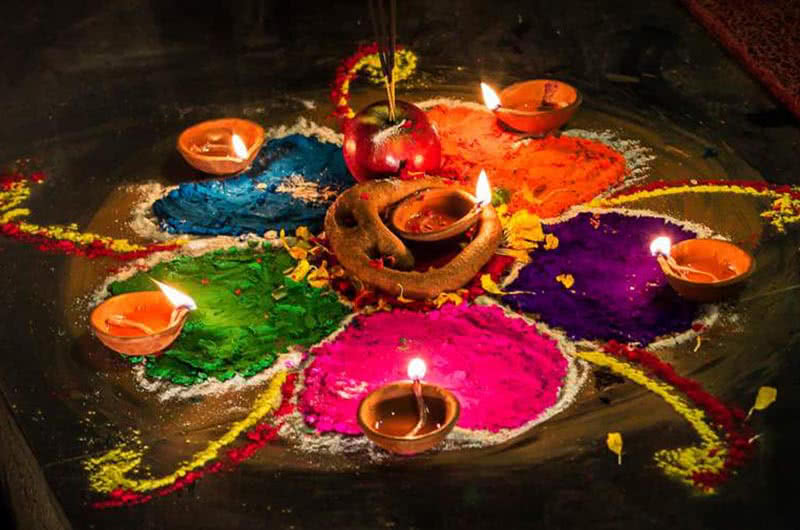
The festival usually falls in the month of October or November, celebrated for five days worshiping 4 different animals i.e. Kaag Tihar (Crow Tihar), Kukur Tihar (Dog Tihar), Gai Tihar (Cow Tihar)- the main day to worship the goddess of wealth, Laxmi, Goru Tihar (Ox Tihar) and the 5th day is celebrated as ‘ Bhaitika ’ which signifies and carries great importance for the love and concern between brothers and sisters.
The sisters put the seven colors Tika on the brother’s forehead and pray for their longer life and progress. Tihar always brings excitement and jolly mood in the families and friends; playing ‘Deusi-bhailo’ and trying the best to welcome goddess Laxmi, who is believed to bring the happiness and wealth in the life of everyone.
Related Blogs & Articles
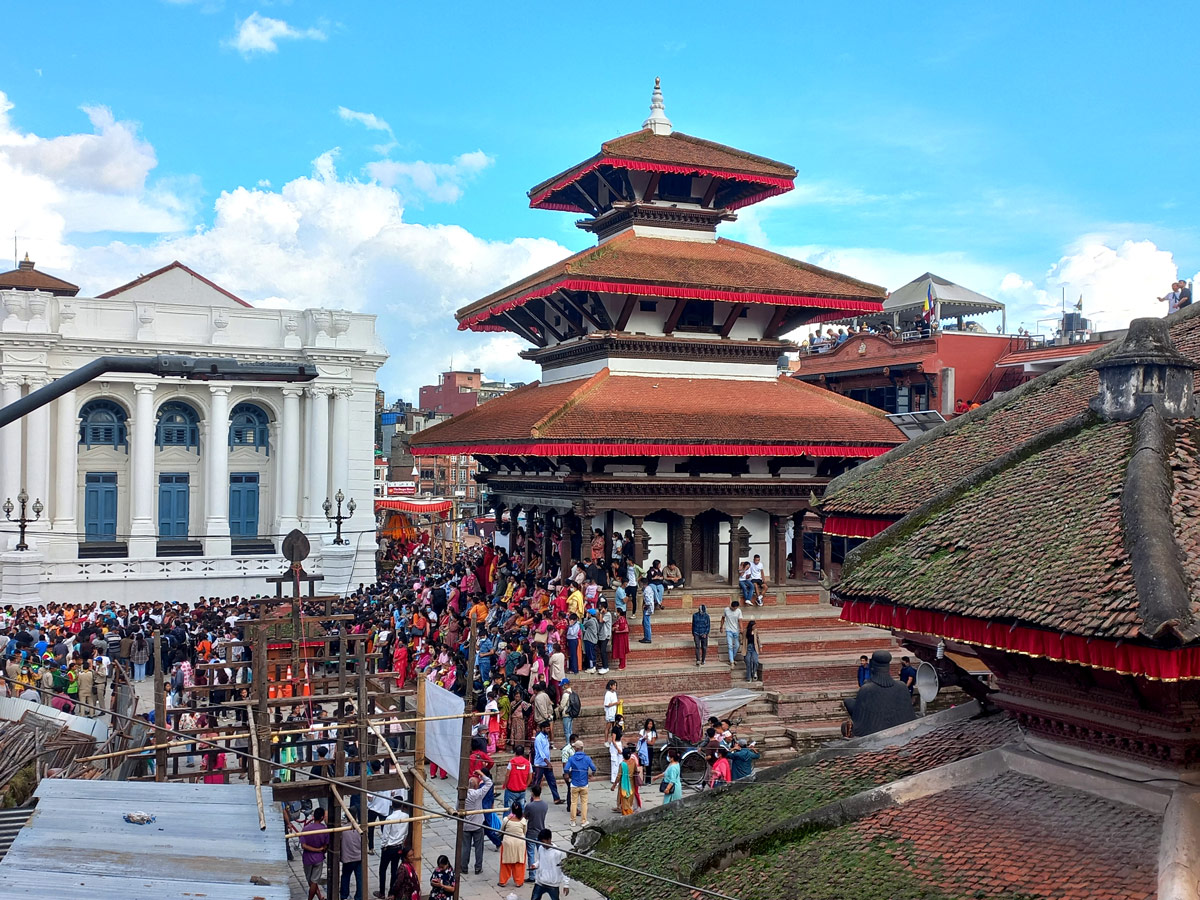
Jatras of Kathmandu Valley
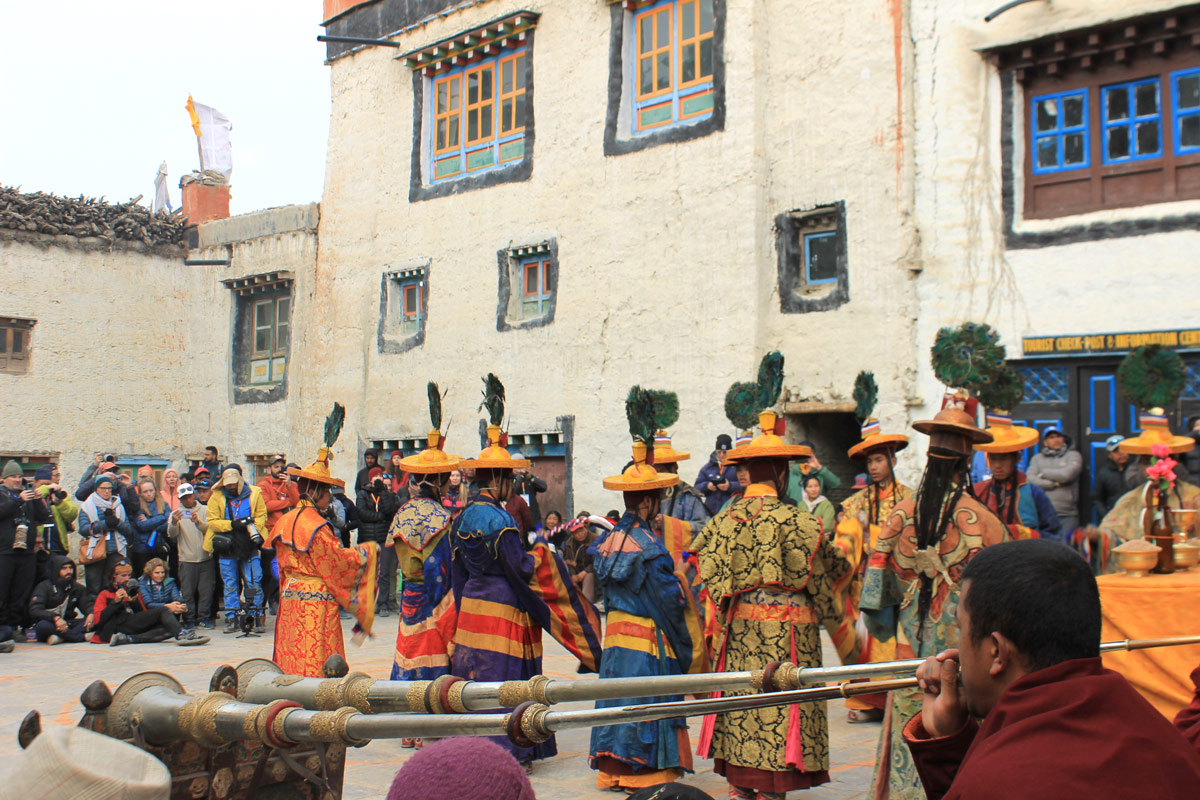
Tiji Festival in Upper Mustang
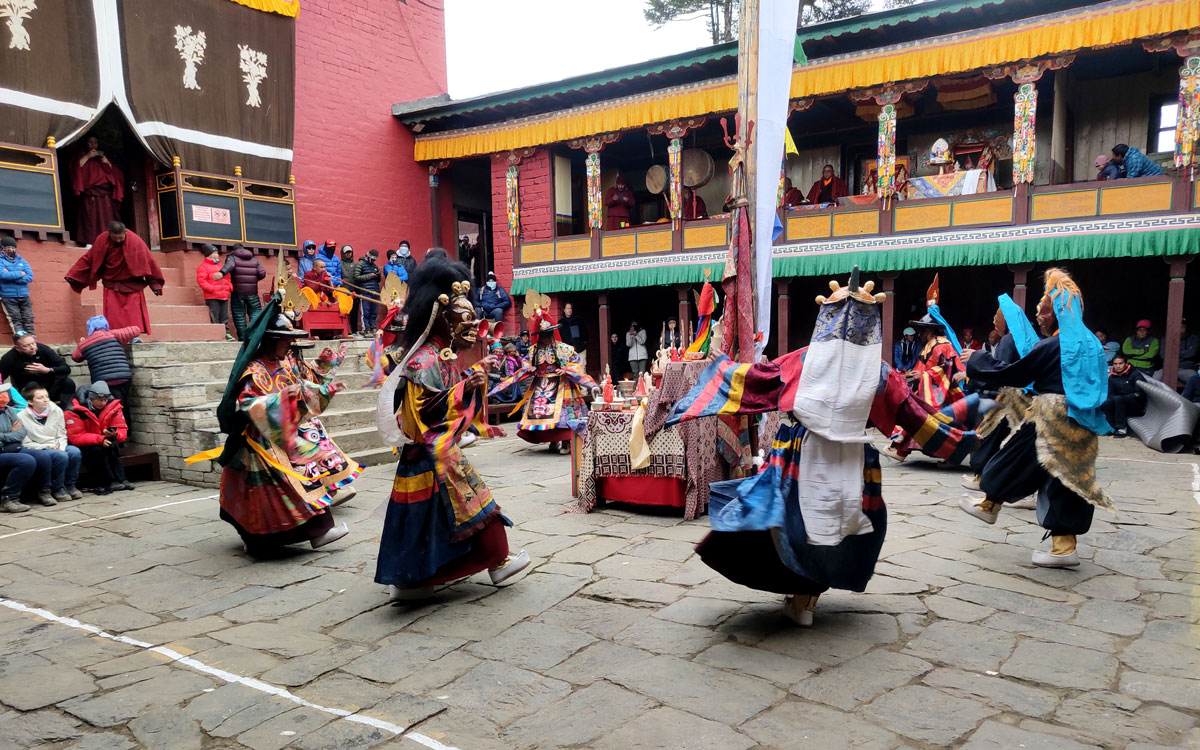
Mani Rimdu – Buddhist Festival at Tengboche Monastery

- Email This field is for validation purposes and should be left unchanged.
Trekking in Nepal
Climbing and expedition, cultural tour and sightseeing, cycling and mountain biking, luxury treks, luxury tours, multi country tours, voluntourism trips, extend your trip.
- Everest Base Camp Heli Trek – 8 Days
- Everest Panorama Trek – 9 Days
- EBC Trek with Helicopter Return – 12 Days
- Everest Base Camp Trek – 14 Days
- Gokyo Lake Trek – 13 Days
- Gokyo and Renjo La Pass Trek – 14 Days
- Everest Base Camp Trek without Lukla Flight – 17 Days
- Gokyo to Everest Base Camp Trek – 17 Days
- Everest Base Camp with Island Peak – 19 Days
- Everest Three Passes Trek – 20 Days
- Everest High Passes and Island Peak – 23 Days
- Classical Everest Base Camp Trek – 21 Days
- Langtang Valley Trek – 10 Days
- Langtang Valley Ganja La Pass Trek – 14 Days
- Langtang Helambu Trek – 17 Days
- Ghorepani Poon Hill Trek – 9 Days
- Mardi Himal Trek – 10 Days
- Annapurna Base Camp Trek – 13 Days
- Himalayan Highlights – 13 Days
- Nar Phu Valley Trek with Annapurna Circuit – 18 Days
- Annapurna Circuit Trek – 19 Days
- Tilicho Lake Trek With Thorong La Pass – 19 Days
- Khopra Danda Trek – 11 Days
- Shivapuri-Chisapani Trek – 4 Days
- Upper Mustang Trek (Drive & Trek) – 16 Days
- Tsum Valley Trek – 16 Days
- Manaslu Circuit Trek – 15 Days
- Dhaulagiri Circuit Trek – 21 Days
- Upper Dolpo Trek – 25 Days
- Kanchenjunga Base Camp Trek – 29 Days
- Yala Peak Climbing – 13 Days
- Island Peak Climbing – 15 Days
- Mera Peak Climbing – 19 Days
- Everest Base Camp and Lobuche East – 18 Days
- Tent Peak Climbing with Annapurna Base Camp – 18 Days
- Pisang Peak and Thorung La Pass – 21 Days
- Ama Dablam Expedition – 29 Days
- Kathmandu Cultural Heritage Tour – 3 Days
- Kathmandu Heritage – 3 Days
- Inheritances of Kathmandu – 4 Days
- Glimpses of Kathmandu & Nagarkot – 5 Days
- Kathmandu and Pokhara Unveiled – 5 Days
- Explore Kathmandu – 6 Days
- Glimpse of Nepal – 8 Days
- Nepal Heritage Tour – 10 Days
- Nepal Adventure Tour – 11 Days
- Nepal Multi Sports Adventure – 11 Days
- Nepal Vista – 10 Days
- Nepal Highlights – 14 Days
- Experience Nepal – 15 Days
- One Day Biking Trip – Kathmandu – 1 Day
- Annapurna Circuit Biking – 14 Days
- Upper Mustang Biking – 16 Days
- Kathmandu Valley Rim Biking – 8 Days
- Annapurna in Luxury – 9 Days
- VVIP Everest Base Camp Trek – 10 Days
- Everest View Luxury Trek – 11 Days
- Everest Base Camp Luxury Trek – 14 Days
- Everest Base Camp Deluxe Trek – 16 Days
- Mt Everest Base Camp to Gokyo Trek – 19 Days
- Kathmandu Luxury Tour – 3 Days
- Kathmandu and Pokhara Luxury Tour – 5 Days
- Nepal Multi Sport Luxury Adventure – 11 Days
- Best of Nepal – 14 Days
- Trishuli River Rafting – 1 Day
- Everest Base Camp Helicopter Tour – 1 Day
- Everest Base Camp Heli Tour with Gokyo Extension – 1 Day
- Langtang Heli Sightseeing – 1 Day
- Pokhara and Annapurna Heli Sightseeing – 1 Day
- Paragliding in Nepal (Pokhara) – 1 Day
- Scenic Mountain Flight (Everest Flight) – 1 Day
- Ultra Light Flight – 1 Day
- Jamacho Day Hike-One day hiking trip – 1 Day
- Kathmandu Uncovered with Nagarkot – 1 Day
- Day Tour to UNESCO Heritage Sites – 1 Day
- Nepal and Tibet – 15 Days
- Nepal and Bhutan – 15 Days
- India, Nepal and Bhutan – 19 Days
- Nepal, Tibet and Bhutan – 20 Days
- Arupokhari School Volunteer Program – 14 Days
- Rebuild Home Volunteer Program – 9 Days
- Bardiya Jungle Safari – 4 Days
- Chitwan Jungle Safari – 3 Days
Trekking in Bhutan
Festival tours, motorcycling.
- Druk Path Trek – 8 Days
- Chomalhari Trek – 12 Days
- Laya Ghasa Trek – 18 Days
- Bhutan Vistas Tour – 5 Days
- Cultural Heartland Tour – 10 Days
- Hidden Valley – 11 Days
- Bhutan Multi Sports Tour – 11 Days
- Paro Tshechu Festival – 8 Days
- Punakha Tsechu – 9 Days
- Trongsa Lhuntse Tshechu – 9 Days
- Bumthang Tangbi – 11 Days
- Bhutan Ura Yakchoe – 12 Days
- Tamshingphala Choepa – 12 Days
- Mongar and Trashigang – 16 Days
- Bhutan Biking – 8 Days
- Bhutan Motorcycle Tour – 12 Days
Trekking in Tibet
- Tibet Advance Everest Base Camp – 21 Days
- Cho Oyu Expedition – 45 Days
- Shishapangma Expedition – 47 Days
- Everest Expedition via North Side – 63 Days
- Lhasa Tour from Kathmandu – 10 Days
- Lhasa Overland Tour from Kathmandu – 13 Days
- Kathmandu to Lhasa Overland Tour with EBC – 15 Days
- Tibet Tour with Everest Base Camp via Lhasa – 15 Days
- Mount Kailash Mansarovar Lake Tour – 16 Days
- Everest Base Camp Biking Tour – 21 Days

Dashain: Let’s celebrate the largest and longest festival in Nepal
by Editor | Oct 19, 2015 | News

Dashain (aka Bada Dashain or Vijaya Dashami) is the largest and longest Hindu festival, celebrated mainly in Nepal. The Dashain festival lasts for fifteen days and begins on the day of Ghatasthapana and finishes in the day of Kojagrat Purnima. Throughout the fifteen days, the Nepalese Hindus carry out many ceremonies and traditions as a community. The Dashain festival usually begins in October (Ashoj or Kartik in the Nepalese calendar) and is the longest public holiday in Nepal, All schools, offices and governmental offices are closed throughout the 15-day period of the festival!
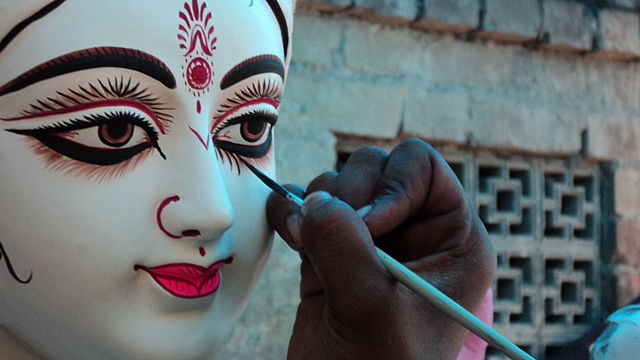
The festival celebrates the various victories of Hindu Gods over Demons, such as lord Ram defeating Ravan in a duel and Goddess Durga defeating the buffalo-demon Mahisasur, as well as many other demons. The festival as a whole is the celebration of the triumph of good over evil and the stories are told throughout the ceremony to provide moral examples to the community.
Some of the activities throughout Dashain are having fiesta-style parties, enjoying home-cooked meals and flying kites, to represent freedom. The festival usually ties in with the end of the Monsoon season, and some natives believe flying kites will communicate to God to end the rainfall season! People sacrifice a lot of animals in this festival, most of which are the goats, sheep, chicken or buffaloes. The trend of sacrificing animals however, is changing towards fruits and vegetables, as the animals slaughter is nowhere mentioned in the Hindu scriptures and the animal right activists strongly condemn it. Some of they key days during Dashain are:
Day 1 (Ghatasthapana) Ghatasthapana is the first day of Bada Dashain. A male family member will plant jamara (usually barley seeds) in moist sand. By the tenth day of the festival, the seeds will have grown to yellow grass, which is used with tika to bless people with prosperity and happiness.
Day 7 (Fulpati) The special essence of festival gets from this day. On this auspicious day, a military parade is organized at Hanuman Dhoka. The Nepal Army, Nepal Police, Civil Service, Band Music and Panchebaja also join the fulpati parade. People clean their houses and decorate their houses with flowers. Today (19th of Oct) is Fulpati, and most of the festivities in our home s we will be taking places today! In our Dhading home, the kids will be flying kites, playing on the traditional swing and finishing the day off with a barbeque and a trip to the cinema! The children from our Birgunj home will be starting the day with Puja (prayers), followed by kite flying and a trip to the Parwanipur market, where there will be a huge fair!

Day 8 (Maha Ashtami) The festive will be continued as Maha Ashtami. Thousands of goats, sheep, buffaloes, ducks and hens are sacrificed in Goddess Temple almost from every home. In Newar Community, Kuchi Bhoe is prepared in which ritually people should eat two pathi of beaten rice including various types of dishes in a banana leaf.
Day 9 (Maha Nawami) The ninth day of the festival is known as Maha Nawami. On this day, the Taleju Temple gates of Basantapur are accessible to the general public. Thousands of devotees go and pay respect to the goddess all along the day. This day is also known as Viswakarma day.
Day 10 (Tika/Vijaya Dashami) The tenth day of festival is known as Vijaya Dashami or “Tika”. On this auspisous day, tika and jamara (which is sewn in day 1) are taken from elders and blessing is received including “Dakshin” (money). These festivities continue for four days till the rising of the full moon. During that period, family and relatives, who are live apart, meet each other and take blessings from the elders.
The first 10 days of Dashain celebrates the battles fought by the Gods/Goddesses. The following 5 days celebrates the victories and more fiesta-style parties are held during this period! We look forward to see how our kids in the home will be celebrating Dashain and we will be sure to show you all!
Sources used throughout this blog post include: http://www.ashesh.com.np/ http://www.drikpanchang.com/ kathmandupost.ekantipur.com
For more information on Dashain please see the links above. Thank you for reading this blog post and continuing to support Our Sansar!
Recent Posts
- End to Child Marriage
- One donation, Twice the Impact!
- Our Sansar are finalists in the .ORG Impact Awards!
- Our Sansar wins at the Charity Awards 2023
- We’ve made it to the top 3!
- October 2023
- November 2022
- November 2021
- February 2021
- January 2021
- December 2020
- November 2020
- October 2020
- September 2020
- August 2020
- October 2017
- September 2017
- August 2017
- December 2015
- November 2015
- October 2015
- August 2015
- January 2015
- December 2014
- October 2014
- August 2014
- February 2014
- January 2014
- December 2013
- November 2013
- October 2013
- September 2013
- August 2013
- January 2013
- December 2012
- November 2012
- August 2012
- January 2012
- October 2011
- September 2011
- December 2010
- October 2010
- October 2009
- September 2009
- Fundraising
- Team Member
- Uncategorized
- Volunteering
- Entries feed
- Comments feed
- WordPress.org
Privacy Overview
Want to hear how our projects and the children are getting on? Join our mailing list to stay up to date and hear our latest news.
- Joanna Gaines Ethnicity, Age, Height, Relationship, Biography, Net Worth
- 15 Shocking Facts about Nepal Which You Might Not Know
5 Best Reasons to Visit Boudhanath Stupa, Kathmandu – Nepal
- How to get to Nepal by Air? Best Flight Route to Nepal
World Of Nepal
Trending News

Destination
Category collection.

Essay on Dashain: The Festival of Unity
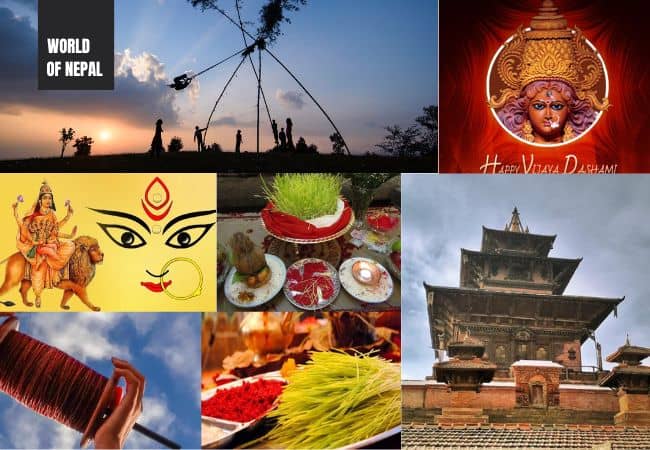
Biggest Festival of Nepali People – Dashai [2024 Updated]
Dashain represents unity, the win of truth, and the start of happiness. It generally falls in the Nepali month of Ashwin (September). This festival starts from Ghatasthapana and ends on the day of Vijaya Dashami. On the first day of Dashain, i.e. Ghatasthapana, people grow seedlings Known as, Jamara in the holy corner of their homes.
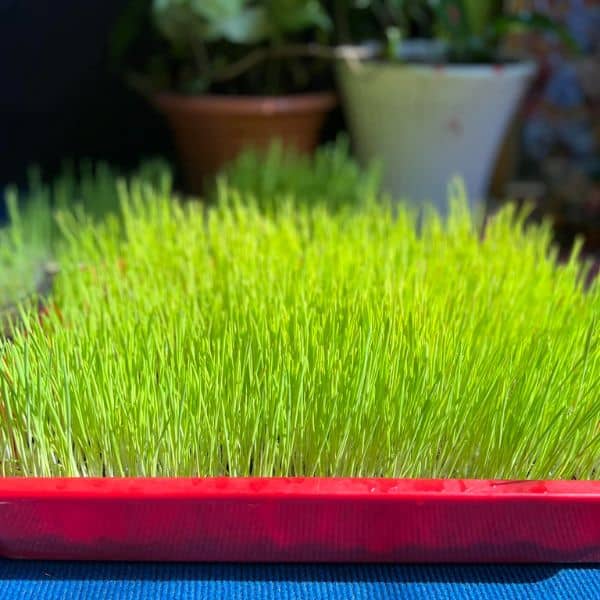
The first nine days of the festivals are known as Navaratri, where the goddess Durga is worshipped. The seventh day i.e. Fulpati is the day when the priest helps to bring the Jamara from the Gorkha Durbar to Hanuman Dhoka in Kathmandu. From the day of Fulpati until the ninth day, people offer goats, ducks, buffaloes, and other birds or animals as sacrifices to Goddess Durga. The tenth day or Vijaya Dashami is the main Tika Festival of Dashain.
The Taleju Temple, which is normally closed on the other day, is open once a year on the ninth day. Many worshippers visit the goddess to pay respect, all day long the temple is filled with worshippers.
Table of Contents
Day 10: Bijaya Dashami
On the main day of the festival i.e. Vijaya Dashami , people put Tika (made from red-colored rice seeds) on their forehead and Jamara on their head, receiving blessings for good health, long life, happiness, wealth, and prosperity. Elders bless younger relatives and give them Dakshina. The tradition of putting tika from all elderly relatives (even distant relatives) helps in the renewal of the community toes greatly. This is one of the reasons for the festivals for the strong and positive celebration.
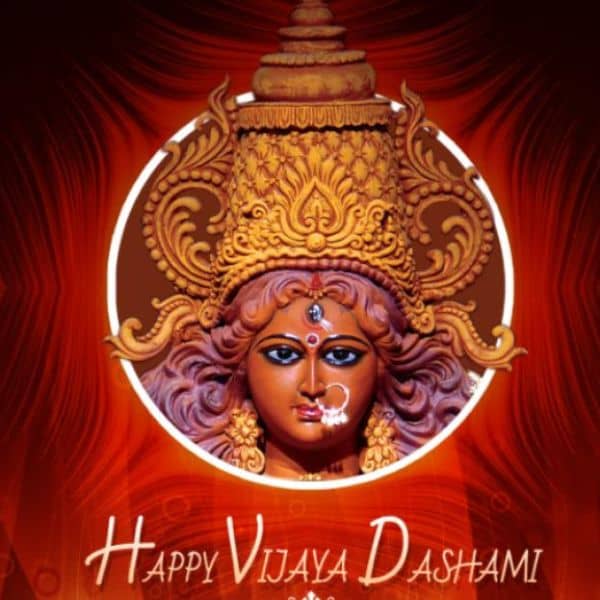
Dashain is a festival where families come together to celebrate and have fun. Schools, offices, and businesses are closed and the people who live far away return home to celebrate with their family.
When was Dashain Tika in 2023?
What is the biggest festival in Nepal?
Dashain is one of the most important 15-day-long festivals celebrated in Nepal.
How many days do we celebrate Dashain?
Dashain is an auspicious festival which is celebrated for fifteen days throughout the country.
Destination: Olanchito: A Beautiful City in Honduras || Tourists Destination
Hi, I’m Sandika Rijal, and I have been working as a Content Creator for the last 2 years. I will be writing about my beautiful country Nepal, and its famous places, and people. Hope you will enjoy reading my articles!
Leave a Reply Cancel reply
Your email address will not be published. Required fields are marked *
Save my name, email, and website in this browser for the next time I comment.
Related News
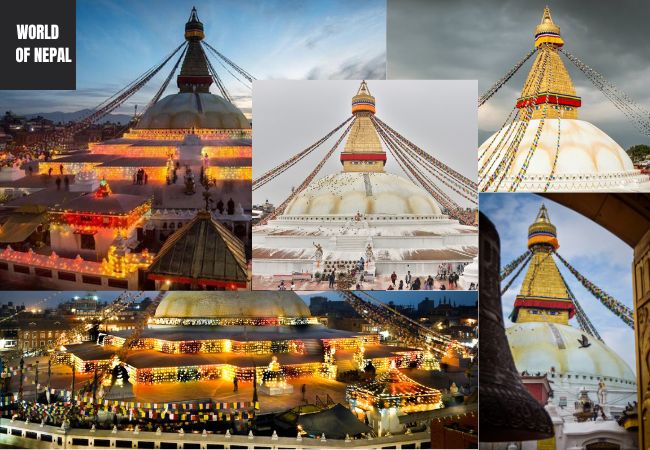
eKantipur Hosted Online Education Expo- A very first online Exhibition in Nepal
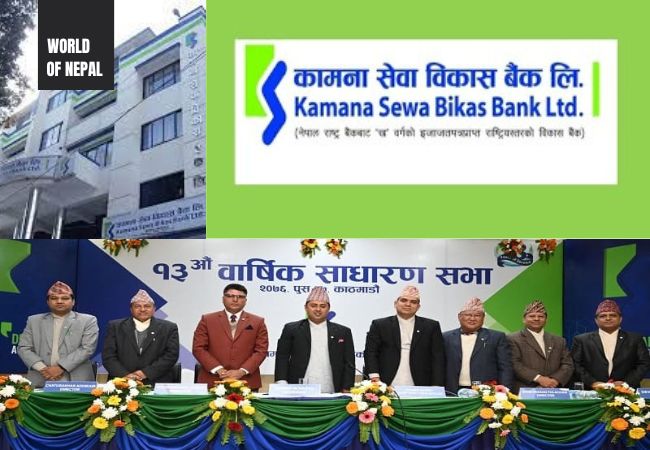
More New 3 Branches Of Kamana Sewa Bikas Bank In Chitwan District
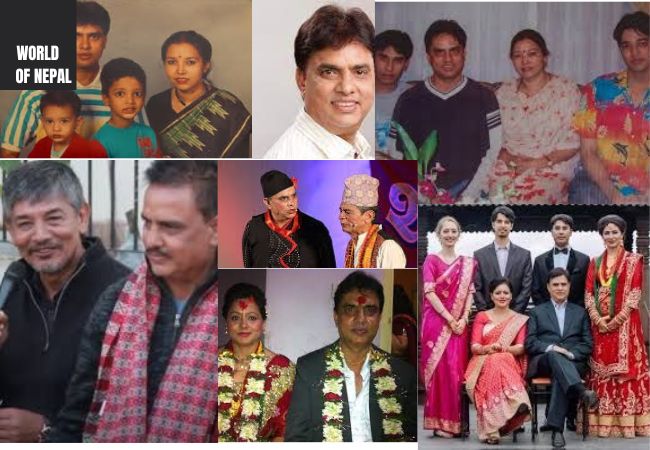
Hari Bansha Acharya Wiki, Bio, Ex-Wife, Mahapurush [Updated 2024]
- My Playlists

- Alumni Ambassadors
- Alumni Profiles
- Alumni Webcasts
- Performances
- Online Learning and Teaching Conference 2020
- Online Learning Instructors
- Upward Magazine
- Career Center
- Devotional Promos
- Devotional: ASL
- Hour with the Eyrings
- Special Events - Authenticated
- Special Events Unauthenticated
- Commencement
- Audio Recordings
- Campus Buildings
- Housing & Student Living
- Major Discovery
- I-Belong (Officers)
- Online Learning
How to Create a Clearly Structured Essay Outline | Scribbr 🎓
Related media.

IMAGES
VIDEO
COMMENTS
Dashain festival is one of the greatest festivals in Nepal. It is celebrated with great joy and jubilation. Dashain is celebrated by the Hindu followers all over Nepal. It is the festival that brings happiness and delivers the message of unity among people. This festival signifies unity, the victory of truth, and the inception of happiness.
Essay on Dashain in english language. Dashain, also known as Vijaya Dashami, is the biggest and most important festival celebrated in Nepal. It is a fifteen-day-long festival that falls in the months of September and October, and it is celebrated with great enthusiasm and fervor by people of all age groups and social backgrounds in Nepal.
Dashain is also called 'Bada Dashain' or ' Vijaya Dashami'. It is generally celebrated by the Hindus in the months of Ashwin or Kartik of Nepali year or October according to the lunar calendar. Dashain is celebrated as the symbol of victory of virtue or truth over sin or falsity. According to Hindu Mythology, the Dashain festival has been ...
Dashain or Bada'dashain, also referred as Vijaya Dashami in Sanskrit, is a major Hindu religious festival in Nepal and the Indian states of Sikkim, West Bengal, Assam, South India, and Sri Lanka. [2] It is also celebrated by Hindus of Nepal and elsewhere in the world, [3] including among the Lhotshampa of Bhutan [4] and the Burmese Gurkhas of Myanmar.The festival is also referred as Nauratha ...
41 Samples Essay on Dashain in 50 Words in English For Kids Students. Dashain is Nepal's biggest and maximum critical holiday. It's a time of awesome happiness and birthday celebration, especially for youngsters. This lively vacation lasts for fifteen days and celebrates the triumph of good over evil, which is represented by way of the ...
Essay on Dashain 300 Words. In Nepal, the most significant celebration of Hinduism is called Dashain. It has several names, including Vijaya Dashmi, Dashsera, Durga Puja, and Dasain. The celebration begins on the first day of October and continues for more than 15 days, during which time it is celebrated with equal parts devotion and enthusiasm.
Dashain: Everything you need to know Dashain Dashain is one of the famous and most significant festivals in Nepal that is typically known as Bada Dashain(वडादशैँ) or Vijaya Dashami(विजयादशमी) in Sanskrit. It is an influential Hindu religious festival memorialized in Nepal and miscellaneous Indian states like Sikkim, West Bengal, Assam, and South India.
Dashain is an occasion for celebration both socially and religiously. Goodwill and peace are the underlying themes of the occasion. 50, 100, 200, & 500 Words Essay on Draupadi Murmu in English. 300, 400, And 500 Words Essay On Azadi ka Amrit Mahotsav in English.
Essay on Dashain Festival - 900+ Words With the variety of cultures and traditions in Nepal, there are also many festivals that come along with it. Nepal especially is a Hindu country with most of ... How to Write an Essay Fast: Essay Writing Guide? February 15, 2022 July 26, 2022 Greeting Lines 1. Essay on Sonam Losar (Lhosar) Festival .
Essay on Dashain festival of Nepal [325 words] Dashain festival of Nepal being predominantly home to several religious castes, cultures, and other religions, Nepal was called as a Hindu country till today. Dashain is an auspicious Hindu festival celebrated with pomp and show at the early of October. It is also called "Vijaya Dashami, "Bada ...
Dashain is a Hindu festival. It is also known as Bada'dashain or Bijaya Dashami in Sanskrit. It to commemorate the day the goddess Durga killed demons known as Mahishasura - who were killing the world of the gods, the devaloka. People celebrate this festival for 7 days. The people celebrates this festival by rejoicing among relatives ...
Dashain, also known as "Bada Dashain" or "Bijaya Dashami", is a major Hindu religious festival in Nepal. It is celebrated by Nepali Hindus around the world. The festival is also known as Nauratha, which is derived from the Sanskrit term Navaratri which signifies Nine Nights. Hindus in India also commemorate a version of this festival ...
The 15 Days of Dashain: Rituals and Traditions. Dashain, Nepal's most celebrated festival, is a 15-day extravaganza steeped in rituals, traditions, and observances, each carrying its own unique significance and symbolism. Let's embark on a journey through these 15 days, exploring the main days and their associated customs: Ghatasthapana ...
Published: Aug 30, 2022. The festival of Dashain is the most celebrated Hindu festival and symbolizes the victory of good over evil and falls in the month of September or October. The festival is celebrated for fifteen days and begins on the bright lunar moon and ends on full moon day.
Nepal's most important festival, Dashain, is celebrated with everyone's enthusiasm, sacrifice, and devotion. It is a festivity that spans fifteen days. In which families become bonded, and it is also a way of praying for wealth and success. The Dashain festival preparations started weeks before the actual Dashain festival in Nepal.
Dashain Festival, also known as Bada Dashain or Vijaya Dashami, is the largest and most significant festival in Nepal, celebrated by Nepalese people of all castes of Hindu communities. The festival usually falls in September or October, depending on the lunar calendar, and lasts for 15 days. Dashain commemorates the victory of good over evil ...
Among the festivals we celebrate, Dashain being the greatest one for Nepalese is always celebrated with the zeal and in joyful ways. It is celebrated almost for 15 days in the month of October; 1st, 7th, 8th, 9th and 10th days are the most important. The 1st day is welcomed following the rituals of 'Ghatsthapana' by worshiping Goddess Durga ...
Dashain (aka Bada Dashain or Vijaya Dashami) is the largest and longest Hindu festival, celebrated mainly in Nepal. The Dashain festival lasts for fifteen days and begins on the day of Ghatasthapana and finishes in the day of Kojagrat Purnima. Throughout the fifteen days, the Nepalese Hindus carry out many ceremonies and traditions as a community.
Day 10: Bijaya Dashami On the main day of the festival i.e. Vijaya Dashami, people put Tika (made from red-colored rice seeds) on their forehead and Jamara on their head, receiving blessings for good health, long life, happiness, wealth, and prosperity.Elders bless younger relatives and give them Dakshina. The tradition of putting tika from all elderly relatives (even distant relatives) helps ...
Dashain is the biggest Hindu festival that Nepal observes every year. It is a wonderful cultural celebration that allows people time to reunite and refresh. Dashain festival is a long celebration of fifteen days where different cultural rituals take place every day. The Nepalese society, especially the Hindu community, gives huge importance to ...
Dashain is the greatest and the most auspicious festival in Nepal. It is also the greatest festival of all Hindus. This festival usually falls in the month o...
Essay on Dashain or Vijaya Dashami | Dashain essay | Vijaya Dashami essay | writing | Eng Teach #essay #essaywriting #engteach
Essay on Dashain | Dashain essay | essay | writing | English writing | handwriting | Eng Teach Please like, comment, share and subscribe my channel. Thank yo...
An essay outline is a way of planning the structure of your essay before you start writing. In just 3 minutes, this video will show you how to organize your initial ideas into a coherent argument, order your points to support the argument, and create a clearly structured outline for your essay! ... Watch how to write an essay introduction next ...